
Бесплатный фрагмент - Tbilisi – Marneuli
Georgia 2 cities in 1 weekend
Tbilisi-Marneuli
Georgia. Two cities in one Weekend
FOREWORD
Today the trip to Georgia for our compatriots is incredibly exciting, full of impressions, bright emotions and adventures, immersion in the historical, cultural, gastronomic, natural and everyday atmosphere of this amazing country located in the Western part of Transcaucasia.
Increasingly popular in recent years are taking tours of the sights of Georgia, relatively small in size, but extremely rich in cultural flavor. Someone is going to Batumi to swim in the Black Sea and immerse themselves in the environment of the post-Soviet resort. Someone is going to Kutaisi to see historical and modern Georgia with its rapidly changing architectural decoration. Well, we will go to the main city of the country, the old and diverse city of Tbilisi, which is very difficult to visit in one weekend to cover all its types, avenues, squares and streets, but which must be at least two days long to stay here Before going deep into the country for the sake of mountains, the sea and nature.

So, we have only 2 days to go to the capital of Georgia, for which we have a goal to have an unusually long time — and to feel the rhythm of the city, and turn to the history of the country through the prism of the capital symbols of change, and immerse ourselves in the atmosphere of this people leading Its history since ancient times.
HOW TO COME TO GEORGIA?
Previously, the answer to this question was complicated. Cheap tickets were almost non-existent, and the trip by rail had its own difficulties. Today, everything has changed — and the air gates of Georgia open their doors to everyone who wants to come here for at least 2 days, at least for 2 weeks, at the cheapest prices in comparison with other countries of the former USSR.
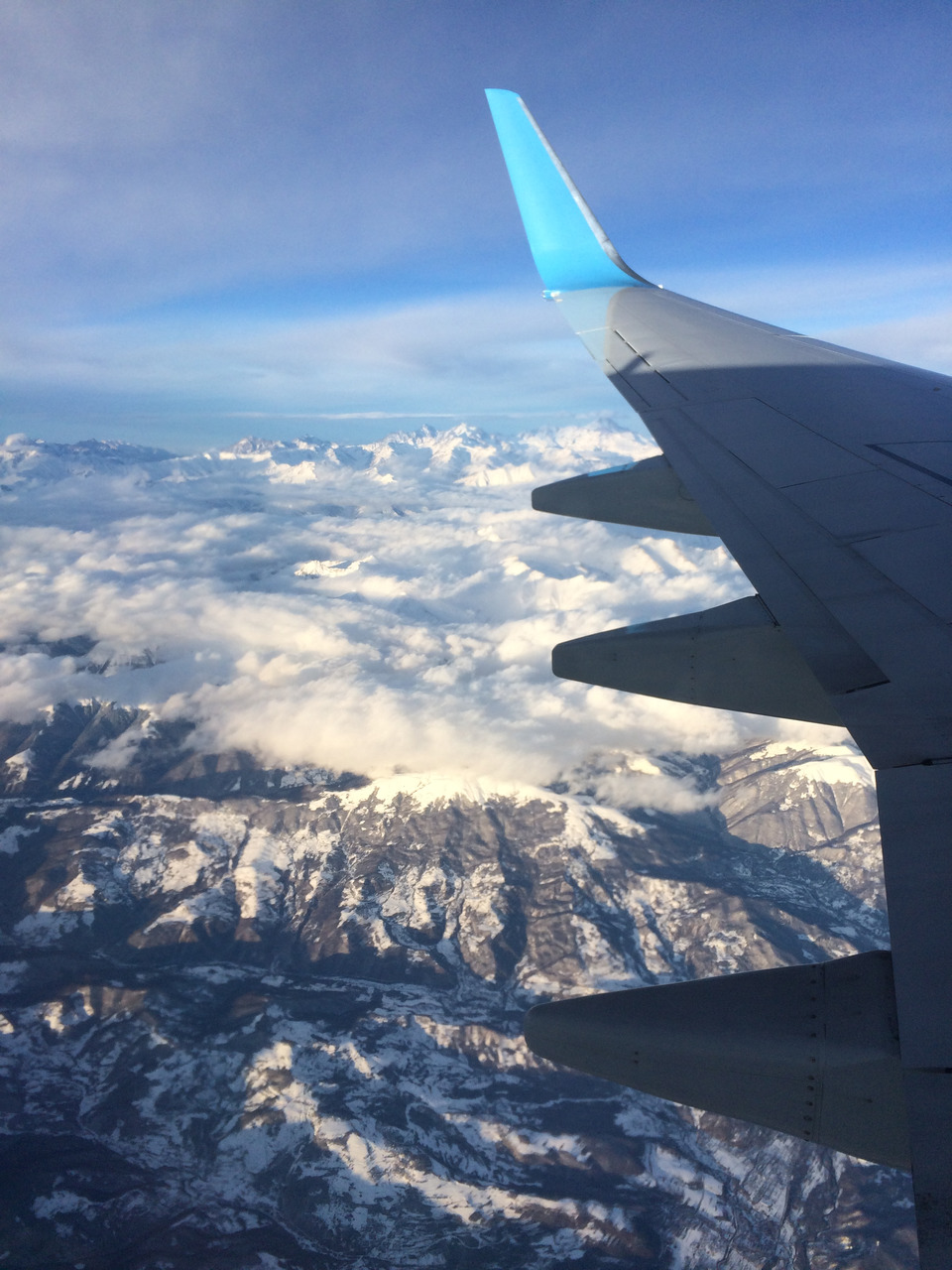
I will give just an example to show how easy it is, because the ticket from Moscow to Tbilisi and back cost me in 2017 a little more than 7 thousand rubles.
The thing is that flights of Pobeda airline flew here during this period. True, I had to make a transfer in Rostov-on-Don, and pass in the Rostov international terminal passport control, but this is a trivial matter.
It was possible to fly back on the flight of Pobeda airline, but from neighboring Armenia, the city of Gyumri. In truth, the trip to Georgia and Armenia was combined in one round, but now I will tell you in detail about the first part of this trip, but the second one is described in the book “Yerevan-Gyumri. Two cities in one weekend”, which will get you closer to the cultural and historical heritage and sights of Armenia.
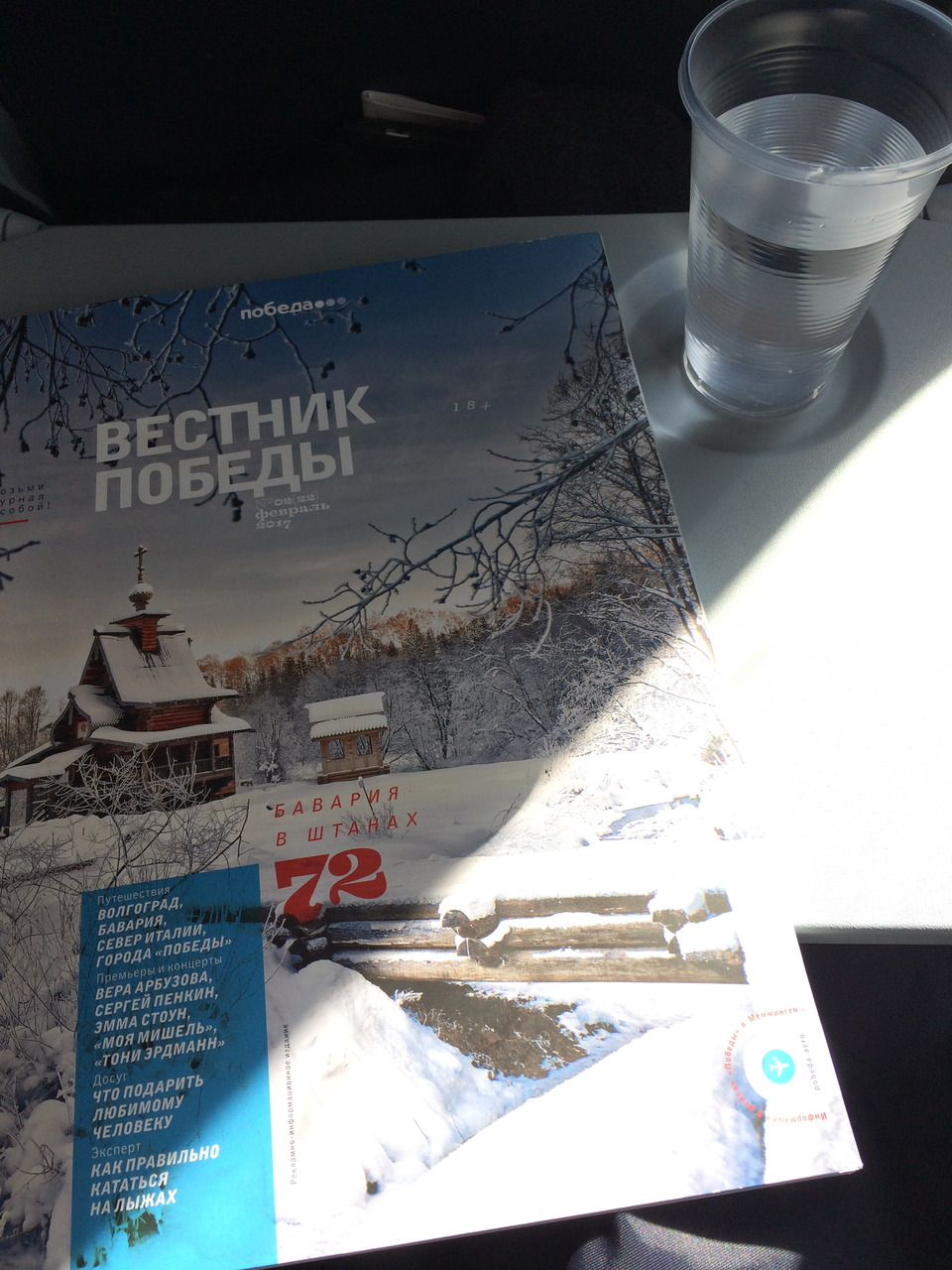
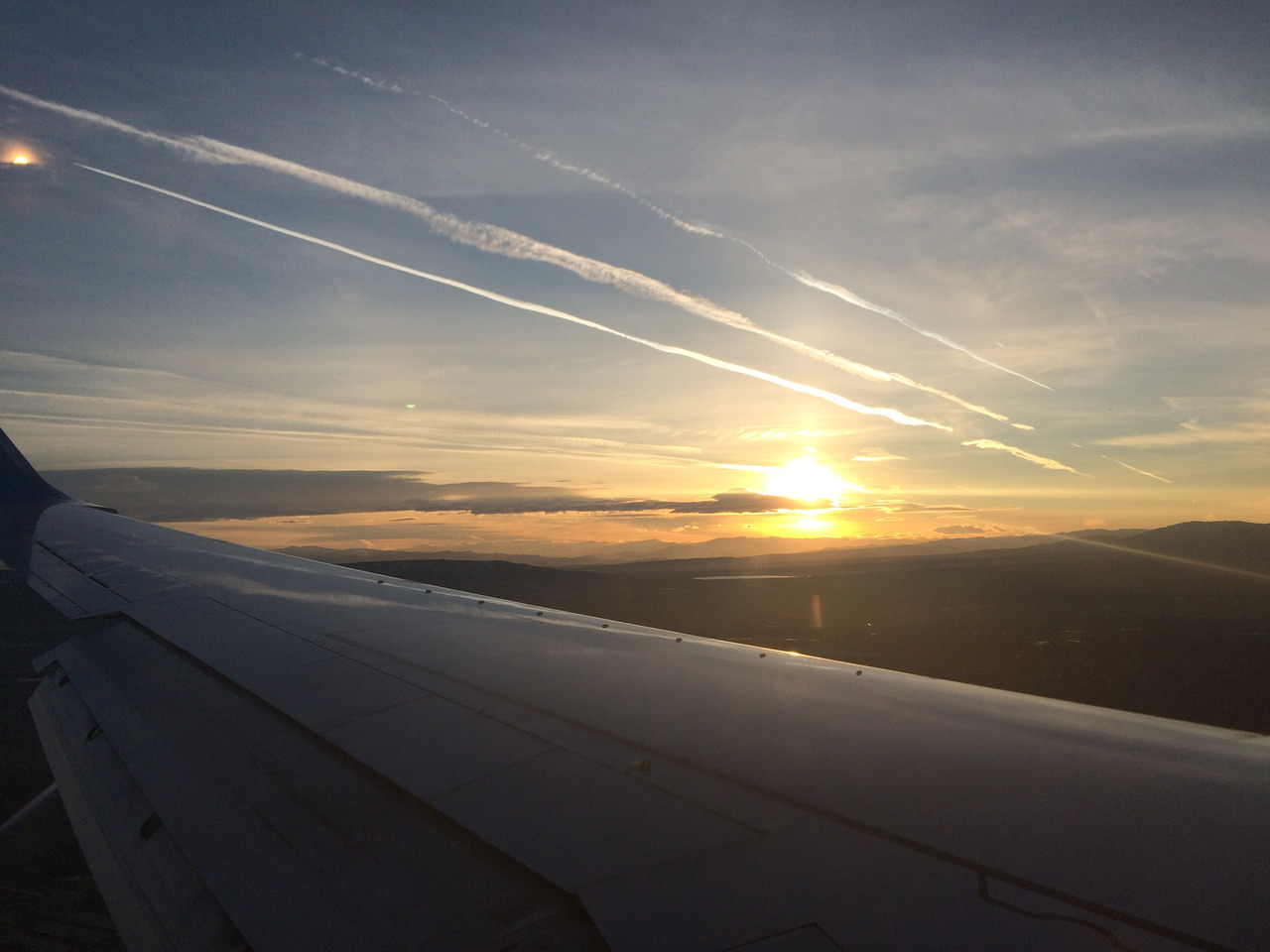
To tell you the truth, it is very easy to visit these two countries during one tour. At your disposal are trains, buses and minibuses following the Tbilisi-Yerevan route at very affordable prices. But first things first.
ABOUT COUNTRY
The modern name of Georgia, which is also considered European, comes from the name of St. George, the Orthodox patron of this country. It is interesting that the Georgians themselves call their country Sakartvelo.
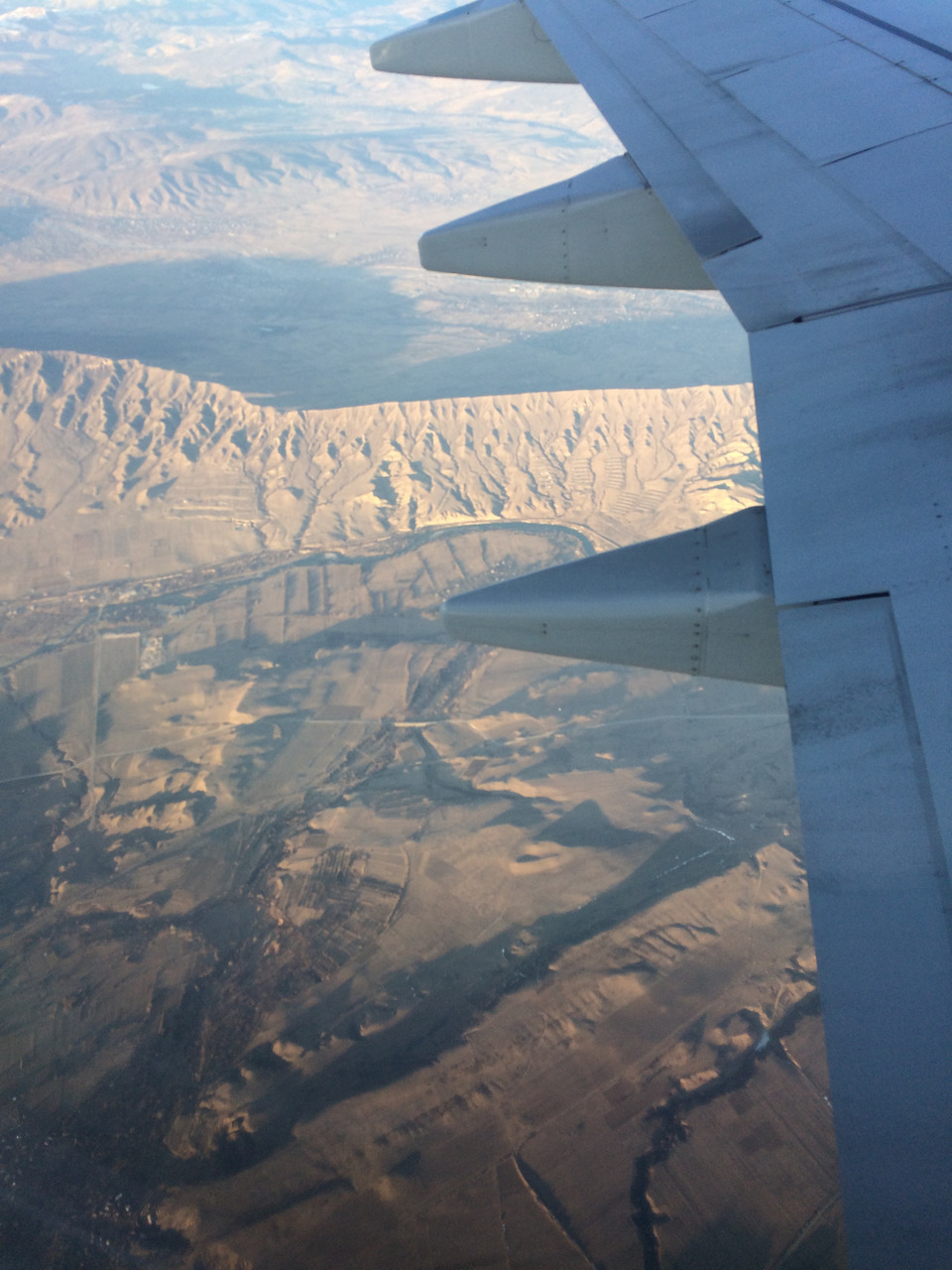
Its history, like the history of the Caucasus, is the way of the birth and development of dozens of different peoples who have lived in these places since ancient times.
1. HISTORY
It is known that even in the period of antiquity, in the VIII century BC. here the Greeks settled, and two centuries later the Anatolian tribes from Turkey came to these places. In the III century BC. here Iberian state was formed. It was adjacent to the Persian Empire, Albania, Sarmatia (the late Byzantine designation of the Eastern European tribes). Iberia is considered a pre-feudal state where free farmers and warriors lived. Iberian state had often to fight with the Roman Empire, which managed to capture these territories in the 65th year BC.
In 189 BC. the Roman army defeated the Seleucid army here, and a strong Armenian state was formed. At the turn of the 4th – 5th centuries, the western part of the Armenian state was captured by the Byzantine Empire. The Oriental got the Persians. Byzantium was able to exert great cultural influence on the population of this region. Many traditions in architecture, culture, music, fine arts, after experiencing Byzantine colonization, have survived to this day.
In the 7th century Arab Muslims came here and created a Muslim state – the emirate. Completely from the Muslim dependence, Georgia was able to free itself only in 1122.
In the Middle Ages, many times Georgia was under threat of being under the rule of the Persians or Turks, who had constant claims to this territory. Only the intervention of the Russian Empire decided for several centuries the fate of this country. In 1783, the largest of the Georgian states, the Kartli-Kakheti kingdom, signed the Treaty of St. George, which received the status of a protectorate of the Russian Empire.
In the XIX century, in the Caucasus, and in particular in Georgia, nationalist groups and parties enjoyed great popularity among the youth, in the end of the century there was Joseph Dzhugashvili, the future leader of the USSR, Joseph Stalin.
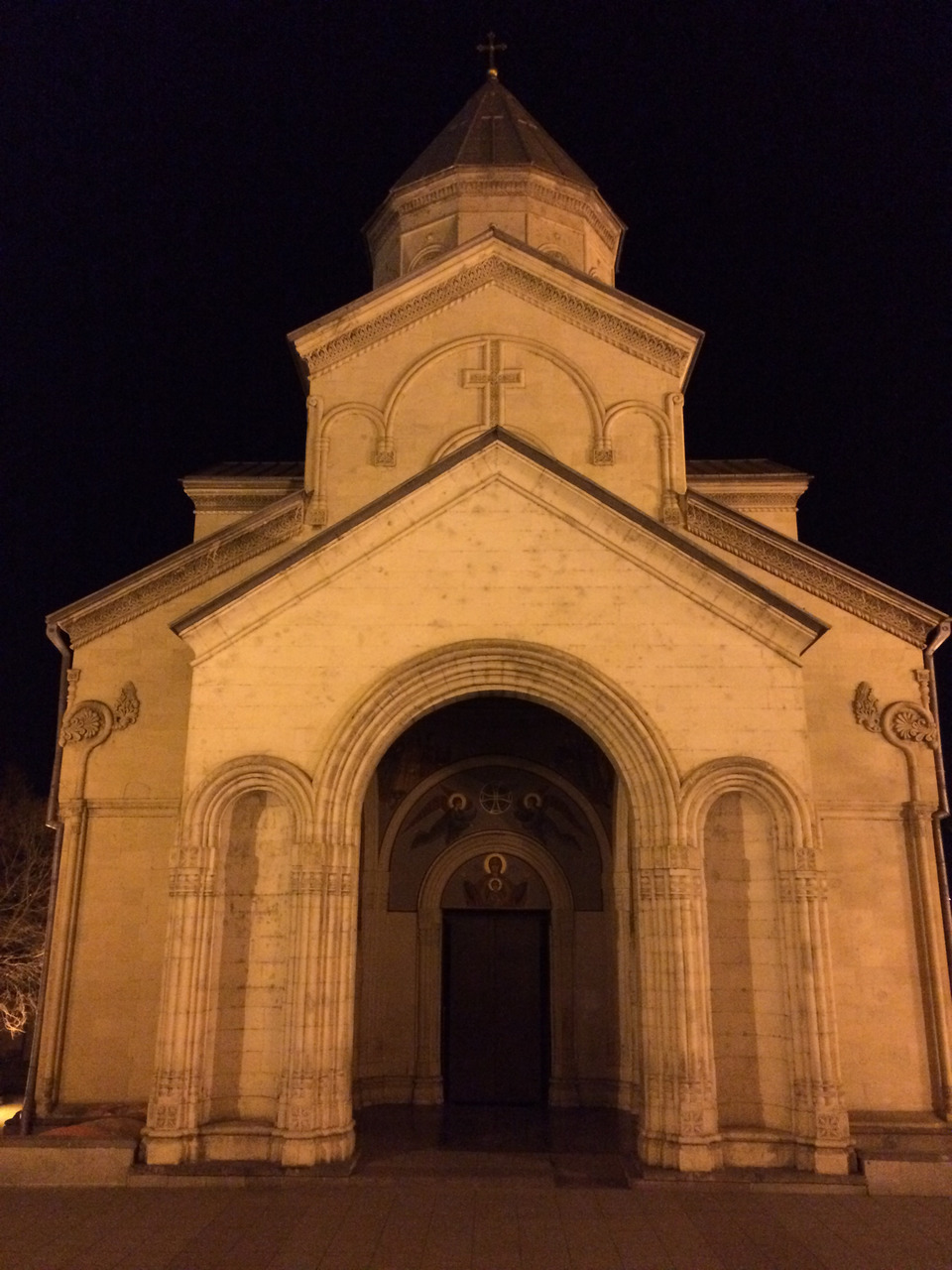
After the October Revolution, on May 26, 1918, Georgia declared itself an independent state, which was abbreviated by analogy with the future socialist Germany, the GDR, the Georgian Democratic Republic. It existed in this form for a short time, and on March 18, 1921 its troops were crushed by the Bolshevik army of the RSFSR. The power in Georgia passed into the hands of the Georgian Bolsheviks, and then, together with Armenia and Azerbaijan, it became part of a single Transcaucasian Soviet Socialist Republic (ZFSFR).
In 1936 Georgia gained its autonomous independence, and in connection with the abolition of the TSSFSR it became the Georgian SSR.
In 1990, democratic elections were held in Georgia for the first time, in which several political parties participated. On April 9, 1991, Georgia declared its independence from the USSR.
The country in this period had prospects for rapid economic development, but the war and socio-political contradictions had their own plans, and in 1992—93. the country became very febrile, from which first ordinary residents suffered. Former members of Georgia-South Ossetia and Abkhazia-began a war of independence, as a result of which ethnic conflicts, pogroms, and migration of the population became the most common news stories.
2. MODERN GEORGIA
Today Georgia is a parliamentary republic that ranks 121st in its territory in the world, and 130th in population. Today, approximately 3 million 730 thousand people live in Georgia. 86% of the population are ethnic Georgians. Among other peoples (in descending order): Azerbaijanis, Armenians, Russians, Ossetians, Yezidis (Kurdish ethno-confessional group), Ukrainians, etc.
The country is divided into 59 municipalities, and four cities have republican significance: Kutaisi, Rustavi, Poti and Batumi.
The relief of Georgia varies from highland to plateau and plateau. This determined the most diverse natural and geographical landscape. Here lies the Southern slope of the Greater Caucasus Range, a continuous mountain chain connecting the Black Sea and the Caspian along a land length of 1100 km.
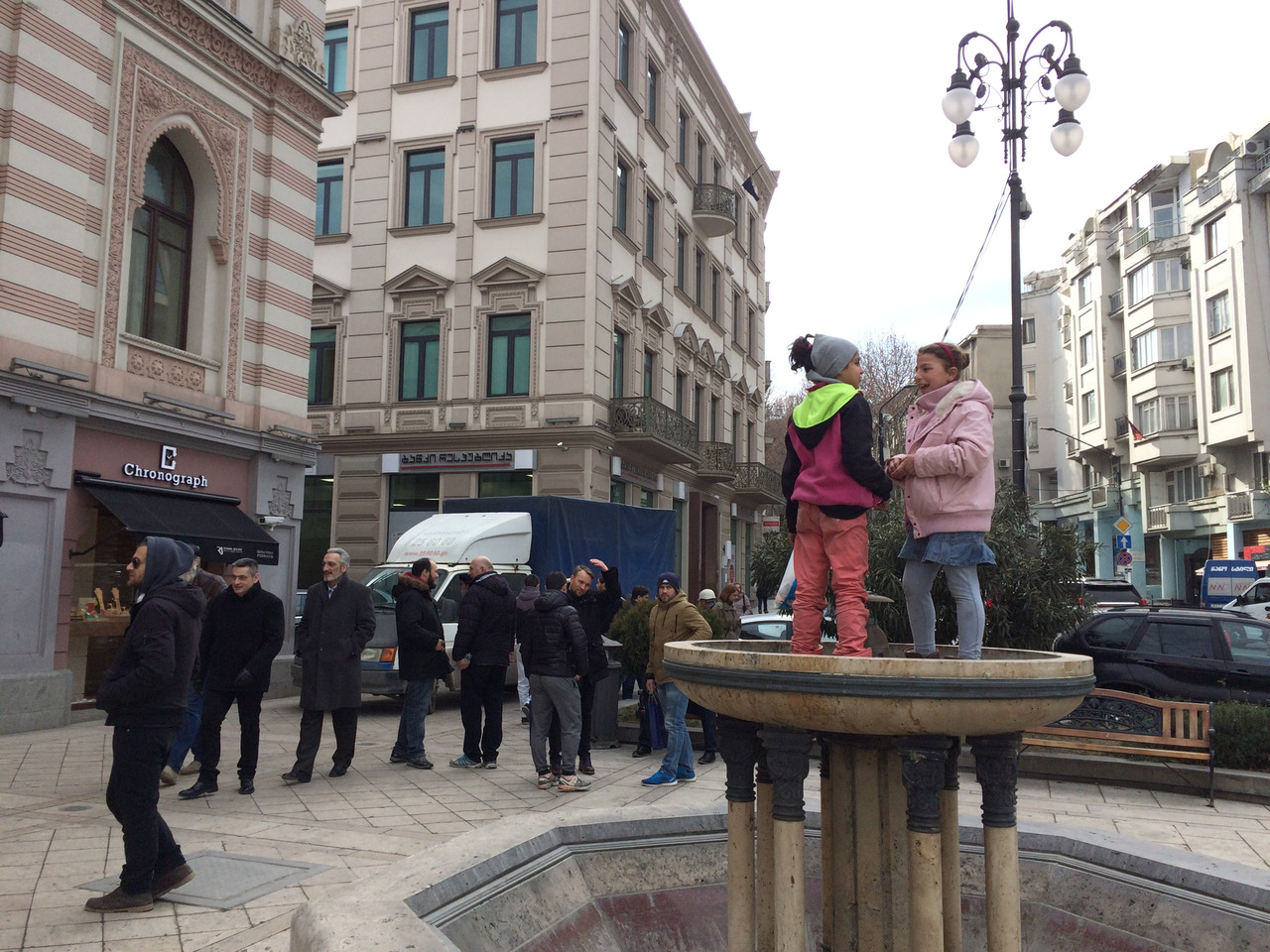
The country has the richest mineral resources, various types of soils, 3 million hectares of forests. The climate varies from the influence of the subtropical in the west of the country to the Mediterranean in the east.
Modern Georgia is a kaleidoscope of cultures, images, traditions. To plunge into this diversity is possible only by personally arriving here to immerse yourself in all this atmosphere.
To visit all the most interesting and amazing places in Georgia, probably not enough and a whole year of staying here — so much in this country in all.
RUSSIAN LANGUAGE
To go to Georgia you can bravely, armed with knowledge of only one Russian language. On it, almost everything is spoken, except, perhaps, only for young children.
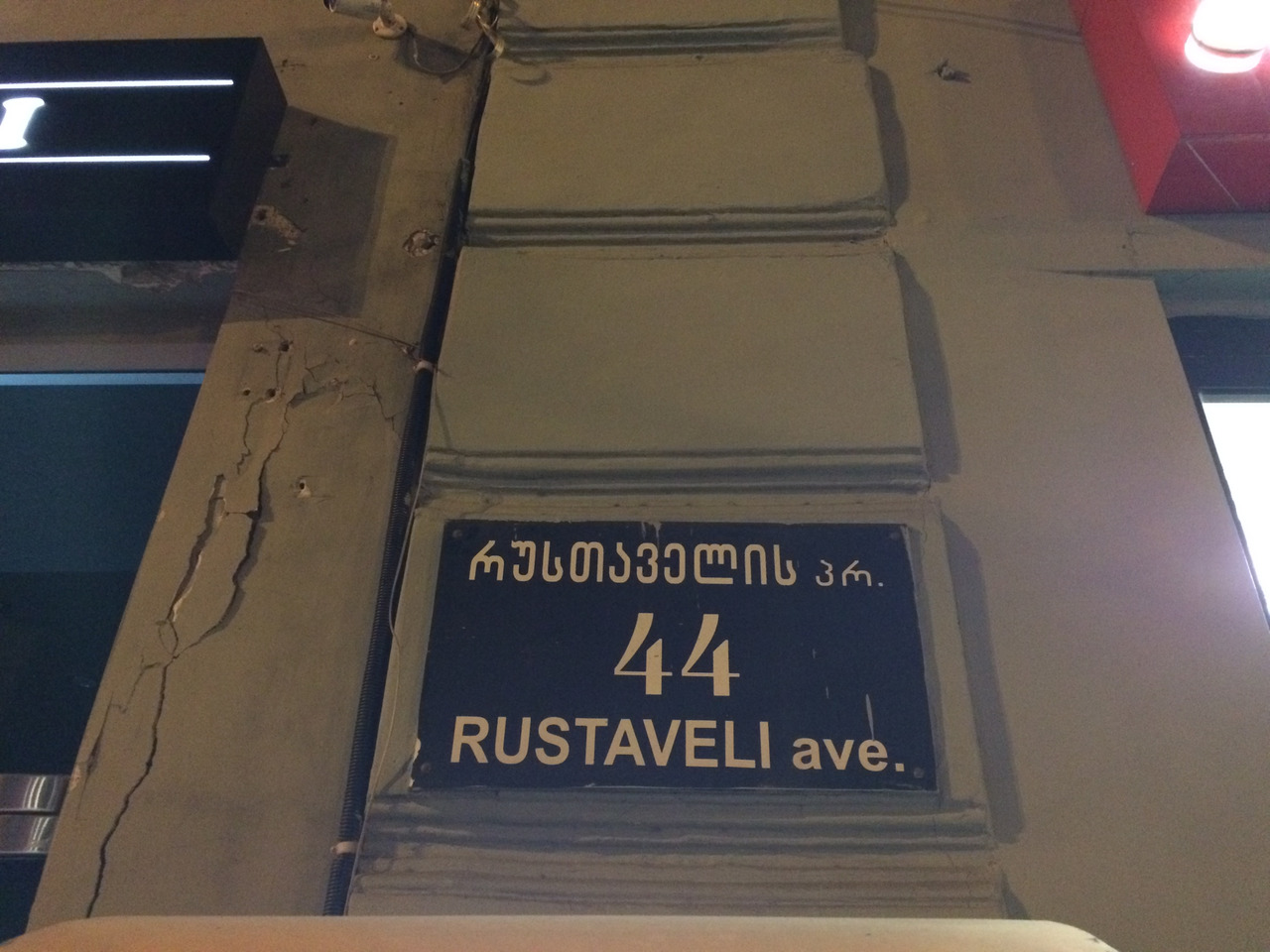
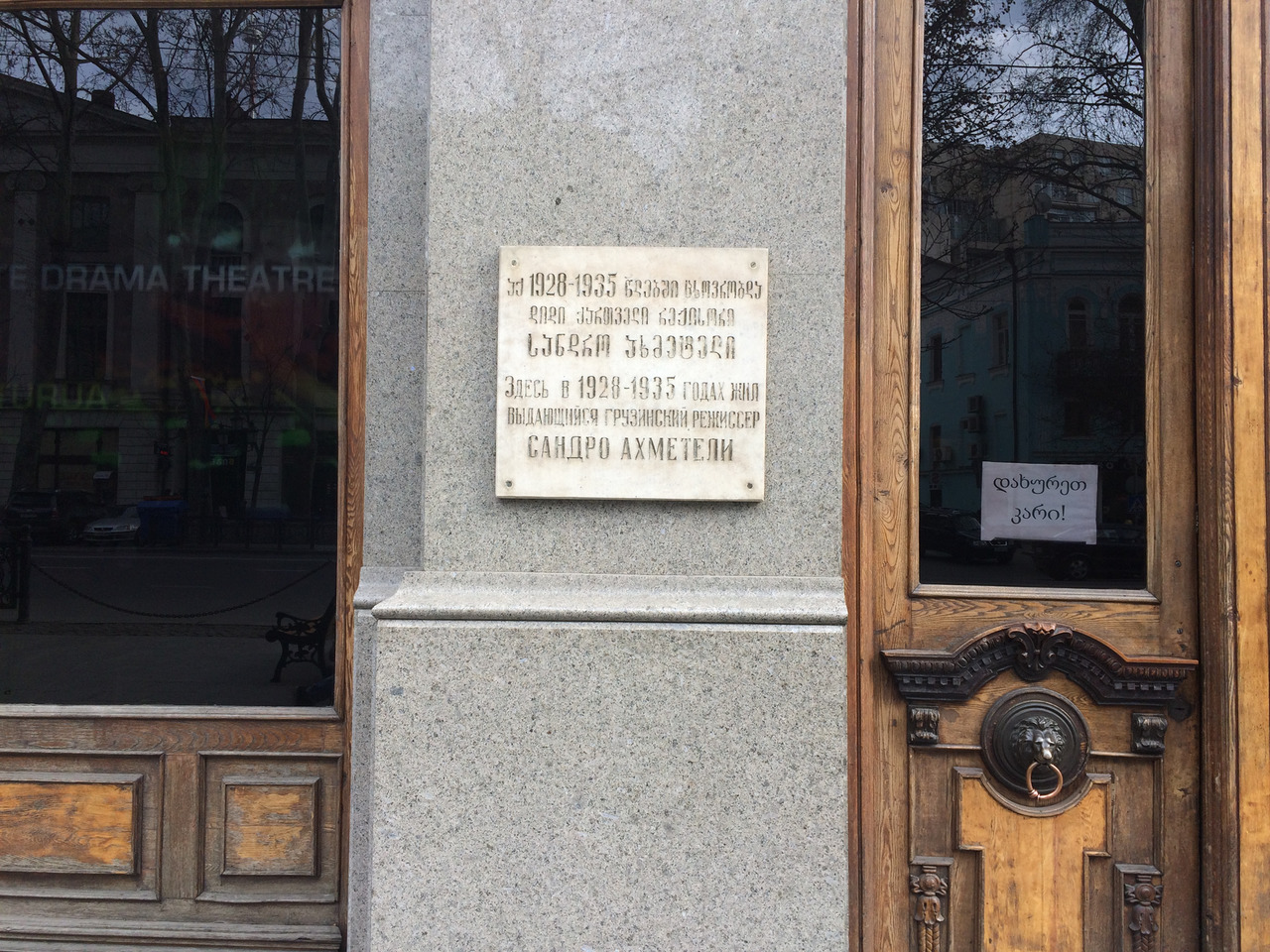
Although in everyday communication everyone uses the Georgian language, if you ask something in Russian, you will be able to respond in the hotel, and in the market, and in the bus, and in the metro, and in the museum, and just on the street. But at the same time, all the pointers located on the territory of the country are duplicated in two languages: Georgian and English.
GEORGIAN LARI
Georgian lari is the national currency of Georgia. It was introduced in 1995 by the President of the country Eduard Shevardnadze in exchange for the transition currency from the ruble – the Georgian coupon.
One lari is divided into 100 tetri.
To date, 1 GEL is approximately 25—26 Russian rubles. When you arrive in Georgia, you can take with you rubles, dollars or euros. The rate is approximately the same.
Part 1 Tbilisi
ABOUT THE CITY
For the first time I was able to penetrate the culture and atmosphere of this city at the Tbilisoba festival in 2015 in Moscow. Then there were many well-known figures of the Russian stage, natives of Georgia, Soso Pavliashvili, Tamara Gverdtsiteli and many others. Their songs so radically conveyed everything that the Georgian capital is famous for, that to many Muscovites present at this holiday, it seemed as if they had made a trip to this city.
But the real meeting with Tbilisi was accomplished only a few years later. For many of our compatriots who grew up in the Soviet Union, Georgia has always been a blooming garden, where it’s warm almost all year round, and the local national flavor has always amazed imagination.
After many years of Georgia’s independence, its sunny image changed in many respects to another – more strict, sometimes gray, distant and unfamiliar. In short, Soviet and modern Georgia, like Soviet and modern Tbilisi, is, as they say in Odessa, two big differences. But I’ll try to introduce you to both of them. With the way we saw it from the pages of magazines and film frames of the 1970s, as well as with the way you see it, having arrived in Georgia today.
So, let’s begin.
Even during the Roman Empire, in the I — II centuries. AD There was a city called Tbiliada, which is noted on many maps of the Caucasian foothills of this time. In this area, the remains of ancient baths were found. But it is believed that the history of the city is still from the turn of antiquity and the Middle Ages — V century, when it was founded by the king of Iberia Vakhtang Gorgasali. Leaving in the year 458 for the royal hunt, he shot a pheasant in these places, which fell into a hot spring and was welded. He liked the thermal springs so much that he ordered the establishment of a settlement here and the construction of a bath complex. They were the basis of the historic quarter of Abagotubani (“quarter of baths”). Its center is the remains of an old bath complex, as well as a fountain with a pheasant, to which the city owes its legendary appearance.
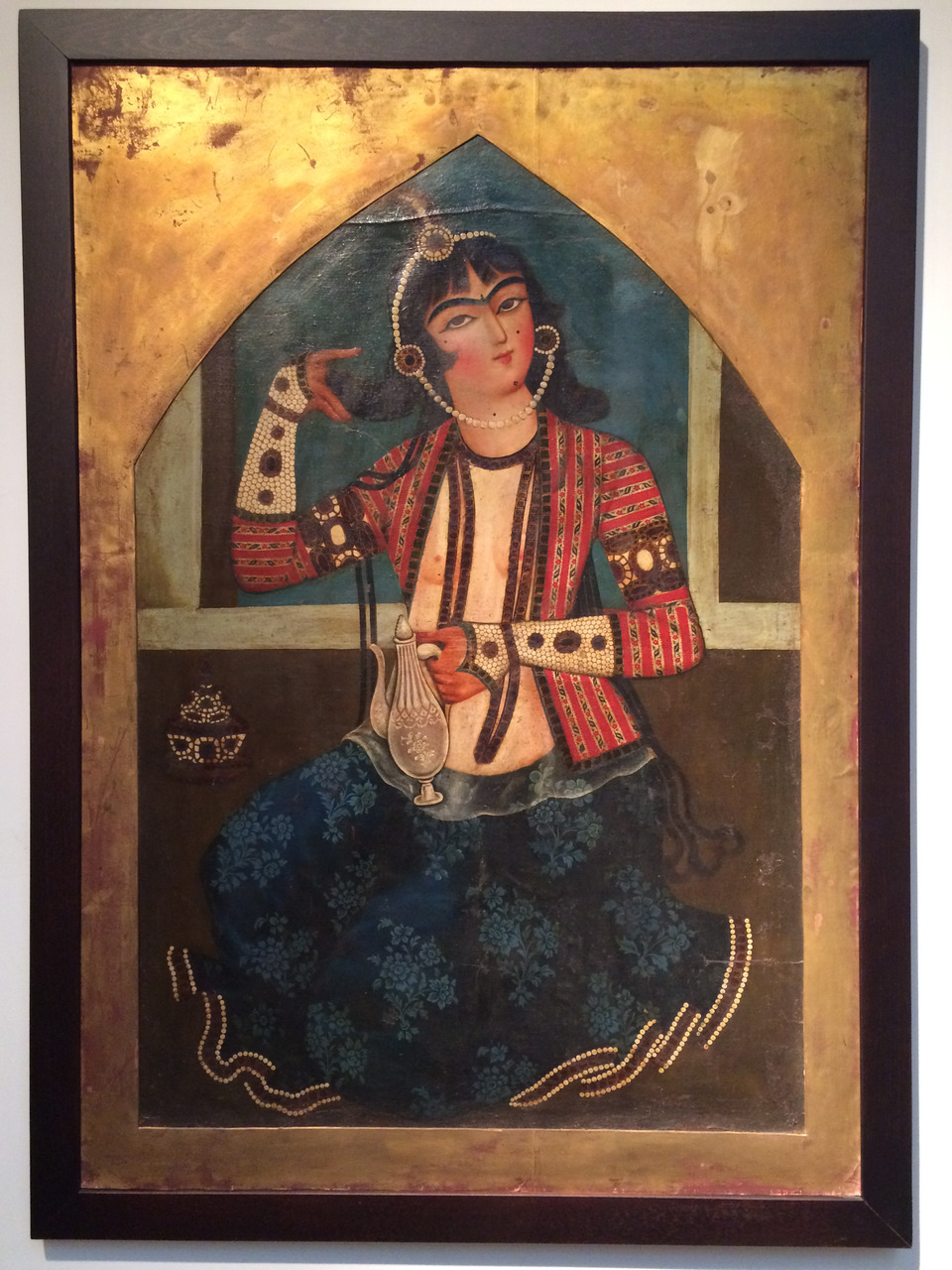
The heir of Vakhtang Gorgasali, the king of the Dacha, did much for the development of the city. It was he who transferred the capital of Iberia from Mtskheta to Tbilisi. With him around the city walls were erected, and Tbilisi itself grew very rapidly due to the favorable location on the trade route between Europe and Asia.
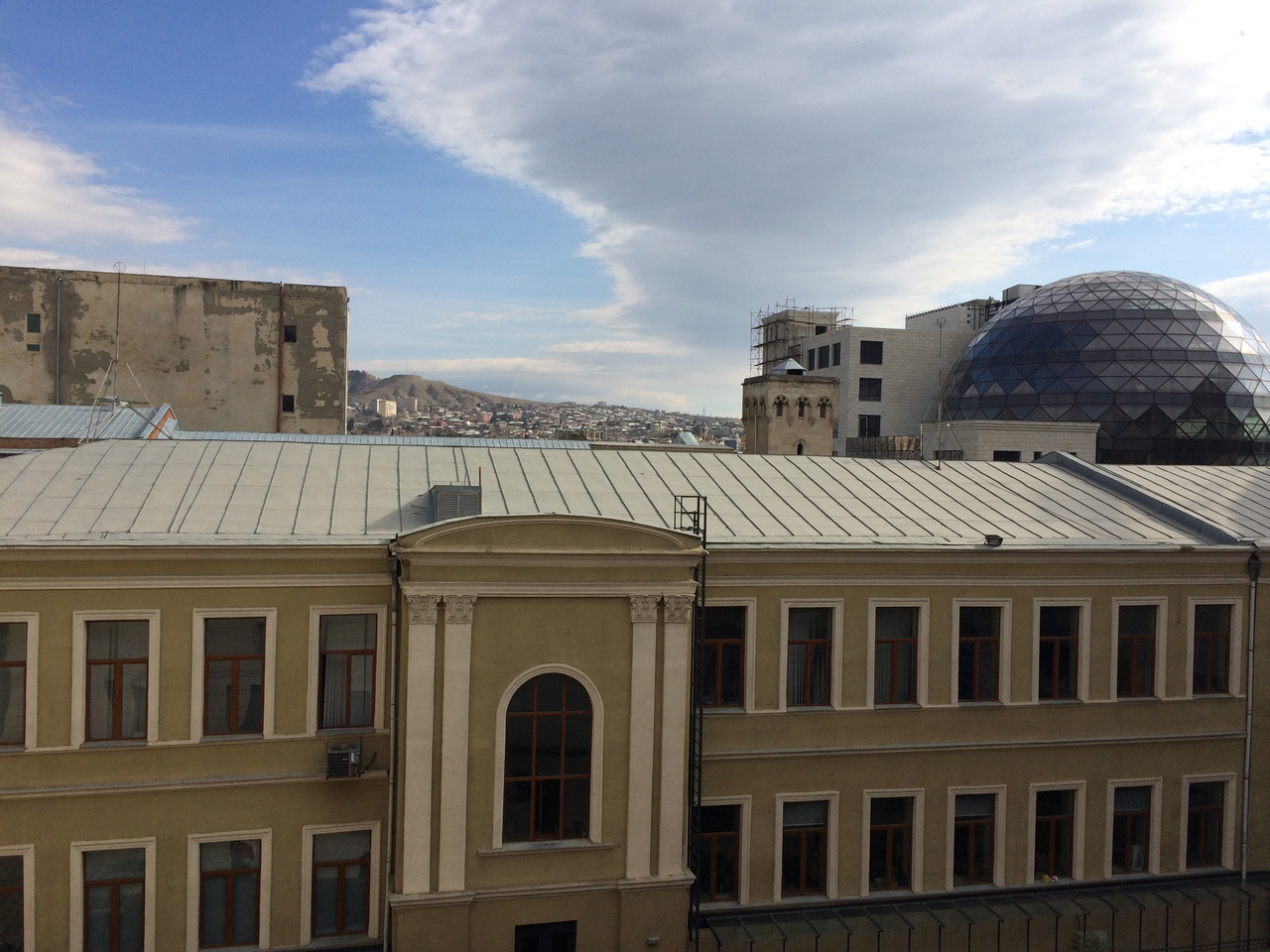
The city became the capital of the united Georgia in 1122, when King David the Builder, the head of the Bagratid state, entered here. The historical development of the city with this moment through a series of many wars, invasions, changes of rulers and other events.
Since Georgia joined the Russian Empire, Tbilisi has become the residence of the so-called supreme Georgian government and commander in chief – the highest representative of the national military and civil authorities in Georgia and throughout the North Caucasus.
In 1840, Tbilisi became the center of the Transcaucasian region. Polukis high administrative status, the city began to develop rapidly on the basis of a mixture of Russian culture and cultures of the peoples of the Caucasus. Here, markets, squares, fountains, apartment houses and public buildings were built. Many of them are an important part of the historical and cultural heritage of Tbilisi and to this day.
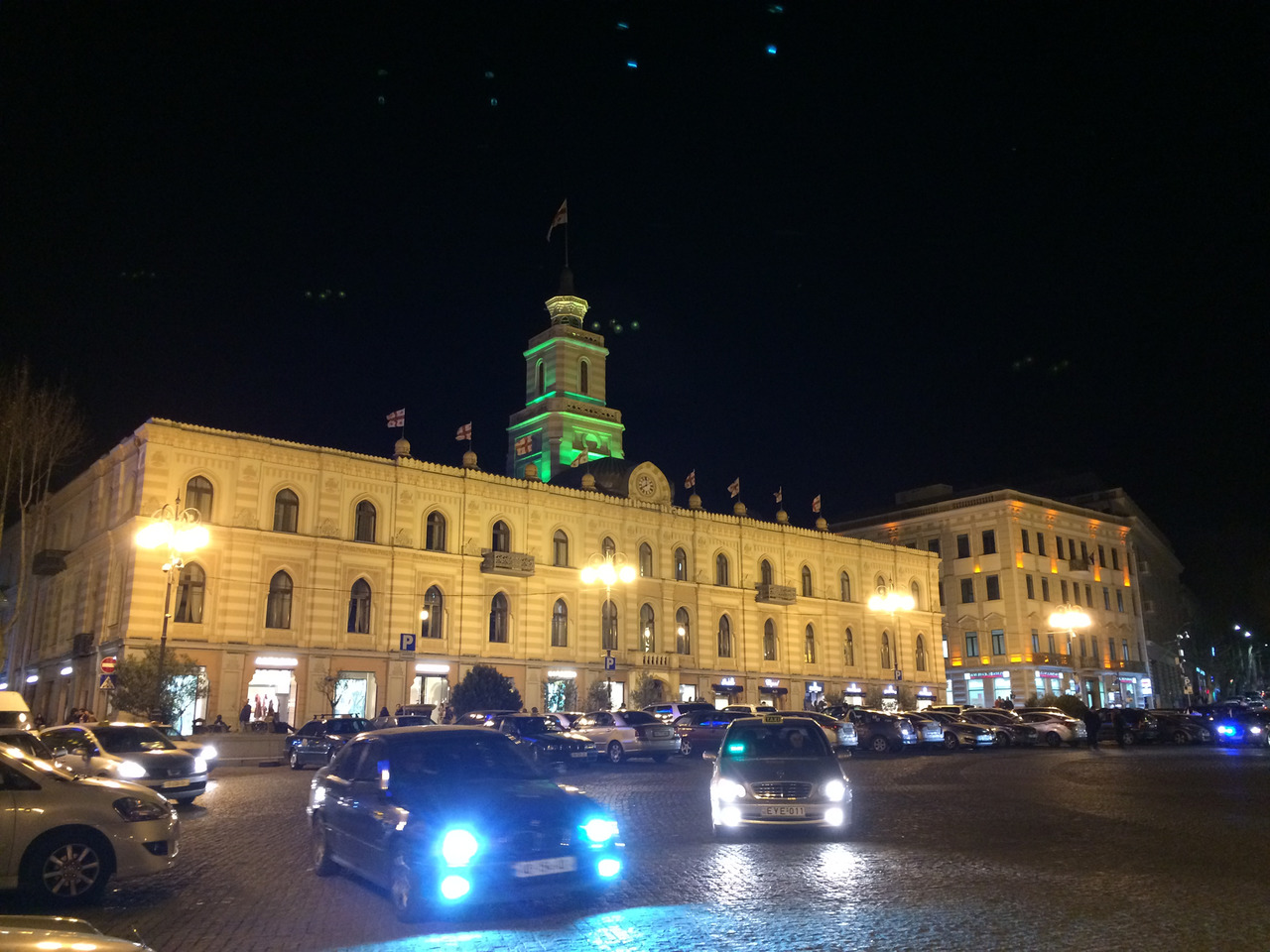
The city was visited by famous writers, poets, composers, artists. There were Alexander Pushkin, Mikhail Lermontov, Alexander Griboyedov, Leo Tolstoy, Pyotr Tchaikovsky, Maxim Gorky, Konstantin Paustovsky and many others. The atmosphere of the city and its inhabitants influenced the creativity of each of these world-famous geniuses of the pen.
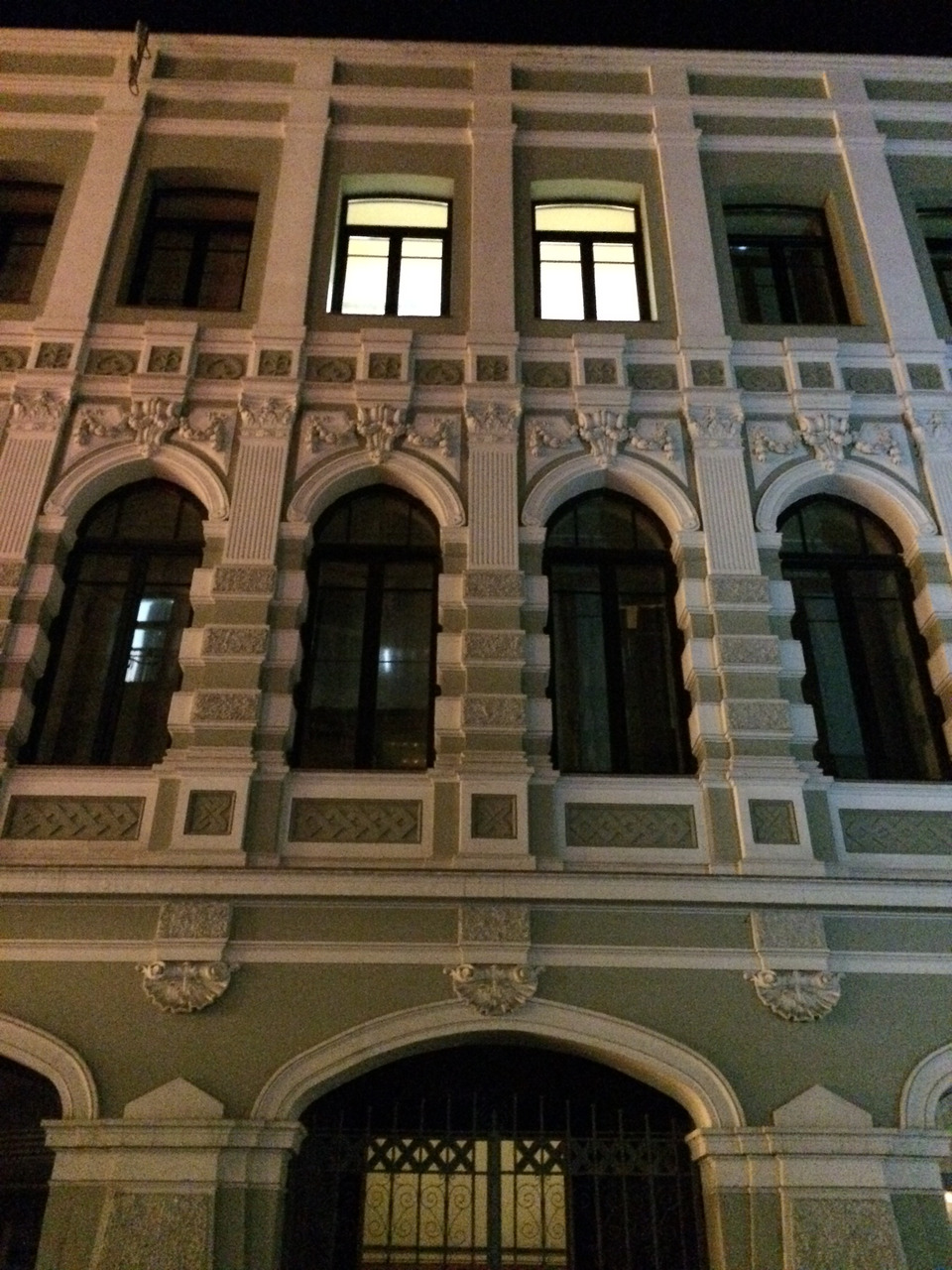
In the second half of the XIX century the population of the city grew in geometric progression. If in 1865 there lived 71 thousand people, then in 1897 – twice as many. Tbilisi became the center of the industry of the Caucasian region. Many plants and factories were built here. This predetermined the fact that the city became one of the pillars of the workers’ revolutionary movement.
In 1883, a tram started to ride through the streets of the city in the form of a horse.
At the turn of the XIX – XX centuries. Joseph Stalin and his associates here launched a tremendous revolutionary and propaganda work, were the founders of the Leninist-Iskra organizations in the Caucasus.
Soviet Tbilisi as the capital of the Georgian SSR has developed quite actively and dynamically. Here were built richly decorated with stucco decor and columns of the capital’s administrative buildings, wide avenues, green boulevards, squares, monuments leading up and down in the mountain city of the staircase. In 1937, trolleybuses began to ride the streets of the city, in 1966 a subway was opened.
In 1989, the city’s population reached the highest point in the history of Tbilisi, and amounted to 1 million 259 inhabitants.
The existence of Tbilisi as the capital of independent Georgia enriched the city with new monuments, streets, buildings and structures. Unfortunately, much of the period of Soviet construction was lost, in 2006 the Tbilisi trolleybus and tram stopped its work. The city was shaken by more than a dozen political rallies and demonstrations, but it continues to develop, and very kindly welcomes guests from all over the world.
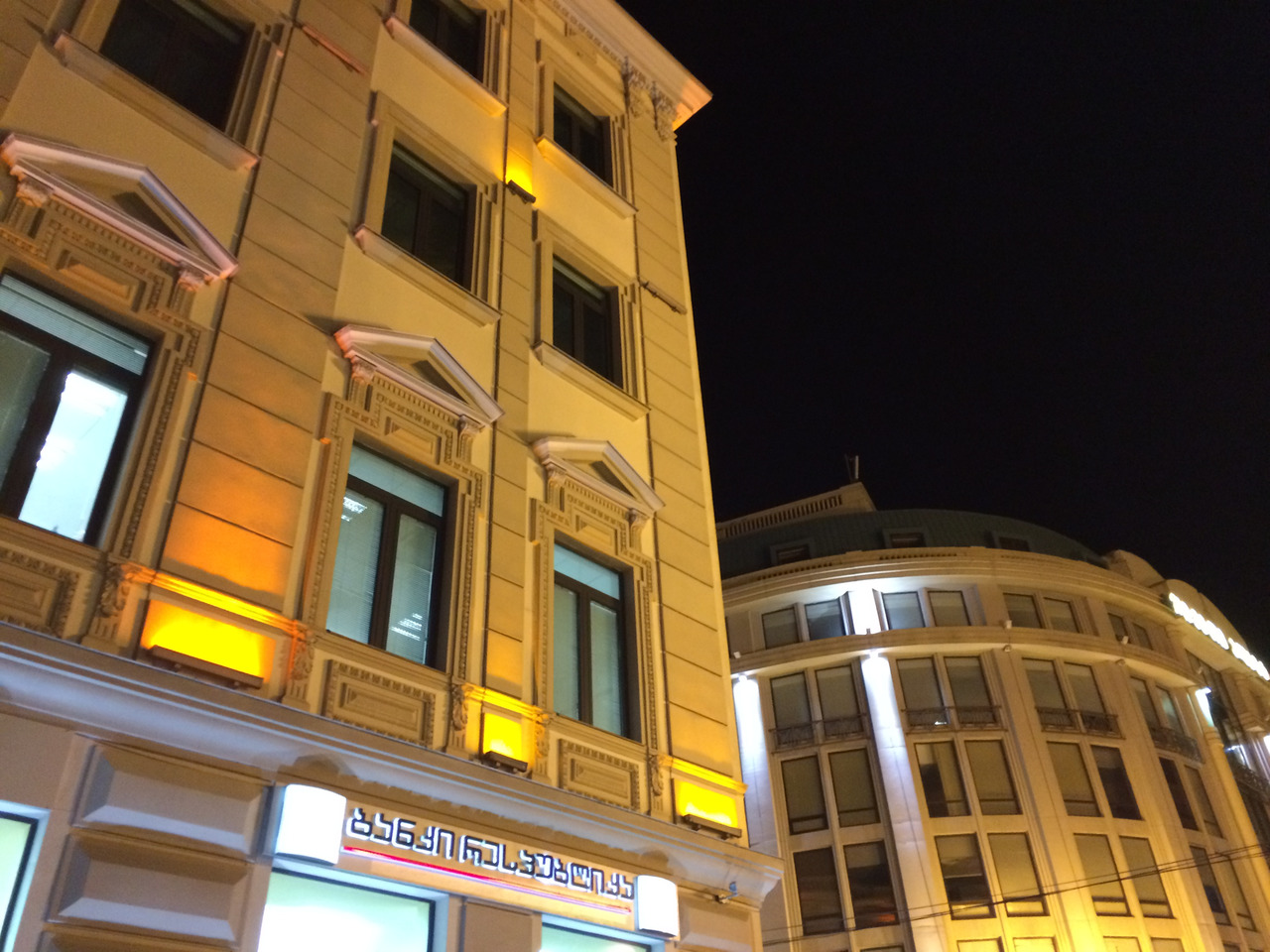
Today, the Tbilisi space can be divided into several parts. This is the space of an ancient city, which includes archaeological sites, ancient temples and monasteries, etc. The second part is Russian Tbilisi, all the buildings, streets and quarters that have been preserved since the time of the Russian Empire. The third part is Soviet Socialist Tbilisi, with its residential and public buildings designed by Georgian architects of the 20th century. Many of them at one time entered textbooks on the architecture of the USSR as bold decisions and outstanding achievements of our country. And, finally, the 4th part is Tbilisi modern, which seems to have been dissolved in the previous 3 parts, because it influenced all these parts. Somewhere lighting houses, somewhere in the reconstruction and restructuring, and many other ways.
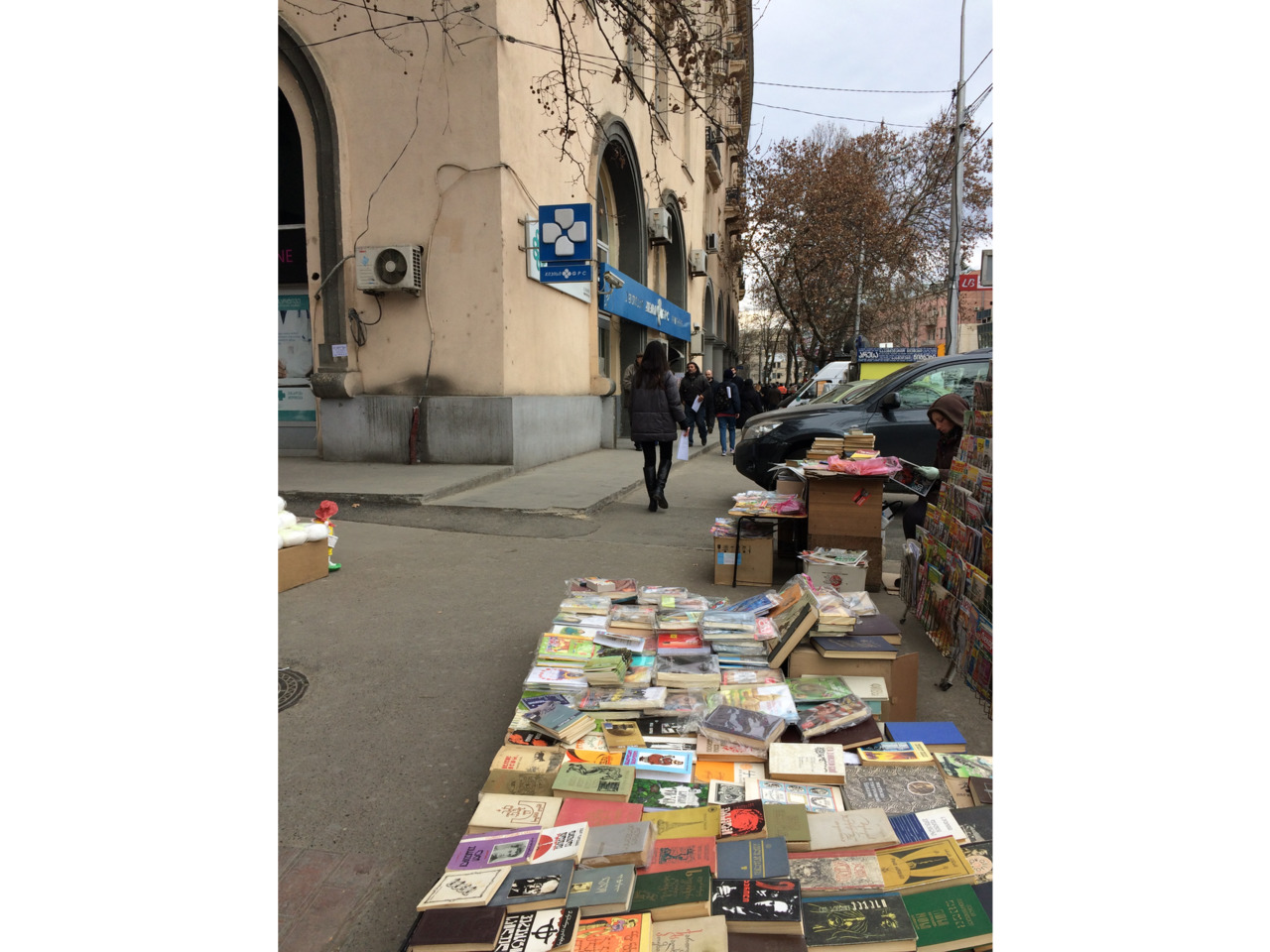
Now is the time to delve into the routes to the sights of this city, at its most interesting, bright and unusual places that belong to the list of “mast visit” for several days of the wukend held here.
INTERNATIONAL AIRPORT OF TBILISI NAMED AFTER SHOTA RUSTAVELI
Shota Rustaveli Airport, in which you most likely will fly, are the main air gates of Georgia.
The first airport in the country appeared in 1952, the last year of life of Joseph Stalin. Its architecture corresponded to its time (late Stalin empire).
Then, in 1990 a new, more modern airport was built, which in 2007 underwent serious reconstruction, and today it meets all world standards.
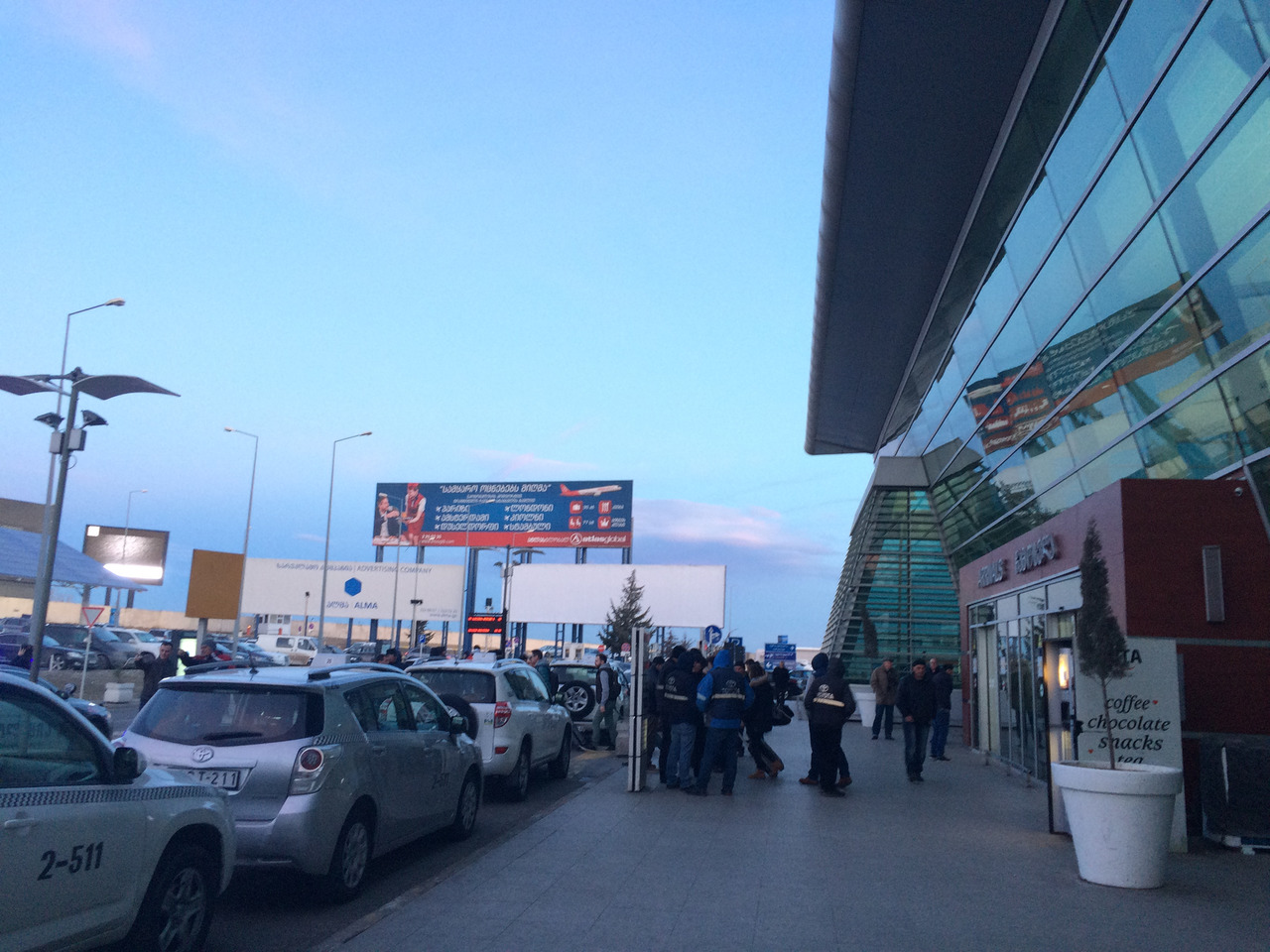
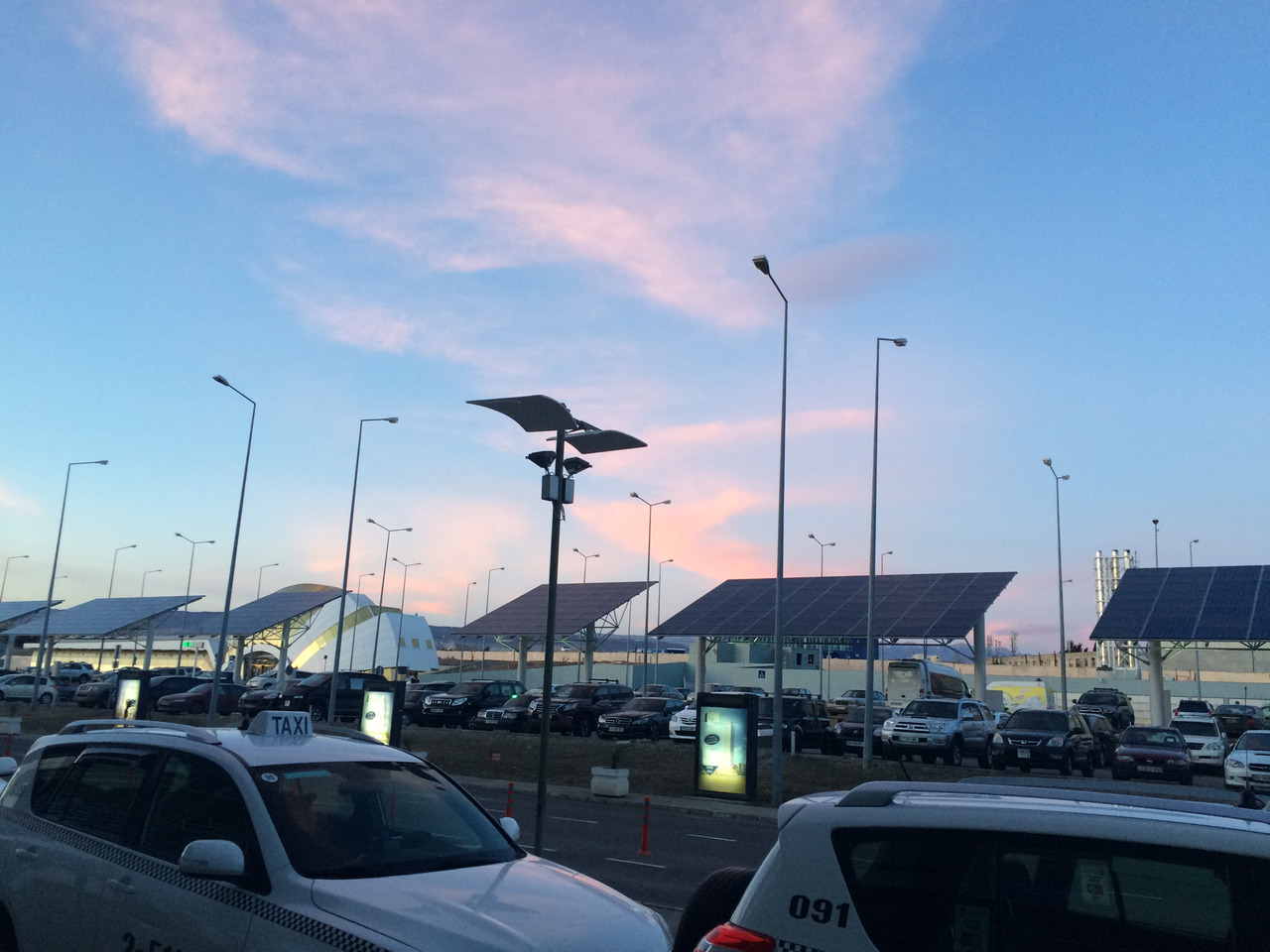
In the parking lot near the terminal, the first thing that catches your eye is large solar panels that cover the car parks and protect the cars from the sun. For a day they collect the amount of energy that is enough to illuminate the parking lots themselves and the surrounding roads at night.
ROAD TO THE CENTER
After the arrival, it is worth changing the ruble for a few lari so that you have the money to get to the center, and if the time later to have dinner somewhere, and also pay for the hotel or hostel.
The journey to the city center depends on your preferences and your wallet. In general, there are not so many options — either a taxi or a bus. If you choose a taxi, then prepare to lay about 15—20 lari (about 8—10 US dollars).
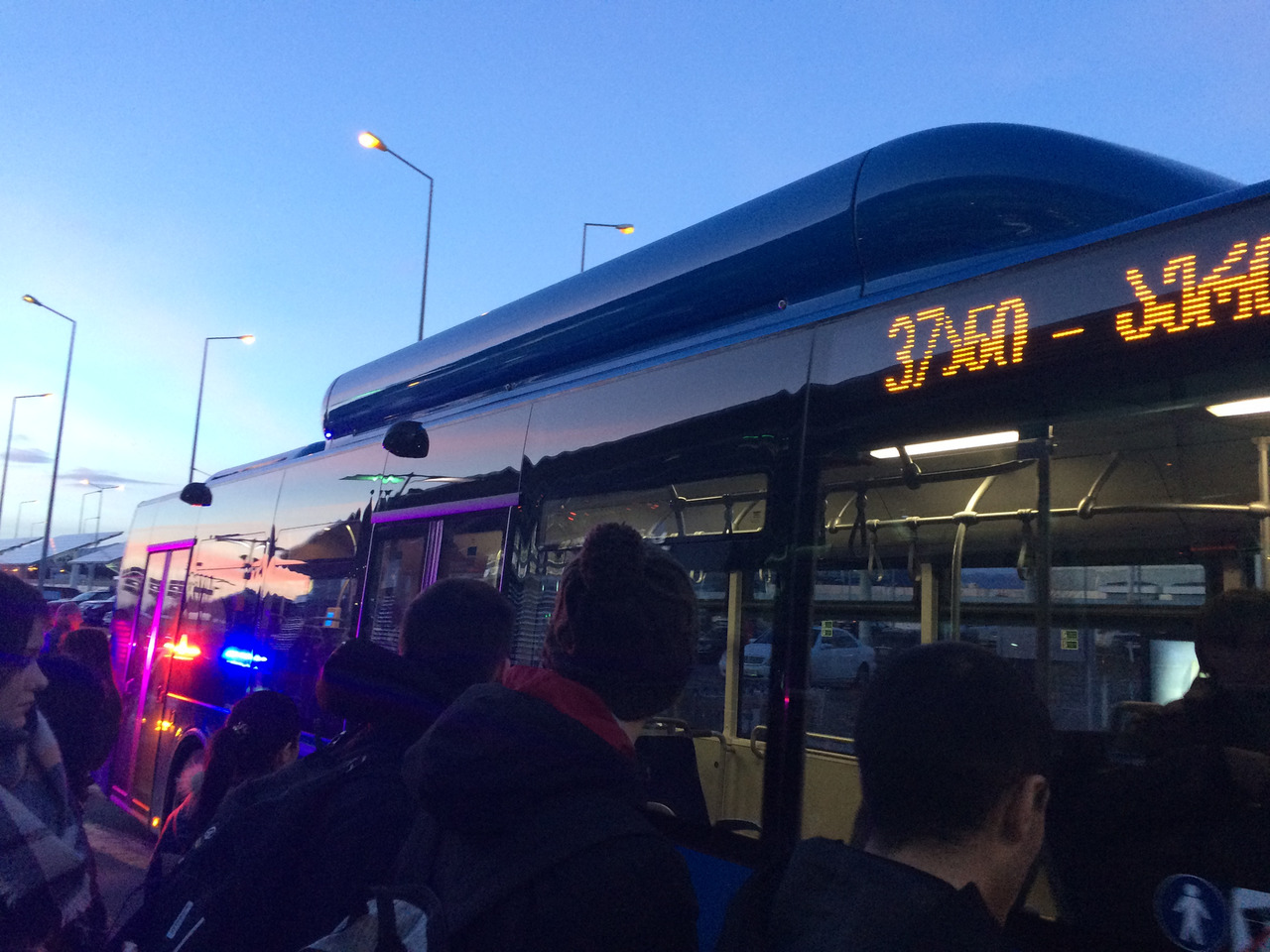
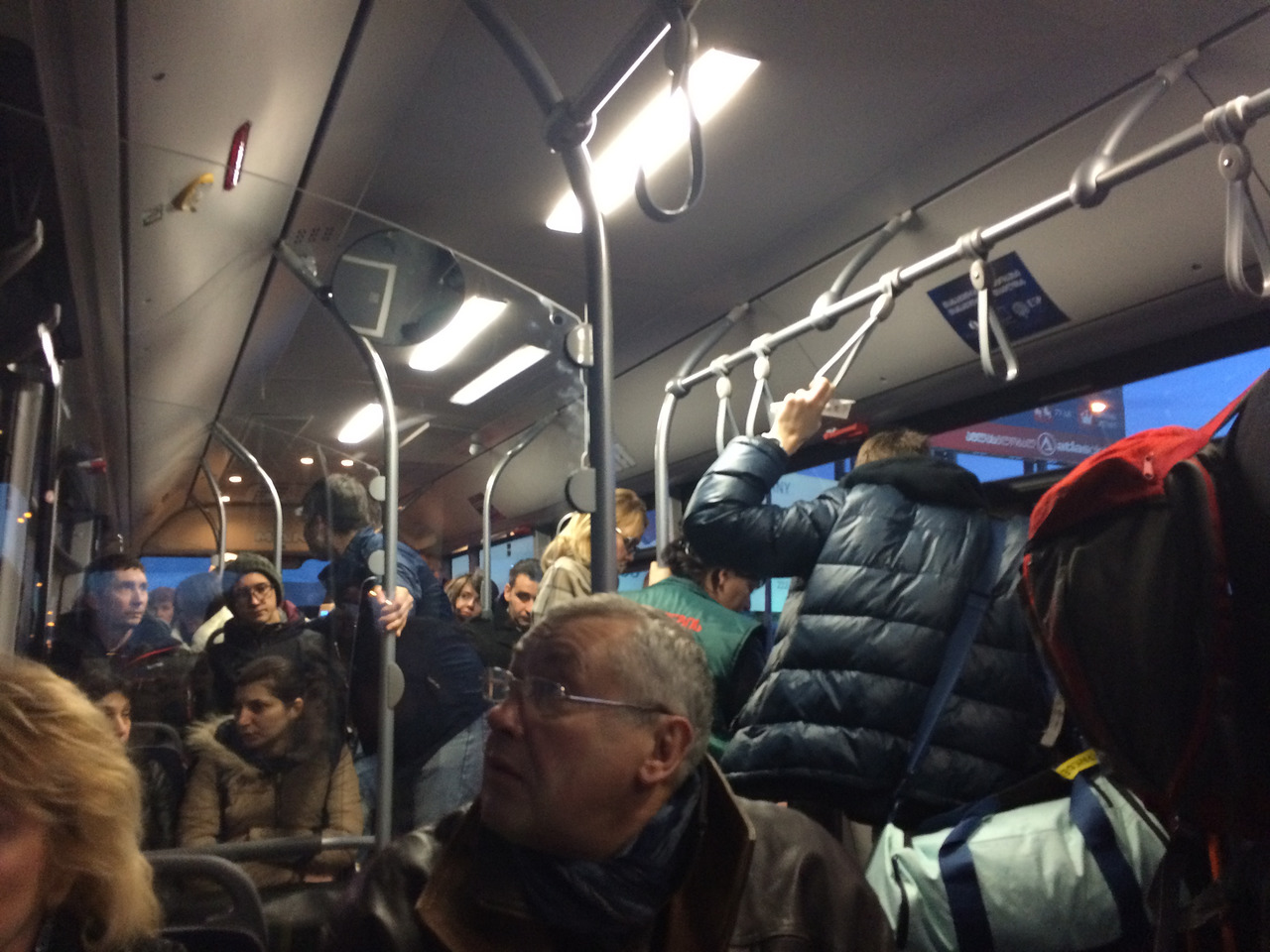
The most advantageous option is bus number 37. In the daytime he drives quite regularly, in the evening it’s a little worse, and that’s why it’s often crowded. The fare is only 0.5 lari (about 35 cents). On this bus you can reach the city center, Freedom Square and Rustaveli Avenue.
The bus stop is directly opposite the exit from the international arrival terminal.
THE KAHETIAN HIGHWAY
Route bus number 37 from the airport runs through the Kakheti highway, then — the first on your way metro station — Avlabari, from where you can get to any part of the city.
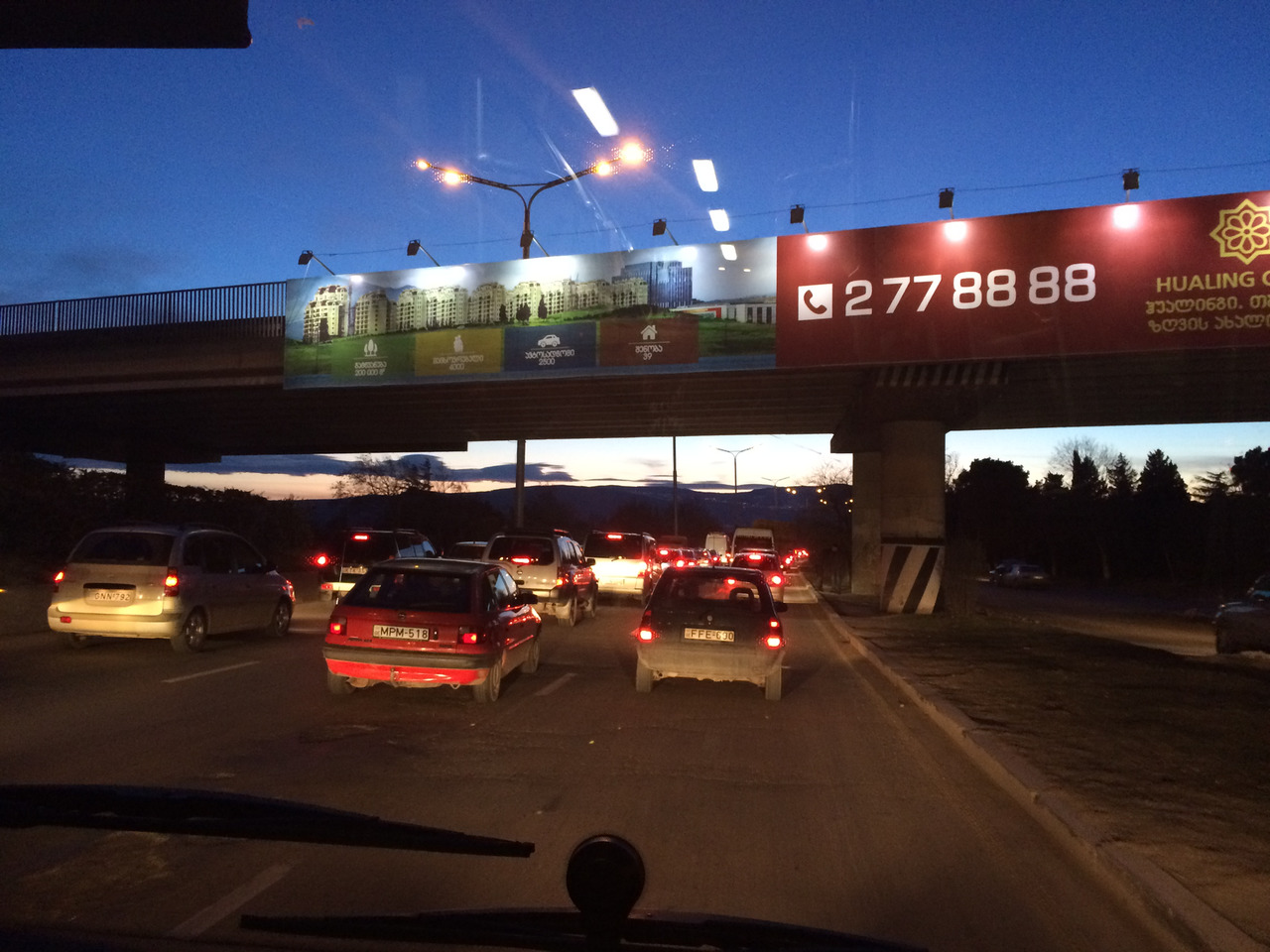
The final bus stop is Tbilisi Central Railway Station. In total, the journey takes approximately 40—50 minutes. In the winter, a little less, in the summer a little more.
Squirrel Hostel Tbilisi
In advance I booked on the site booking.com a place in Hostel Squirrel Hostel Tbilisi for one night. During the years of travel, I noticed that hostels in the countries of the former USSR are better booked on booking, while hostels in distant countries of the world are more convenient to book at hostels.com.
I recommend this hostel to all. It is located almost a few steps from Freedom Square, from where it is close to all the main sights of the city. At all thus cost of one night here has managed to me only in 12,75 lari, that is about 300 rubles. Agree, not so much for spending the night in the very center of Tbilisi.
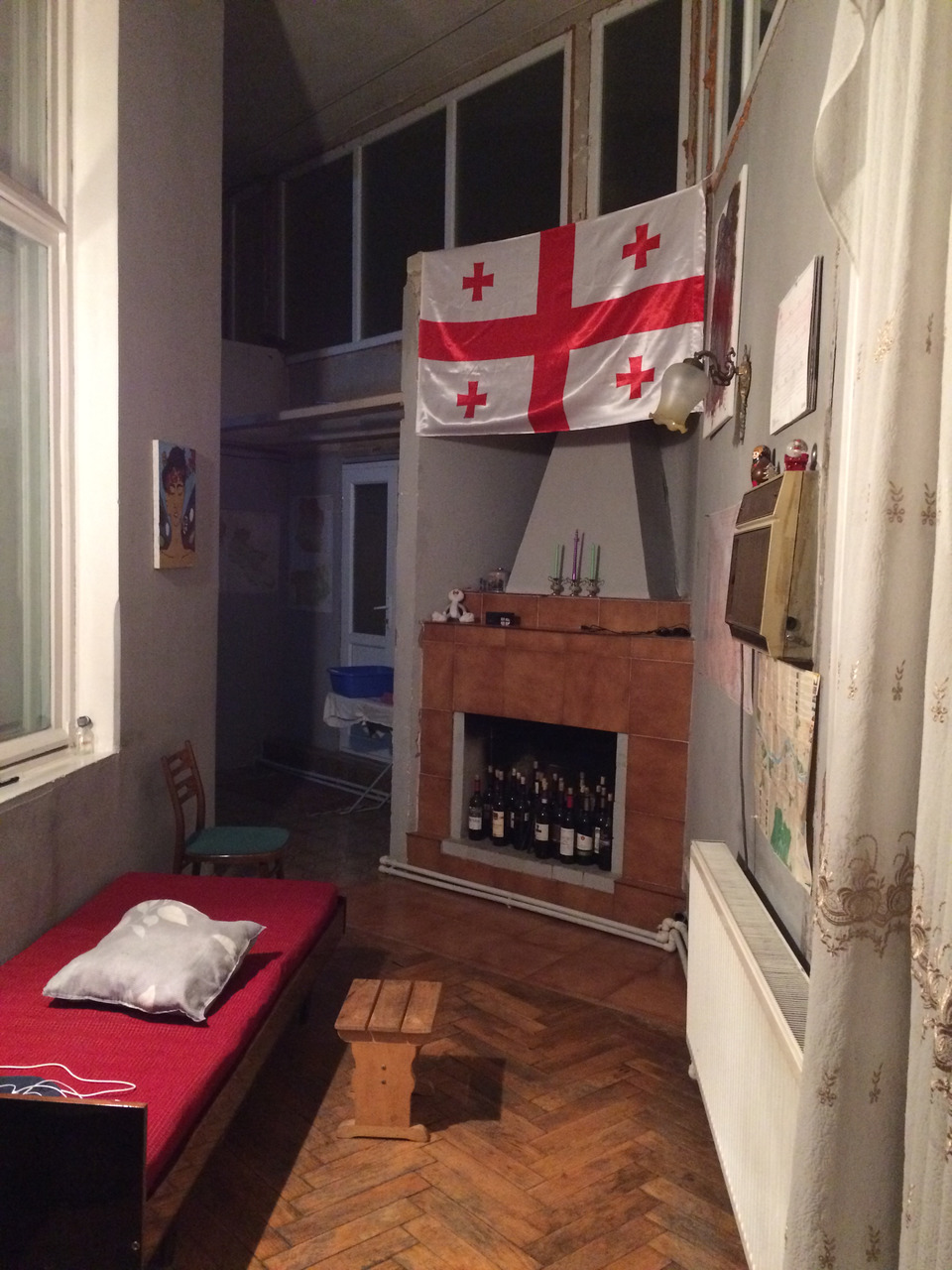
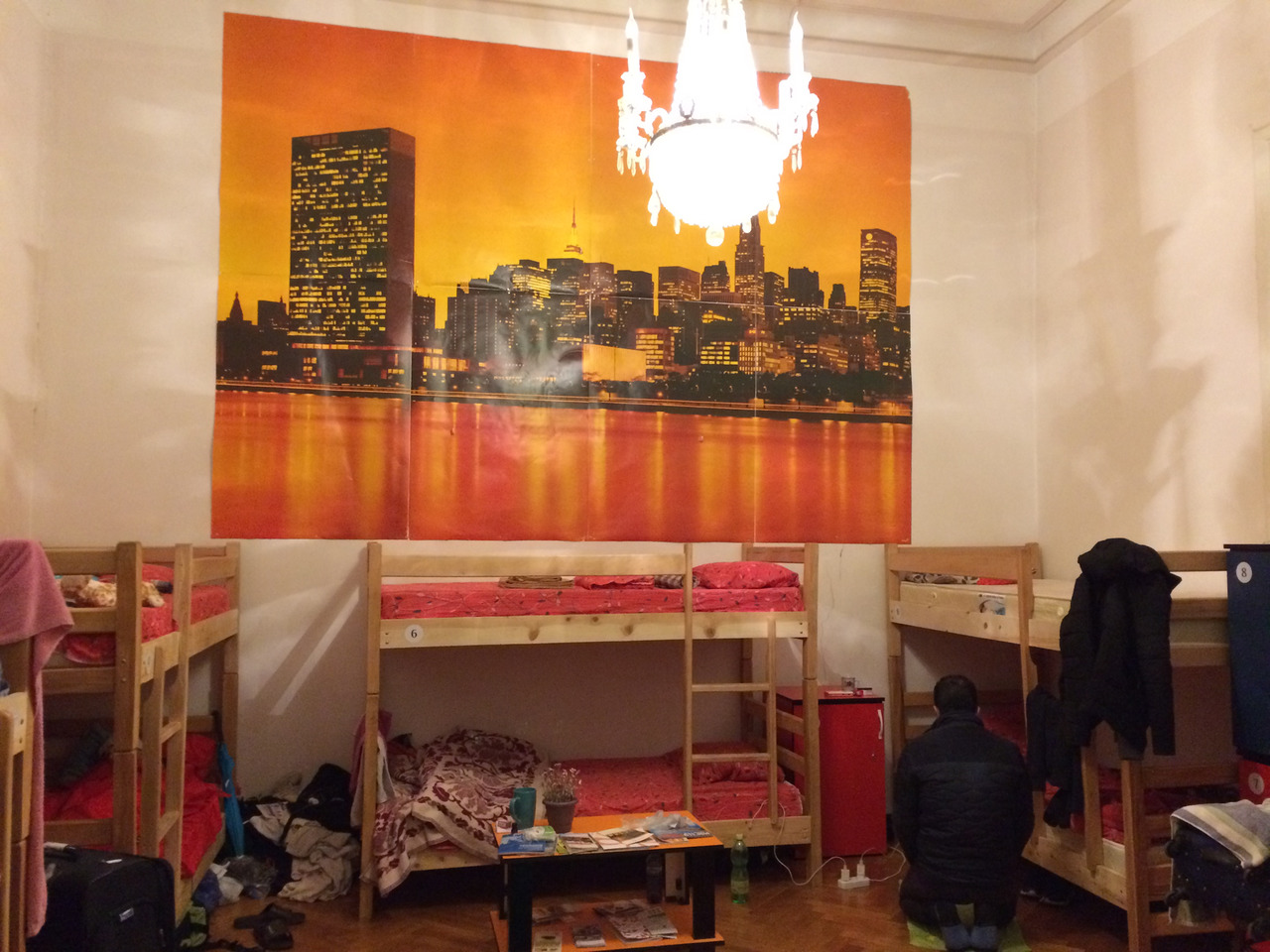
The most interesting – the atmosphere of this hostel, located in a historic building. It combines the traditions of the Soviet Georgian apartment and the modern student hipster studio. The staff of the hostel speak Russian very well, and they will tell you the places that must be visited, where they can eat lunch and buy souvenirs, and also answer any questions.
By the way, the ceilings here were meters, probably five, no less. The beds looked like they were in a doll’s house.
NIGHT OF FREEDOM SQUARE
Throwing things, you have to go for a walk in the evening and night city. In winter it gets dark early, so tourists do not lose a minute to enjoy every instant of staying in a new place.
Since the square, which I will tell you more about the history of, has important ideological meanings for modern Georgia, all buildings here are new or restored, and in the evening they are all illuminated with bright spotlights.
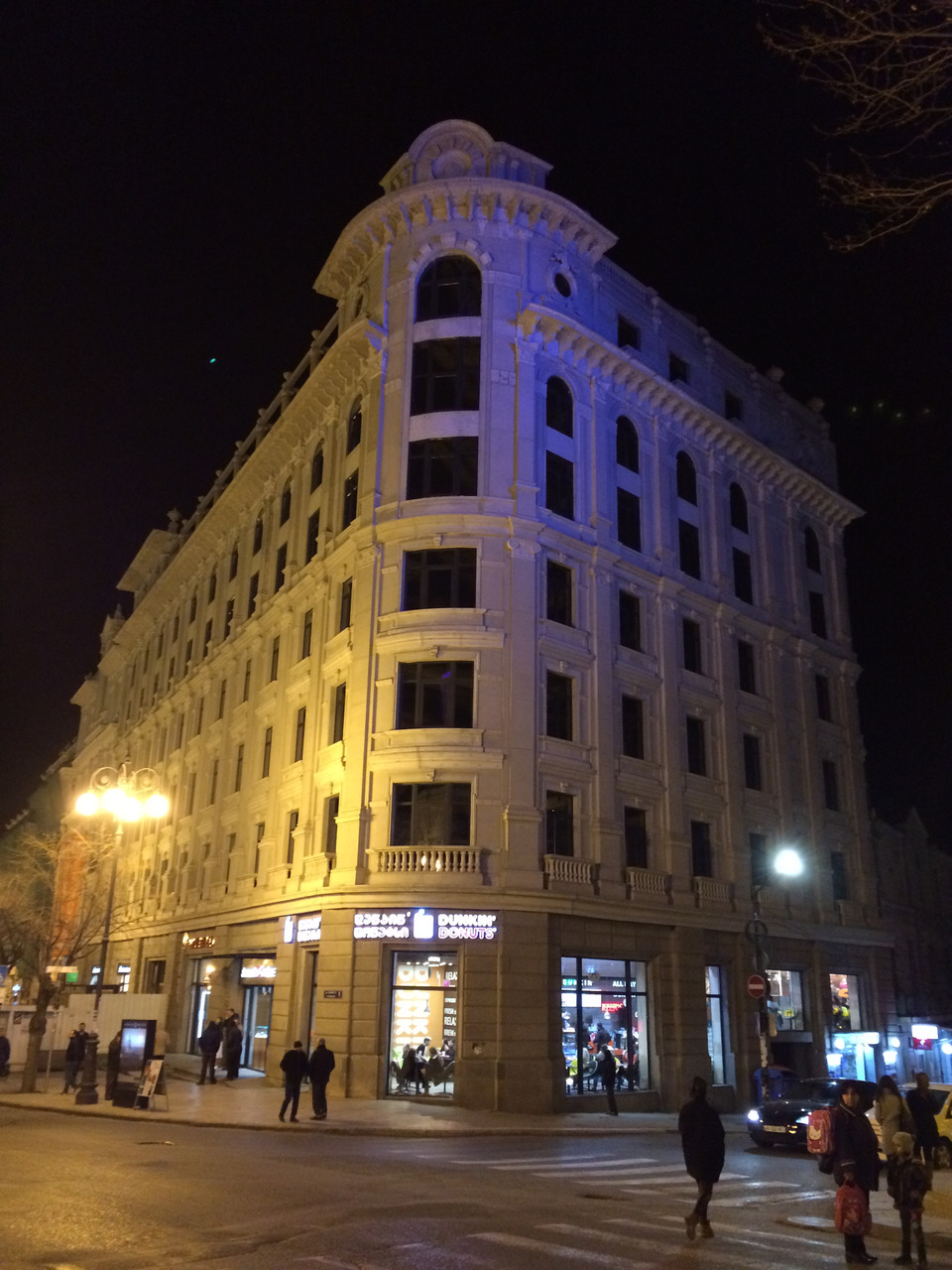
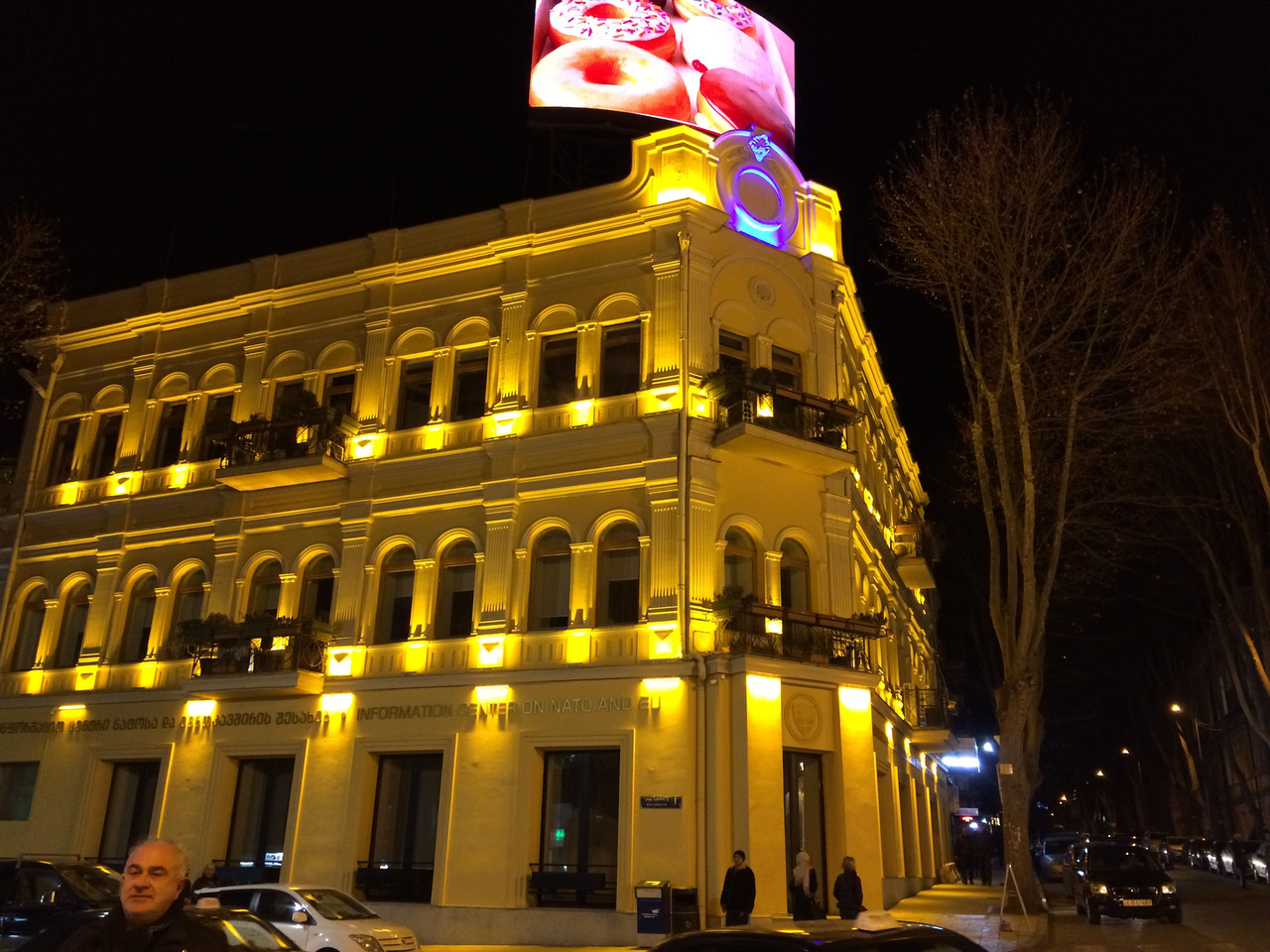
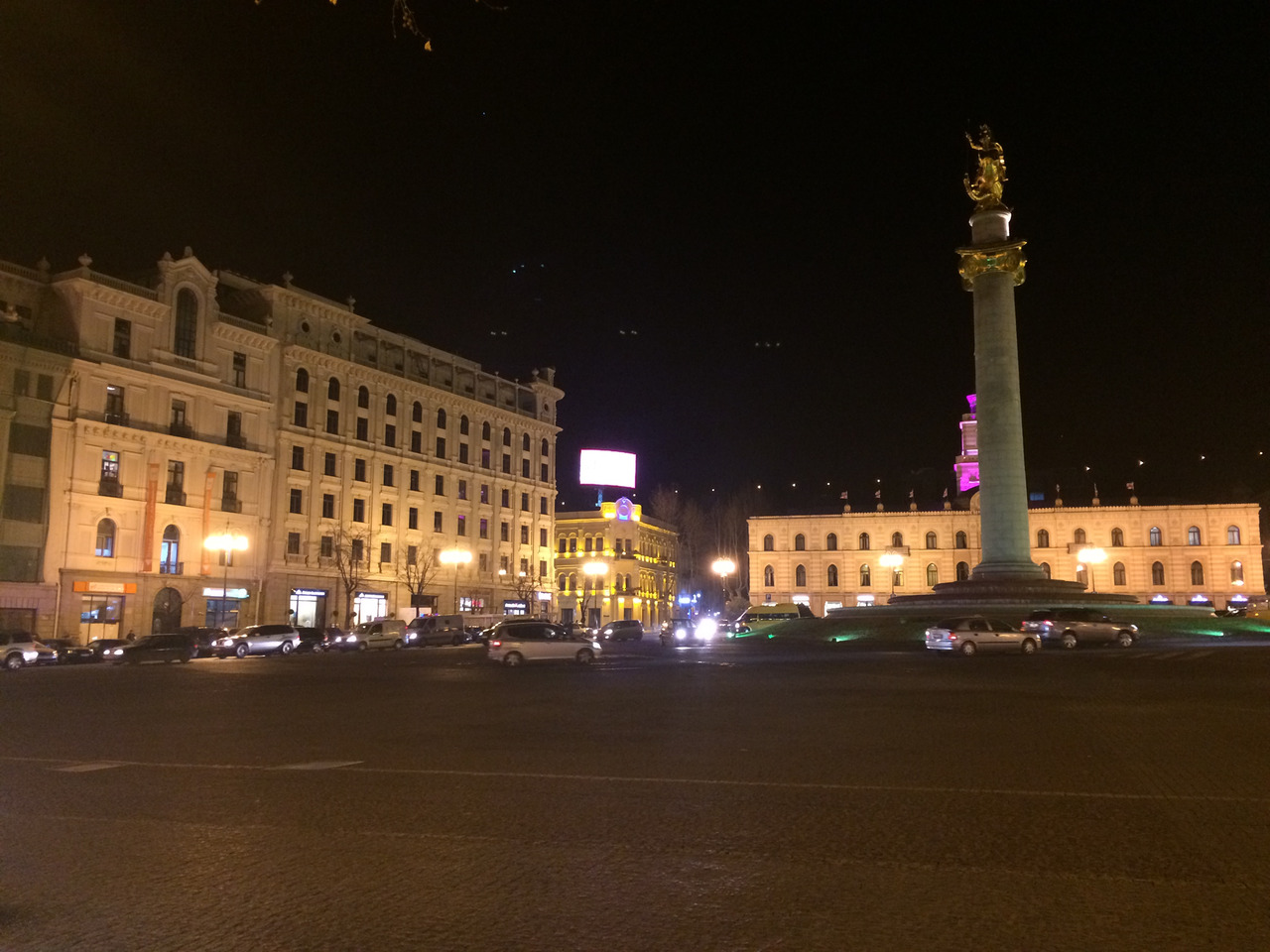
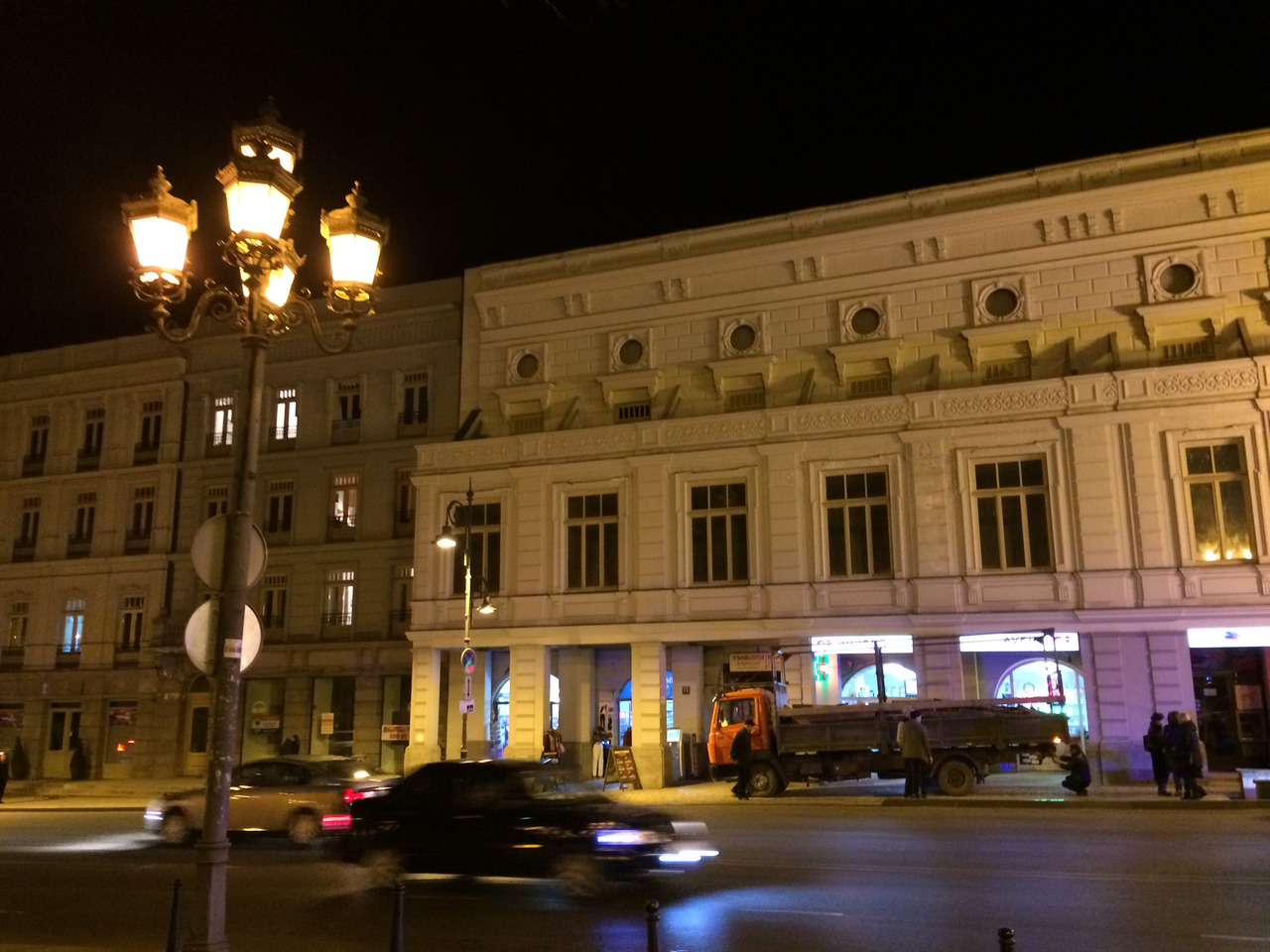
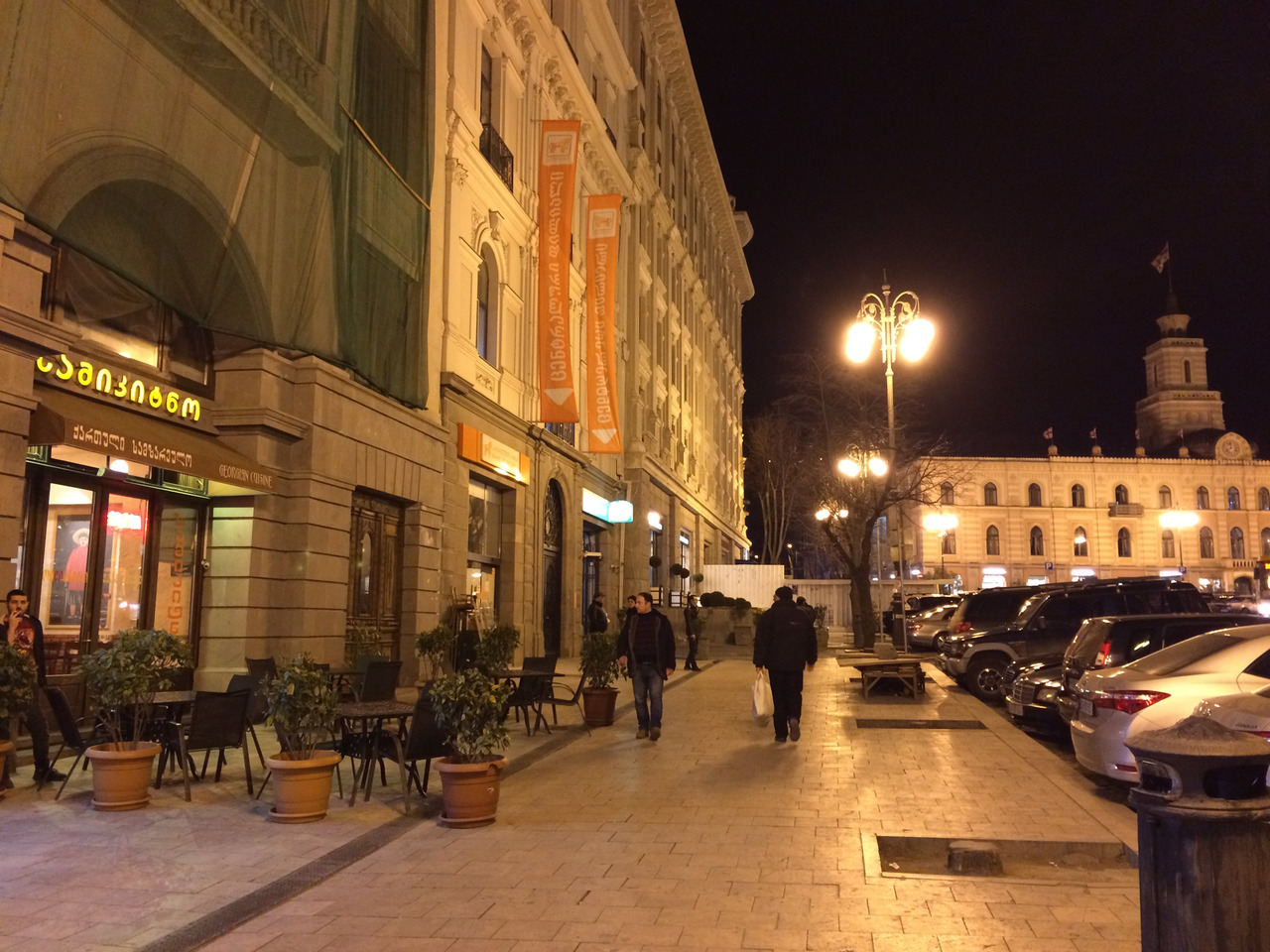
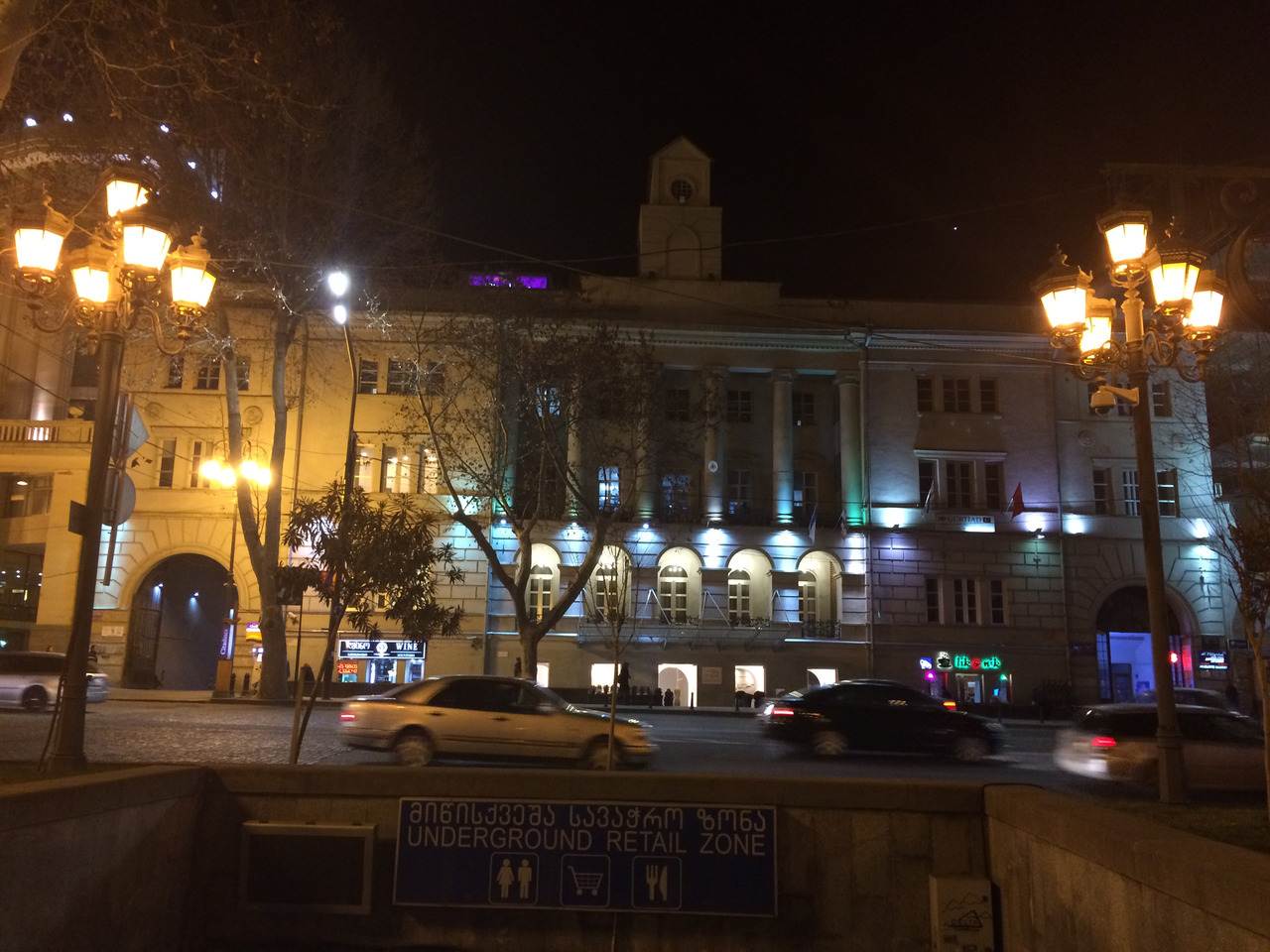
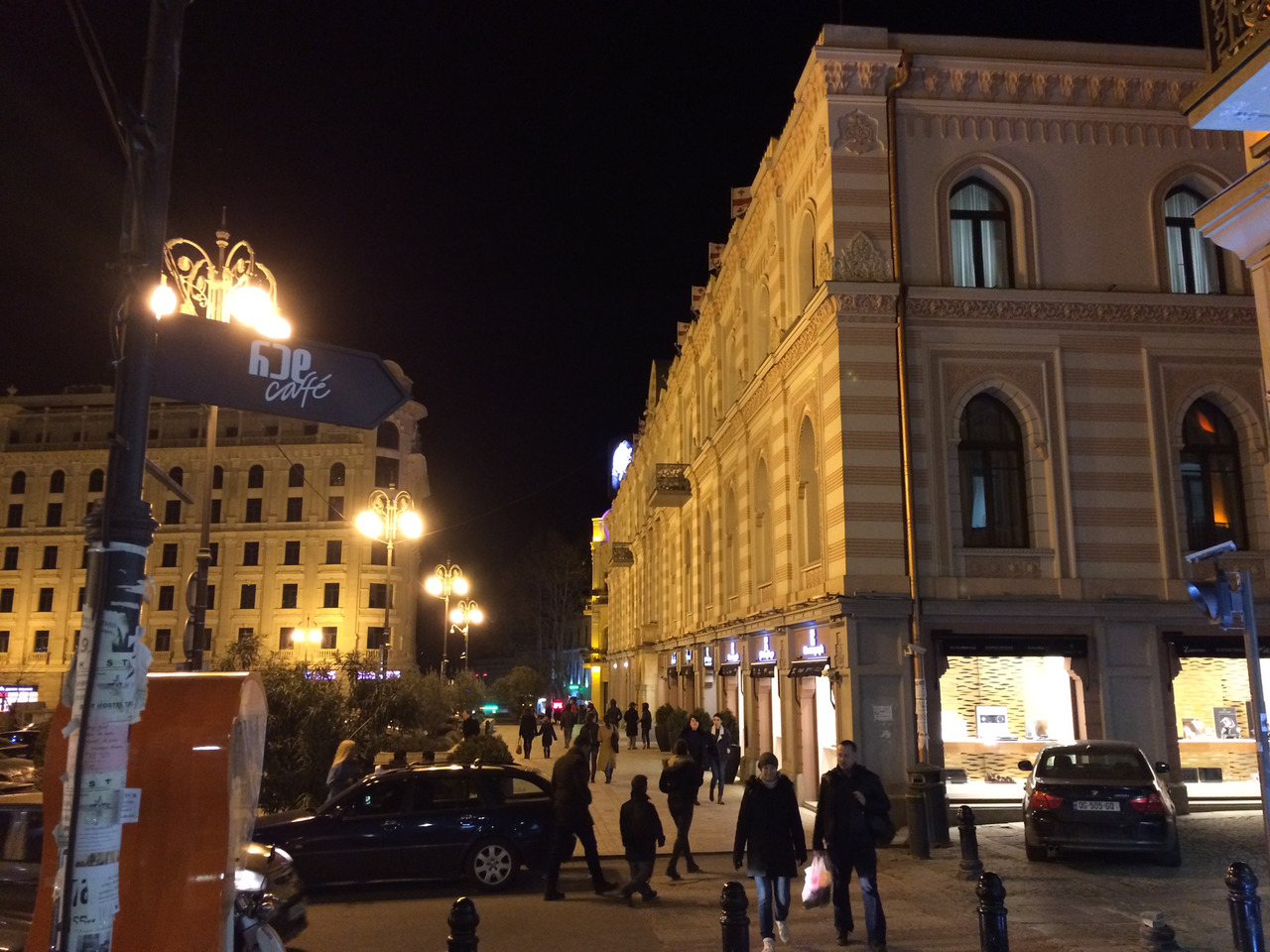
The movement around the monument to George the Victorious does not cease all night, like the youth returning from night clubs and discos.
PROSPECT SHOTA RUSTAVELI
In the evening and at night, the main street of Tbilisi, Shota Rustaveli Avenue becomes the main attraction point for all those who can not sleep.
Walk along this avenue from start to finish in the evening, and you will fall in love with this city.
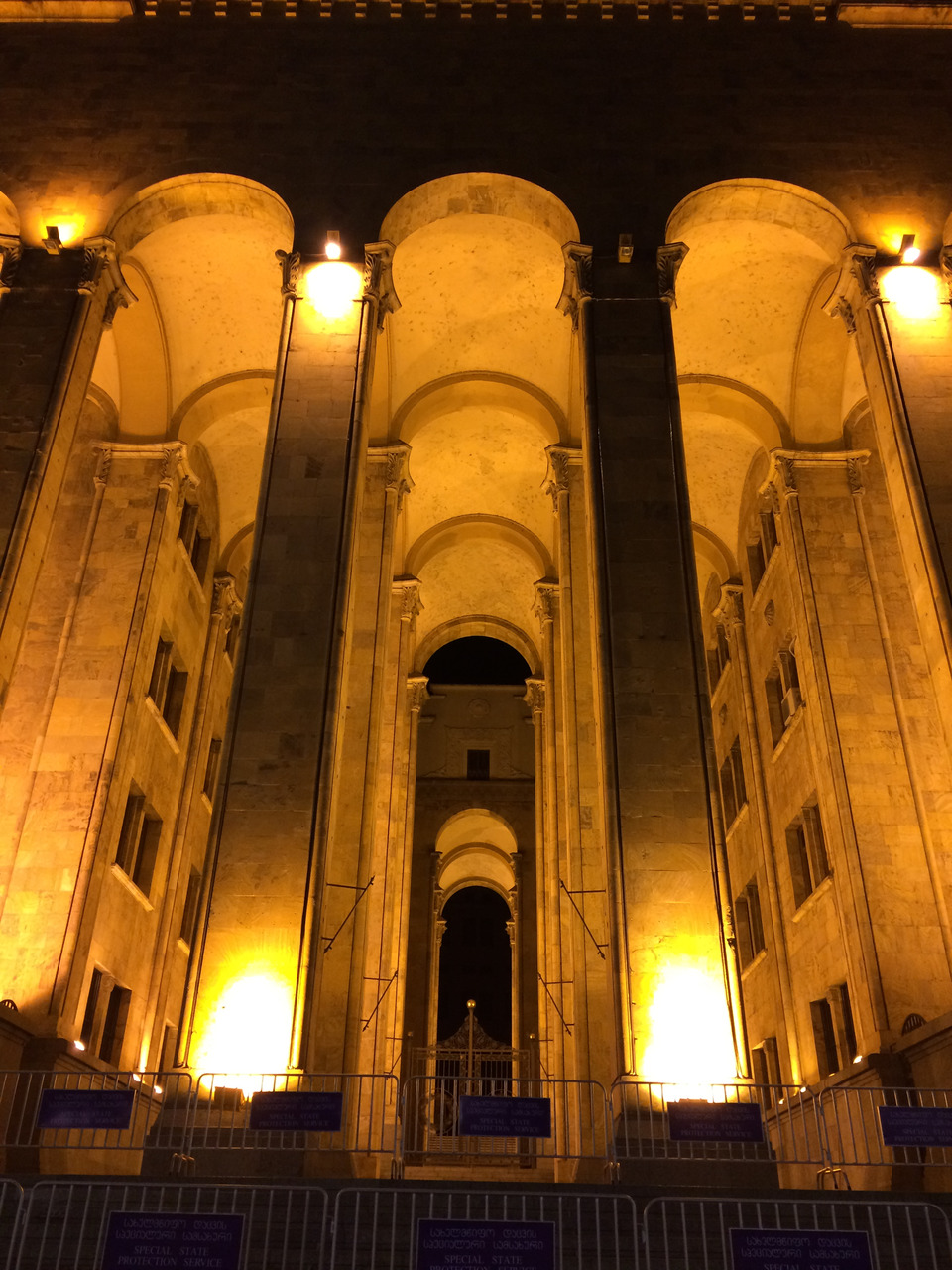
This street, like many other famous sites in Georgia and beyond, was named after the medieval poet and statesman, the author of the textbook “Knight in the Panther’s Skin”, Shota Rustaveli. The poet lived in 1172—1216, and his legacy still lives, almost 1000 years later.
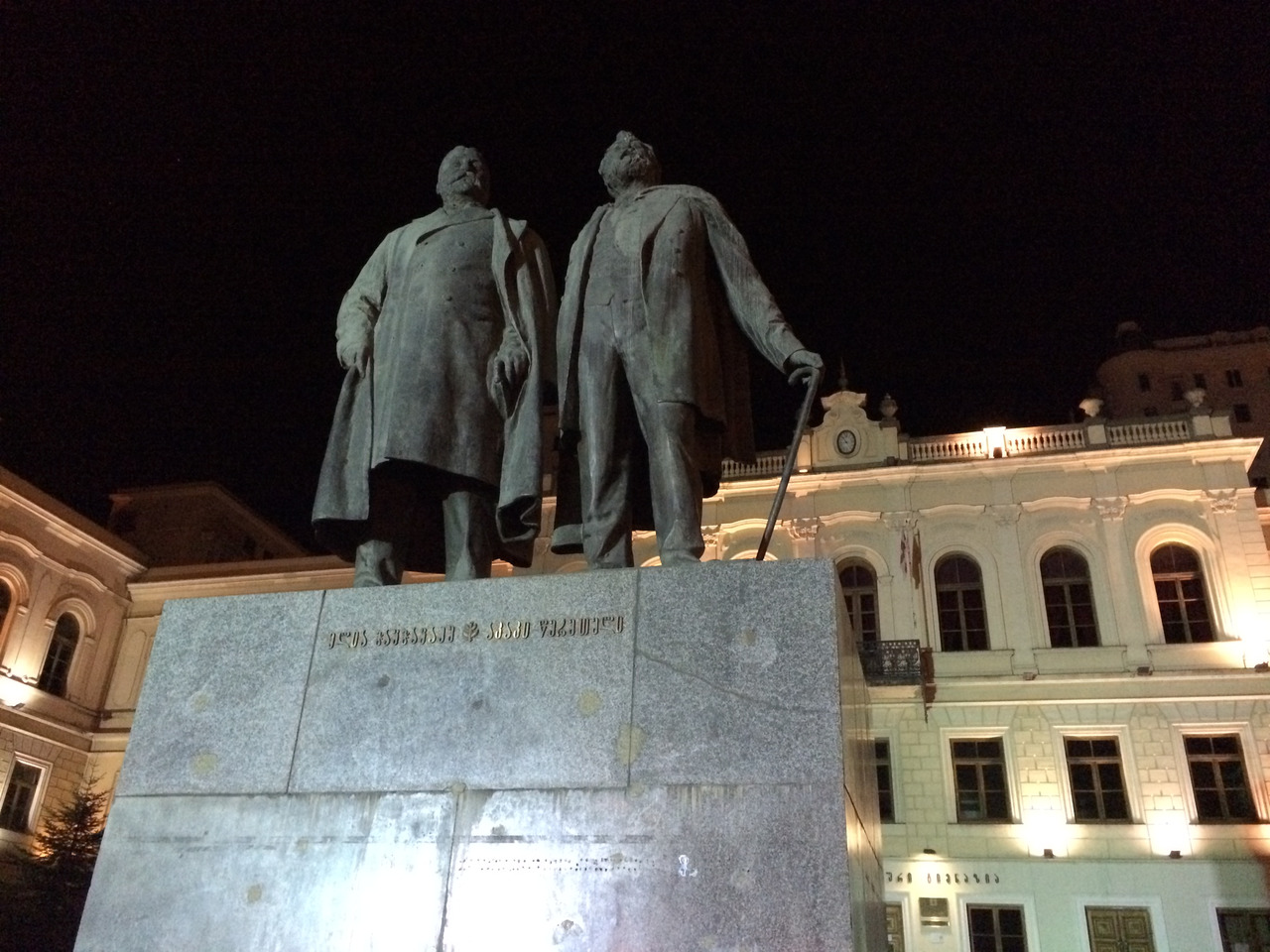
(the former Tiflis Gymnasium)
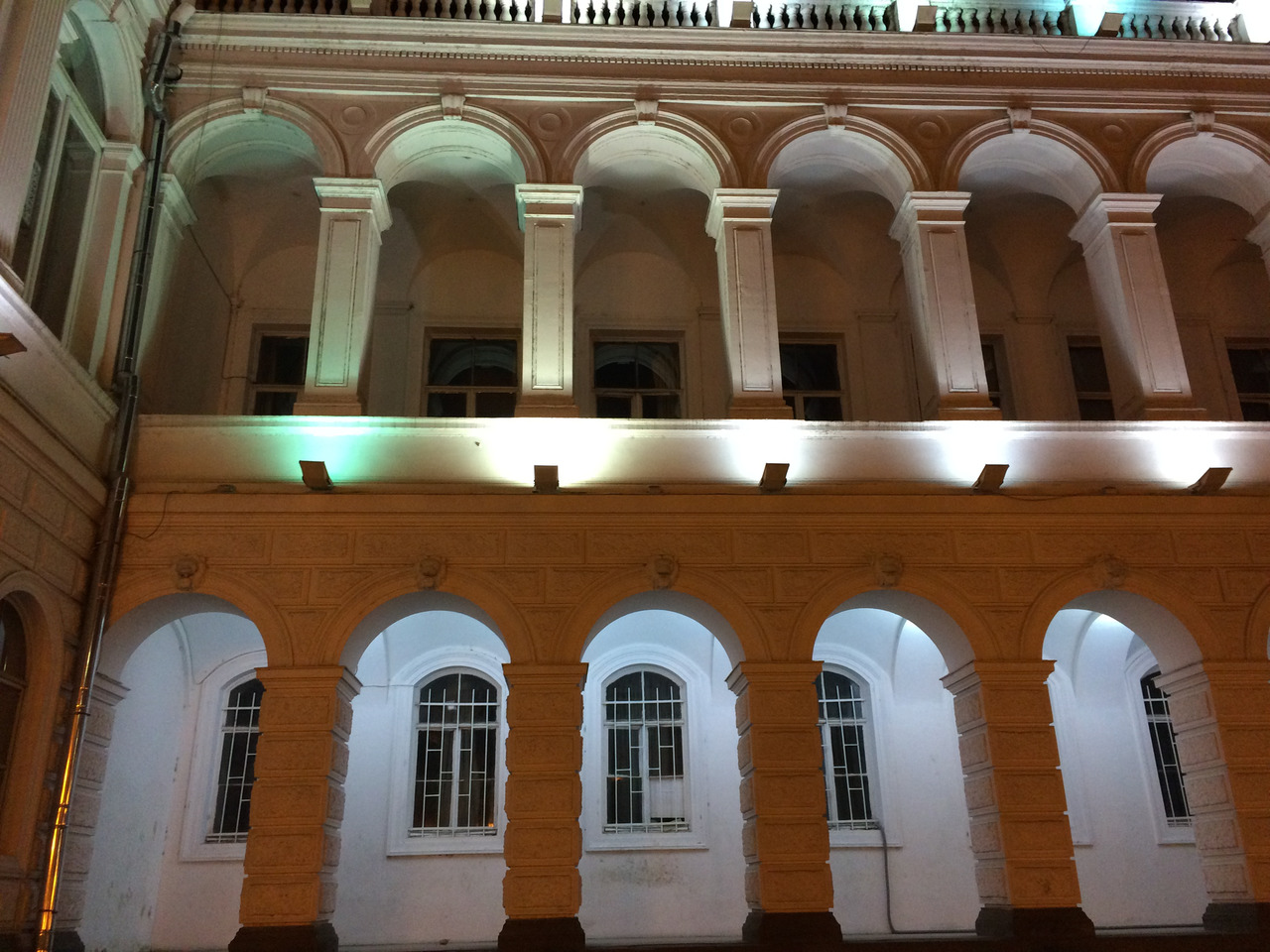
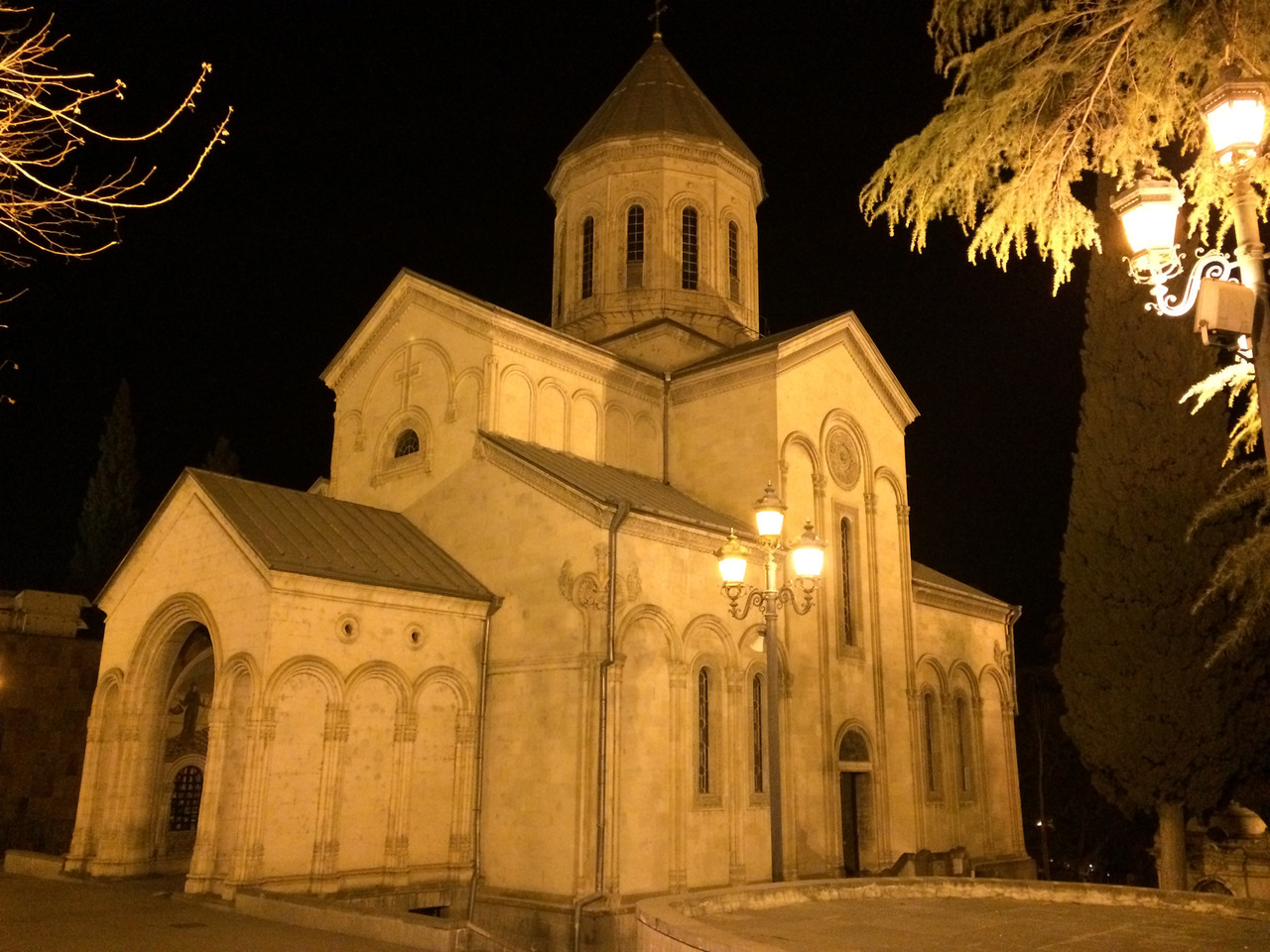
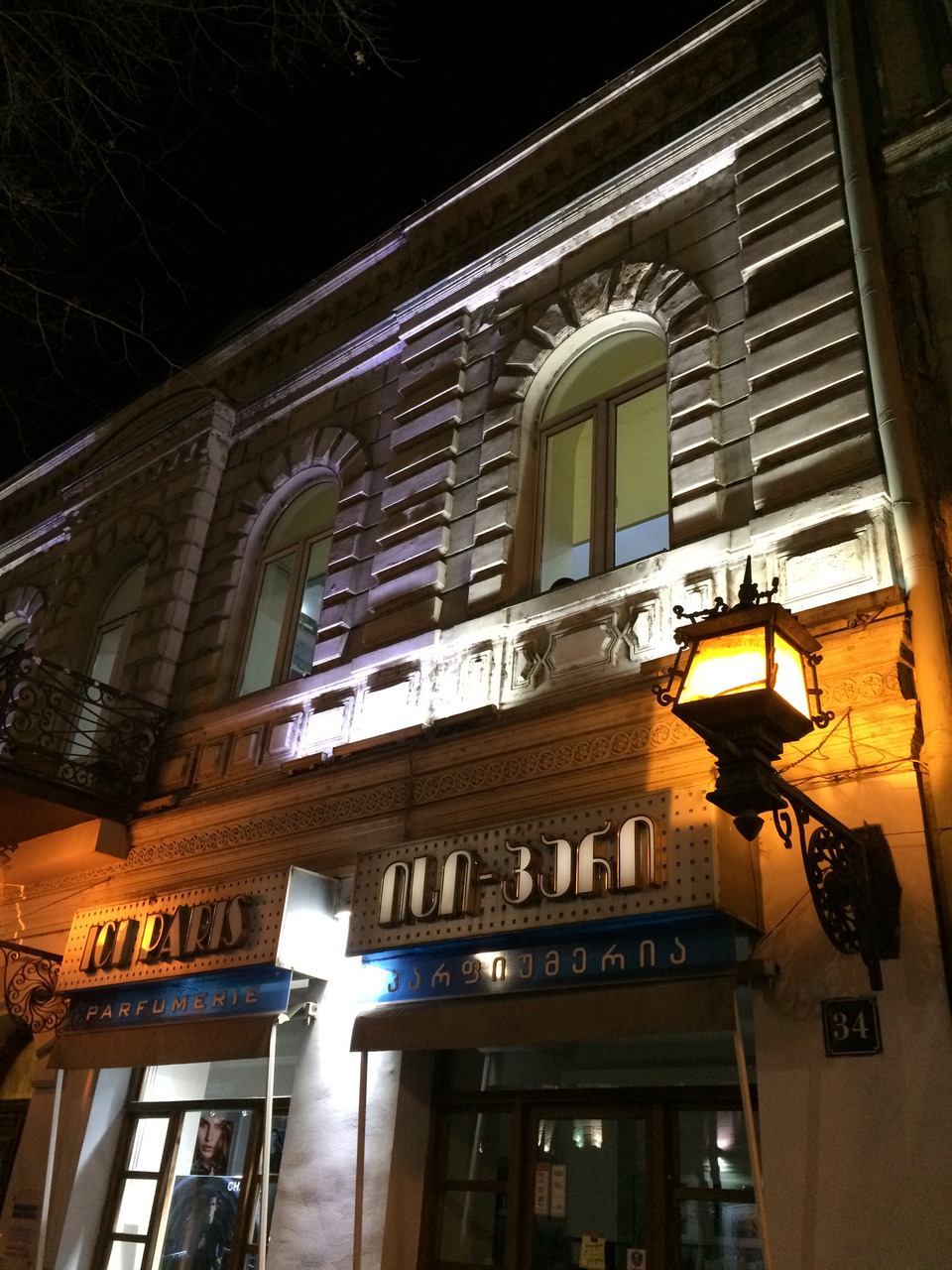
It should be noted that the streets named by his name are also in Moscow, Chelyabinsk, Tashkent, and many other cities of the former USSR.
ACADEMY OF SCIENCES IN THE EVENING
An important place on Shota Rustaveli Avenue is the building of the National Academy of Sciences of Georgia with a restaurant, exchange offices and numerous shops in semi-circular arcades on the first floor.
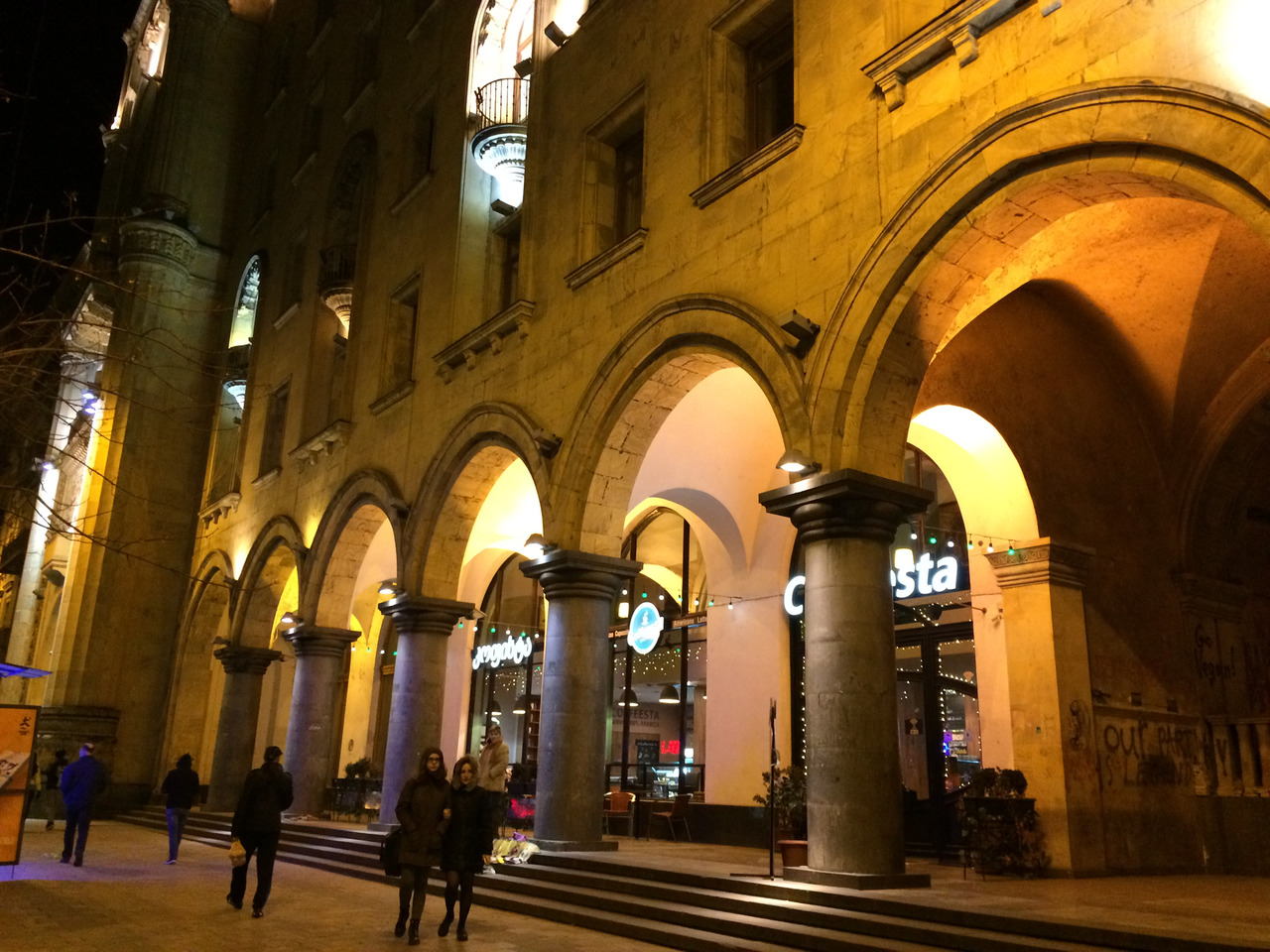
This place is a kind of mini-bazaar, which attracts merchants of a wide variety of souvenirs and small things during the day, as well as taxi drivers and fans of late partying at night.
GRAFFITI TBILISI
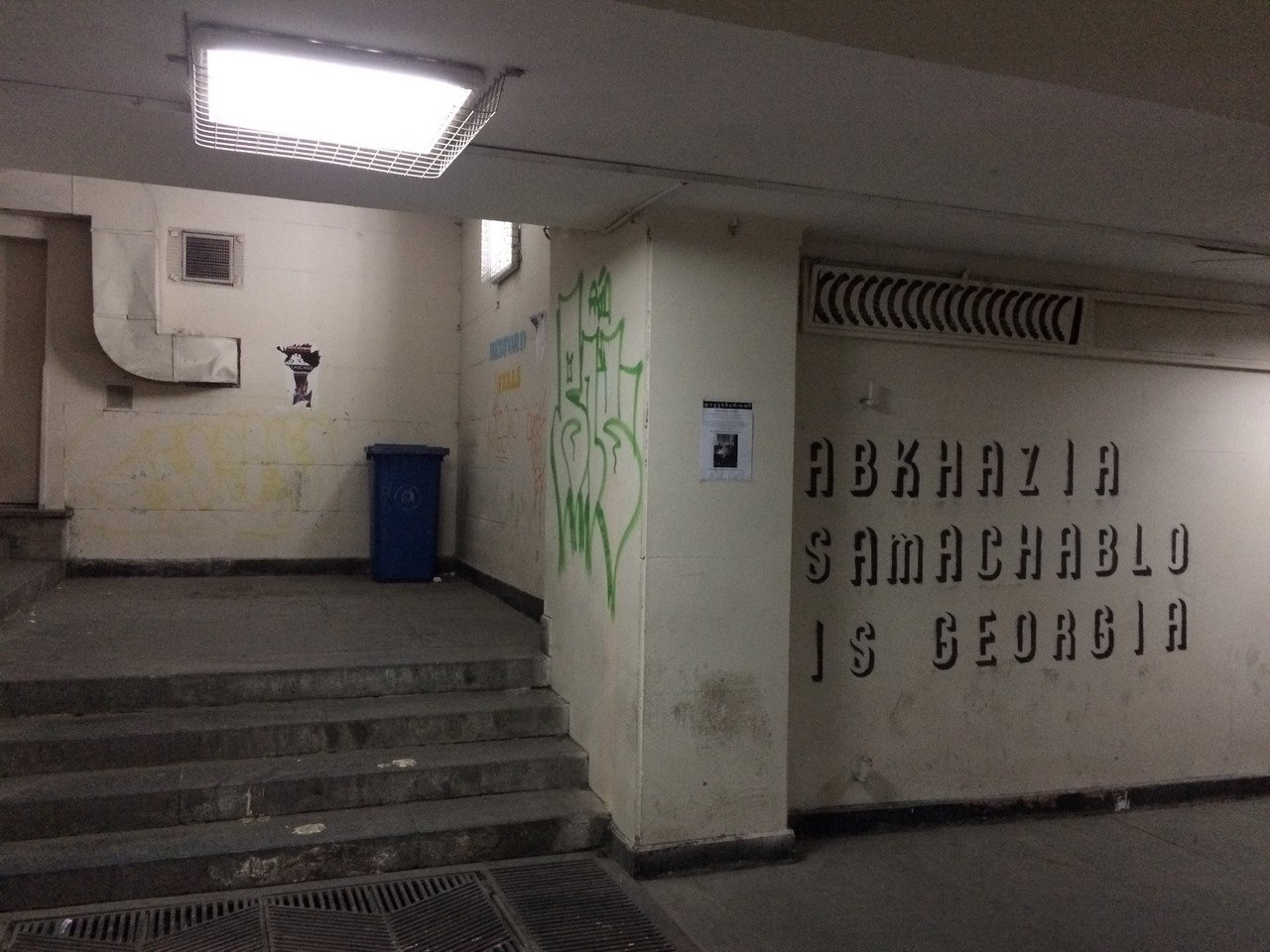
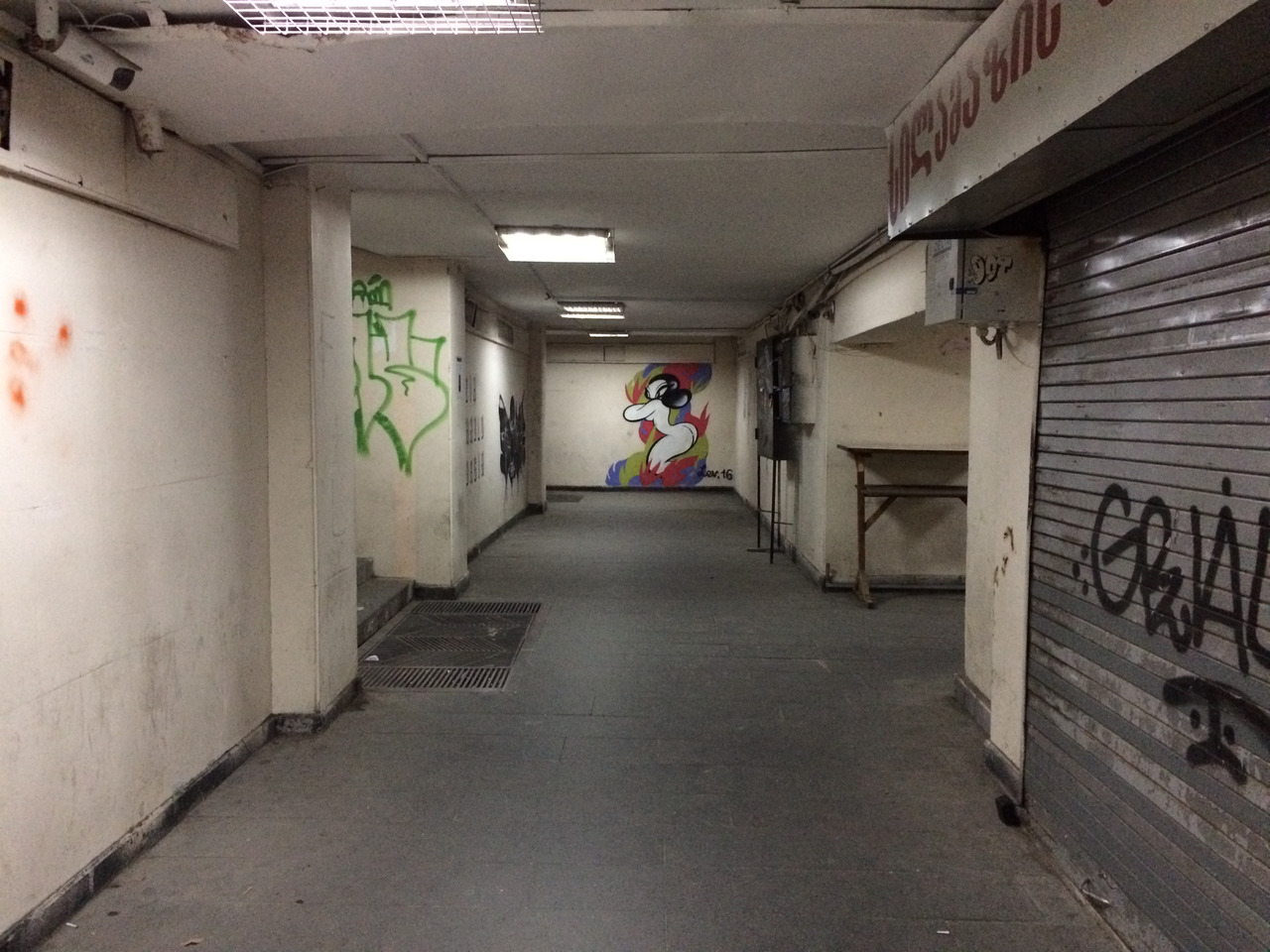
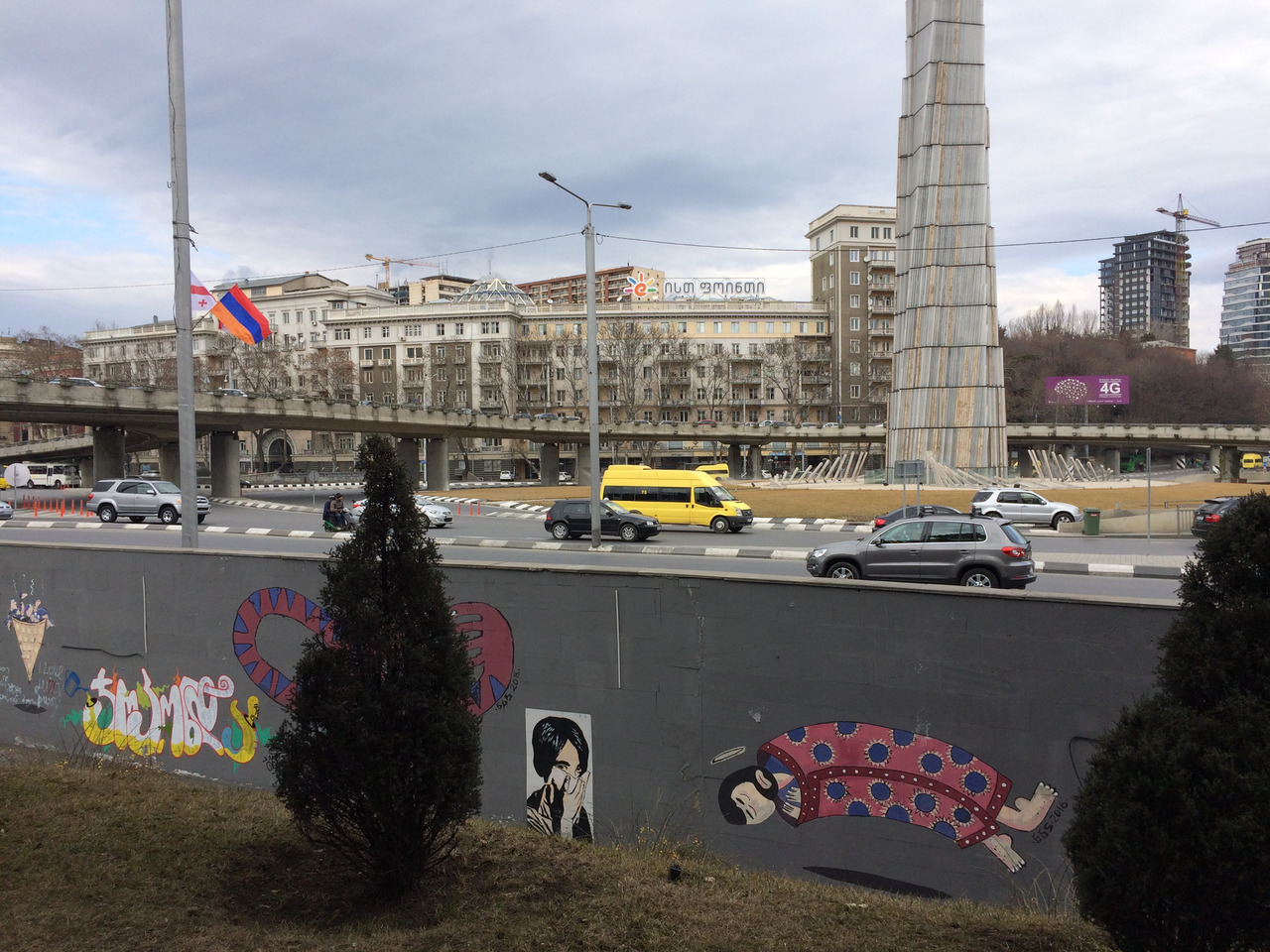
The descent into the first pedestrian crossing on Shota Rusteveli avenue has proved that expressing one’s thoughts, political and social contradictions through graffiti is one of the trends of modern street art in this city.
Wendy’s
By the way, in Tbilisi, on Shota Rustaveli Avenue there is a restaurant of the American Wendy’s network, which is more expensive by price policy than McDonald’s, but is still considered a fast food economy class.
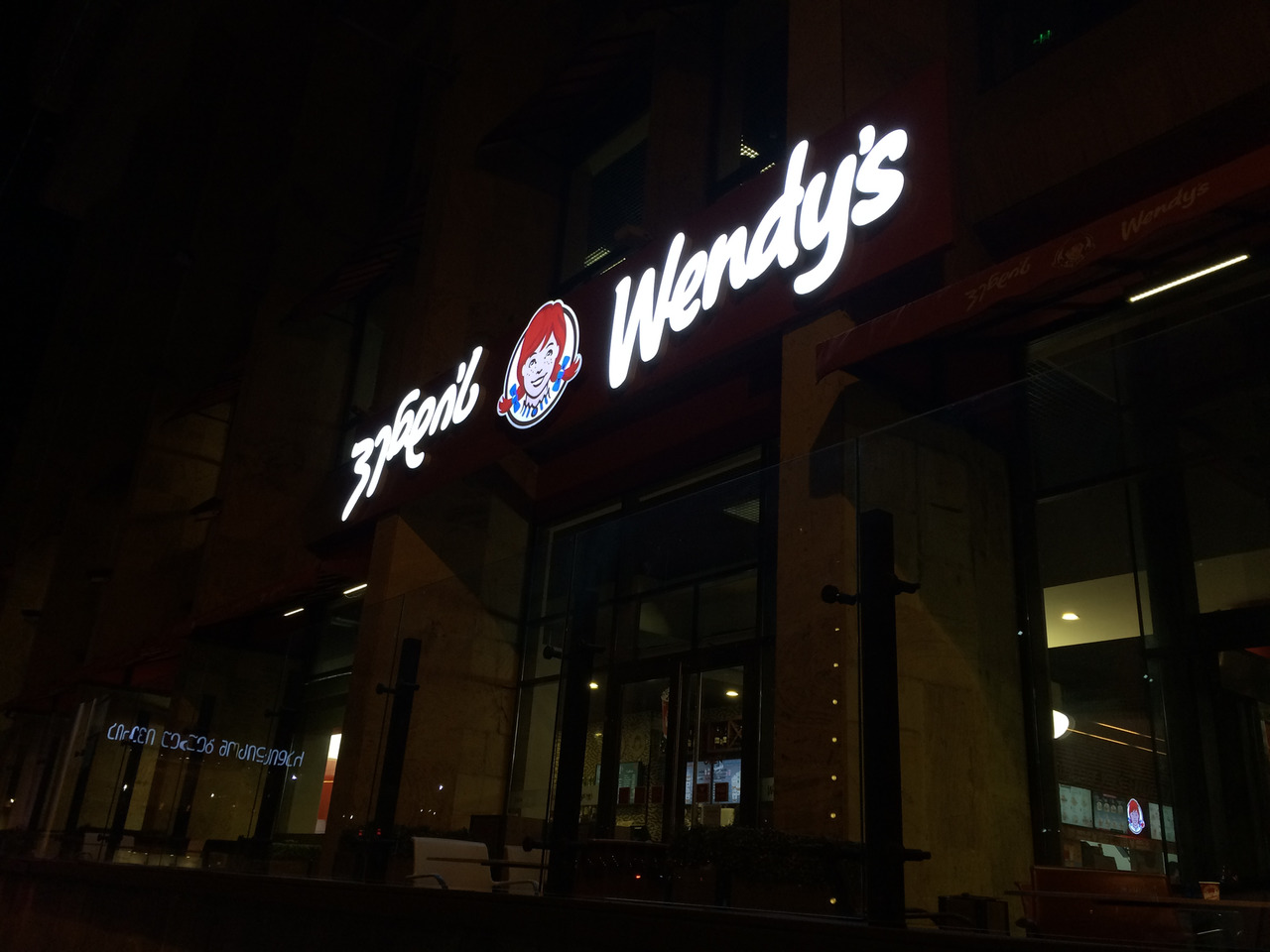
Recall that the last of the eight restaurants Wendy’s in Russia was closed in 2014. Therefore, if you want to try one of the 10 burgers from beef, or one of the 9 burgers from chicken fillet, this is another reason to visit Tbilisi.
The restaurant is located at: Shota Rustaveli 31, on the Rose Revolution Square.
OPERA THEATER IN THE EVENING
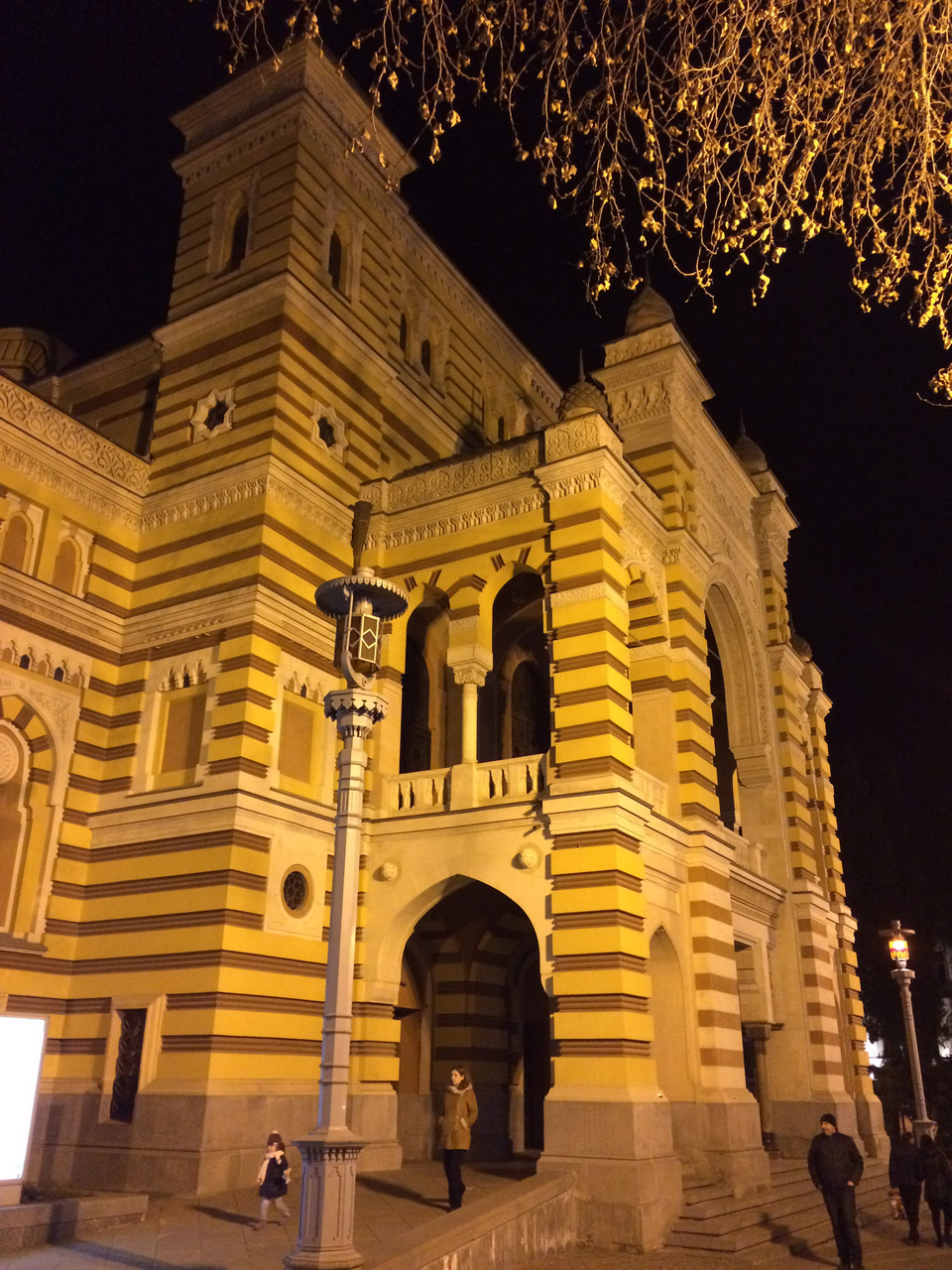
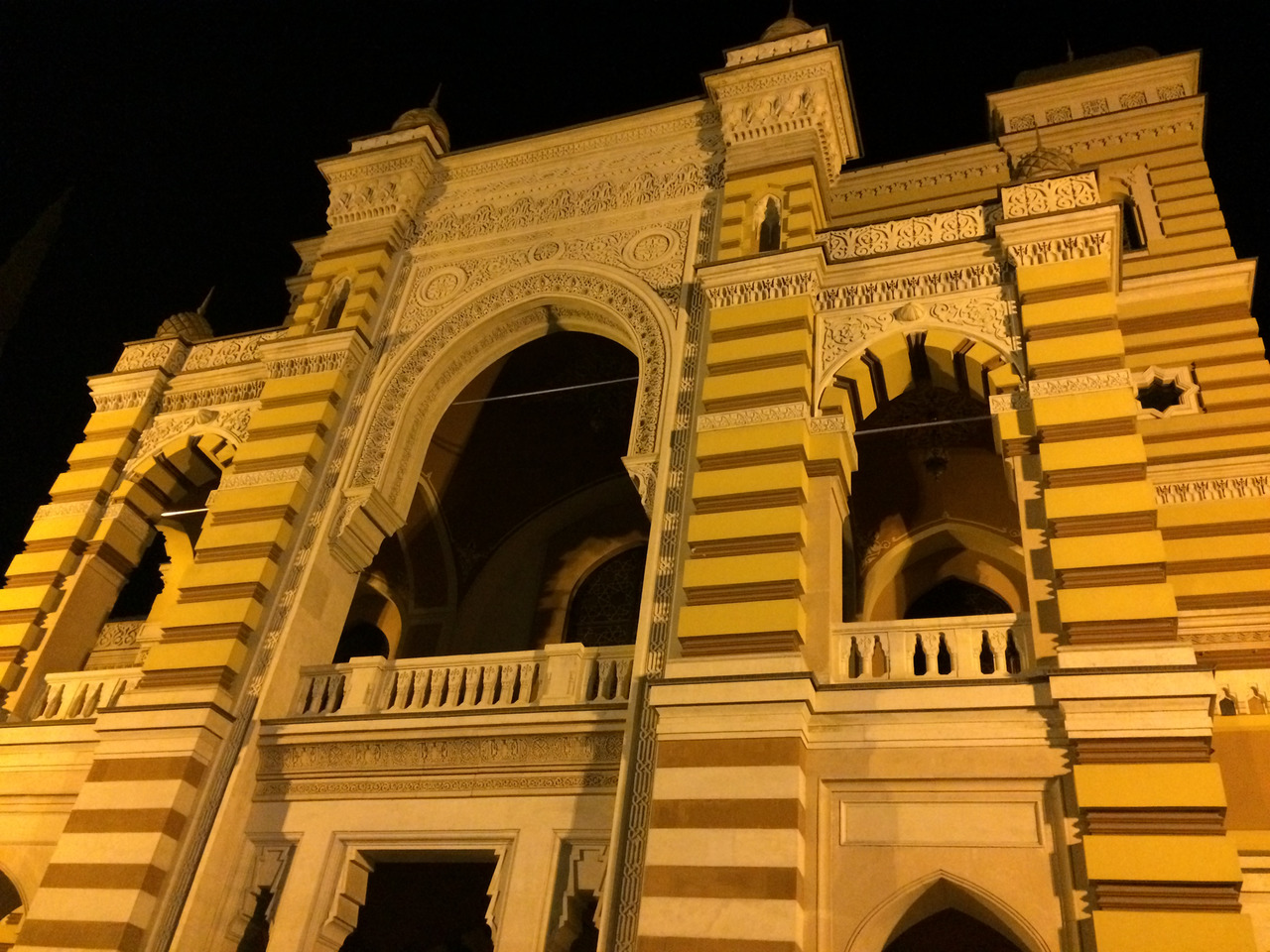
Fabulous in its architecture, the Opera and Ballet Theater of Tbilisi is especially beautiful in the night illumination. About the history of the theater itself, we will also talk later.
STREET GEORGIY AGHVLEDIANI
The place where you can have a lot of fun in the night in Tbilisi is the street of Georgiy Akhvlediani. Be prepared for the fact that in one of the many restaurants, pubs and disco bars you will find an excellent campaign and new friends, including from among our compatriots.
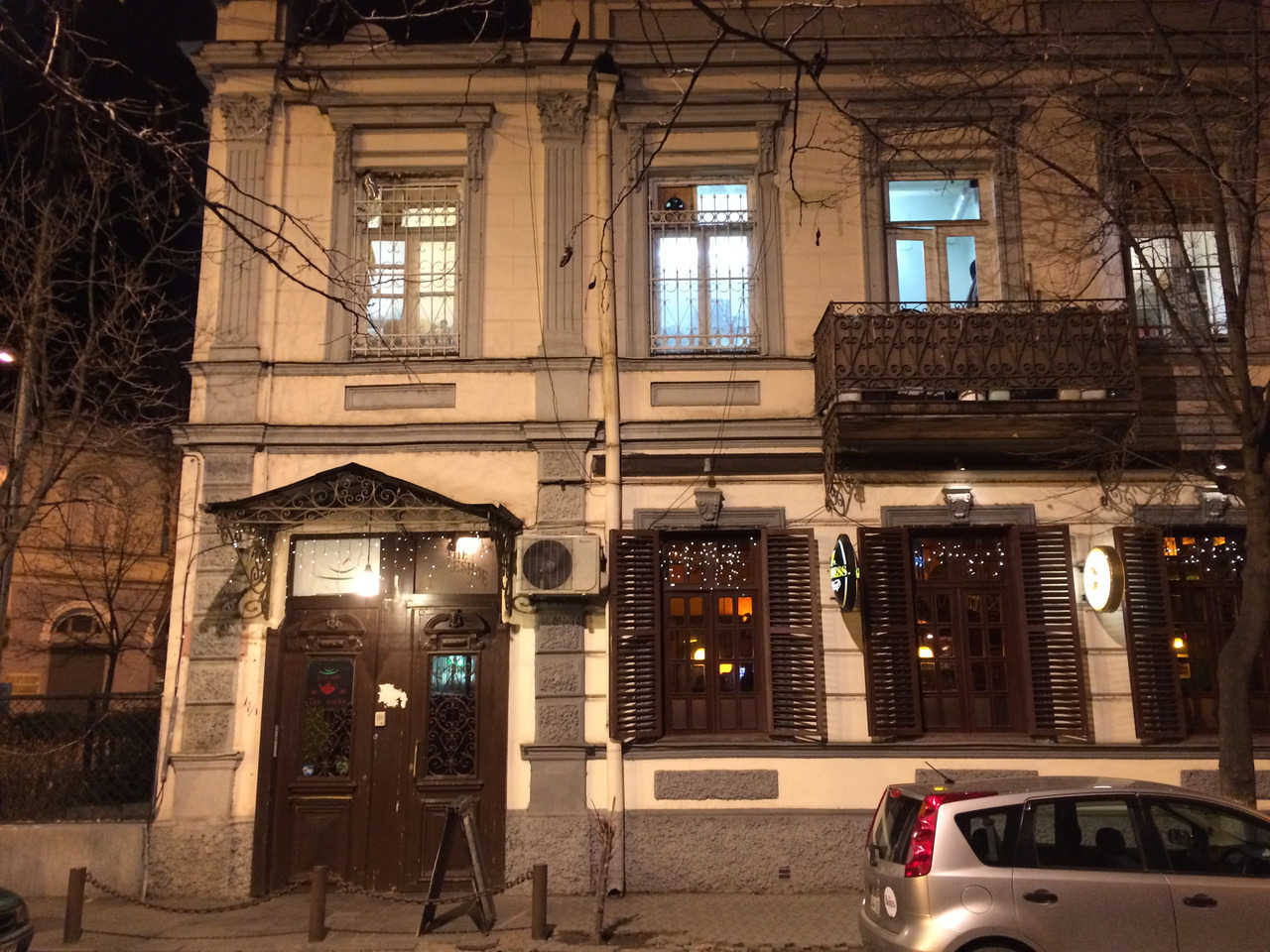
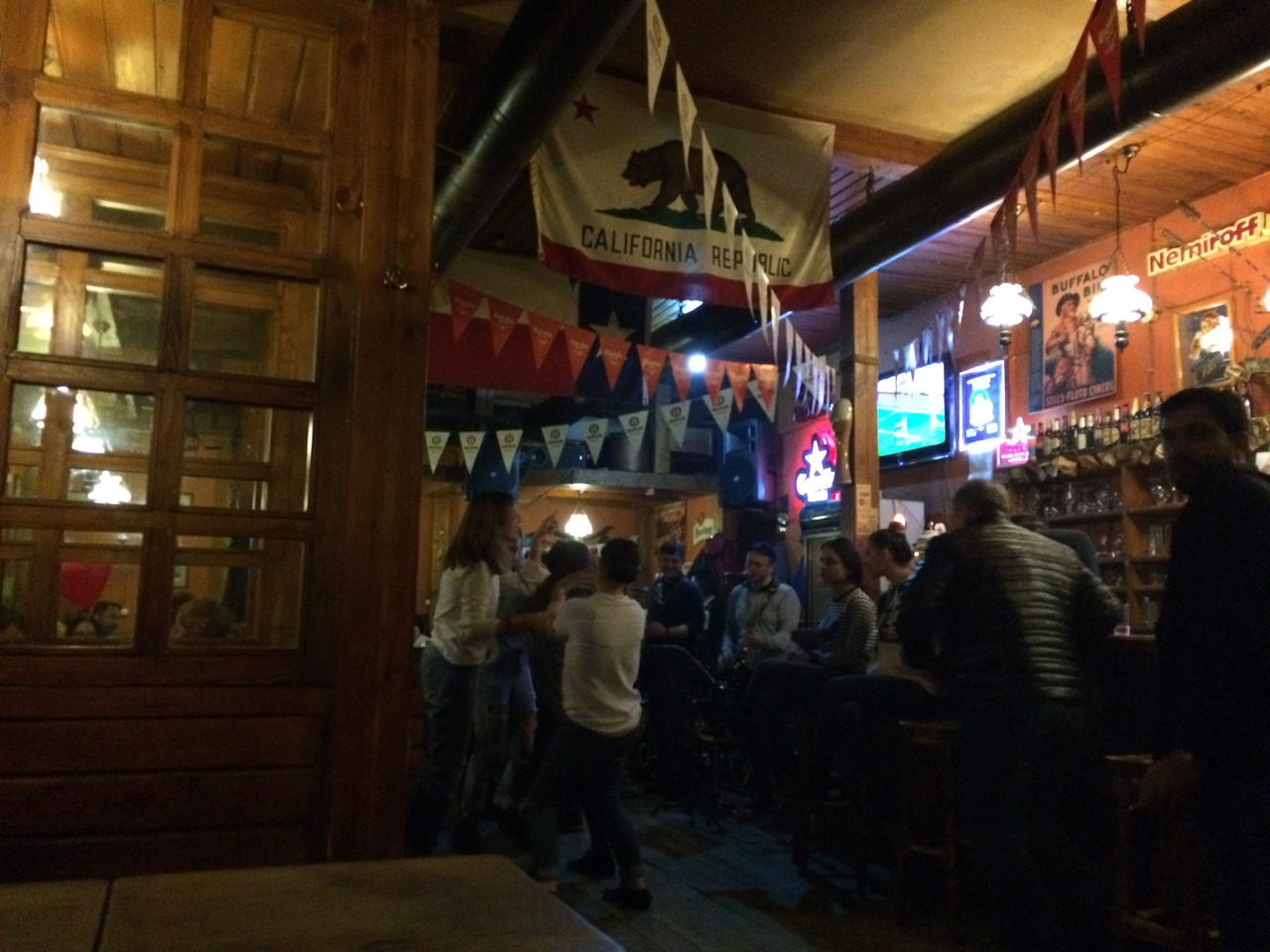
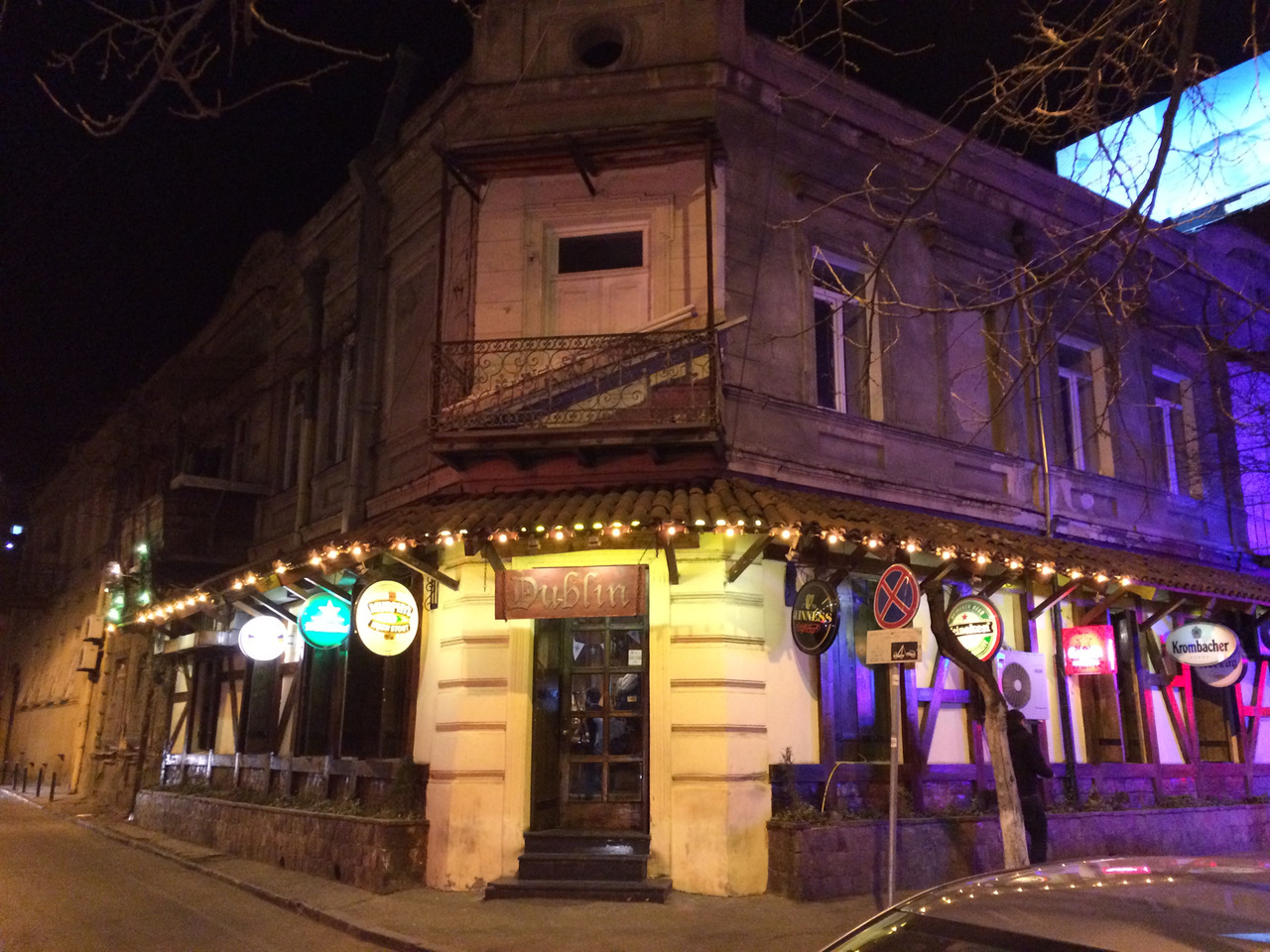
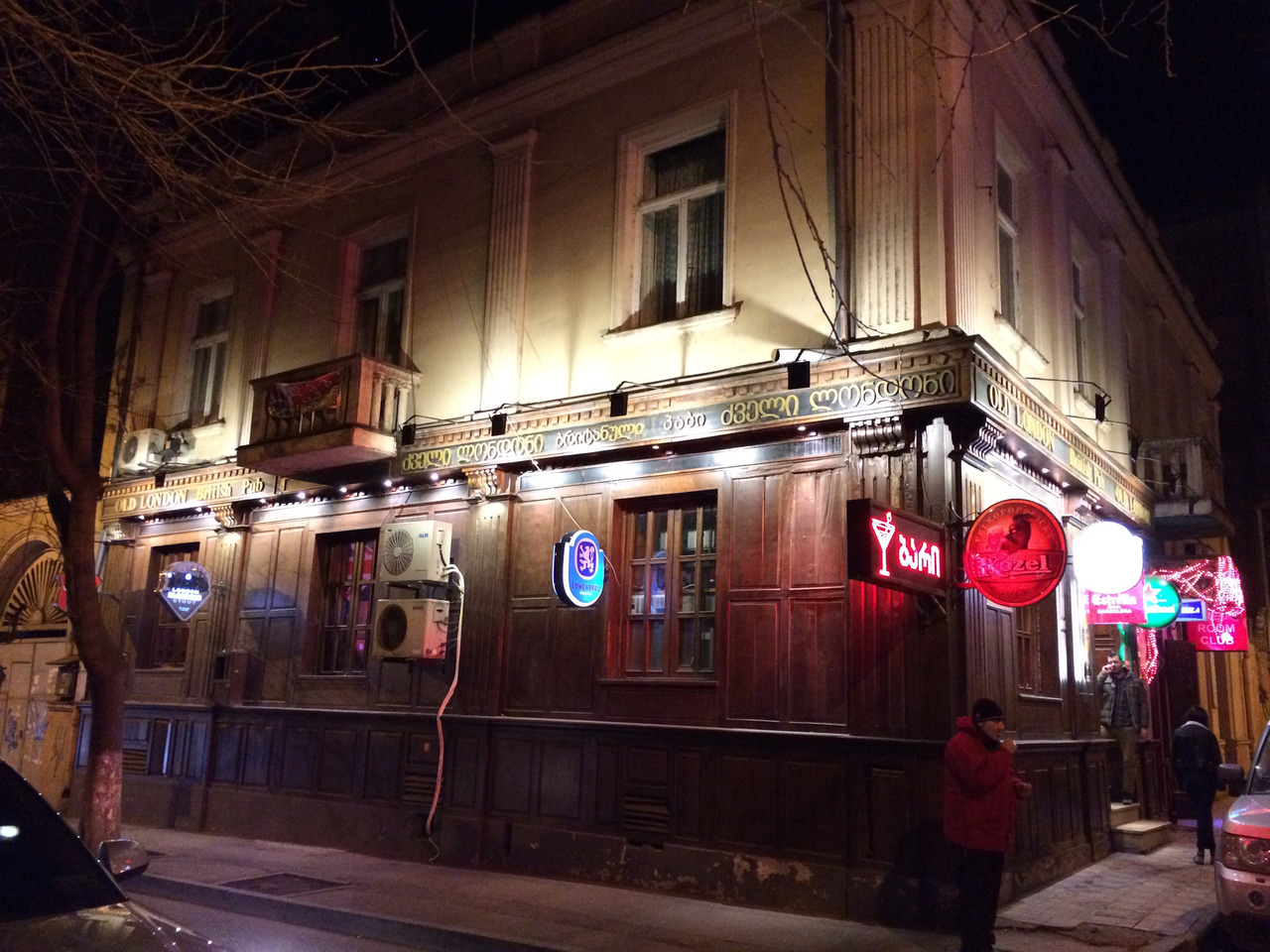
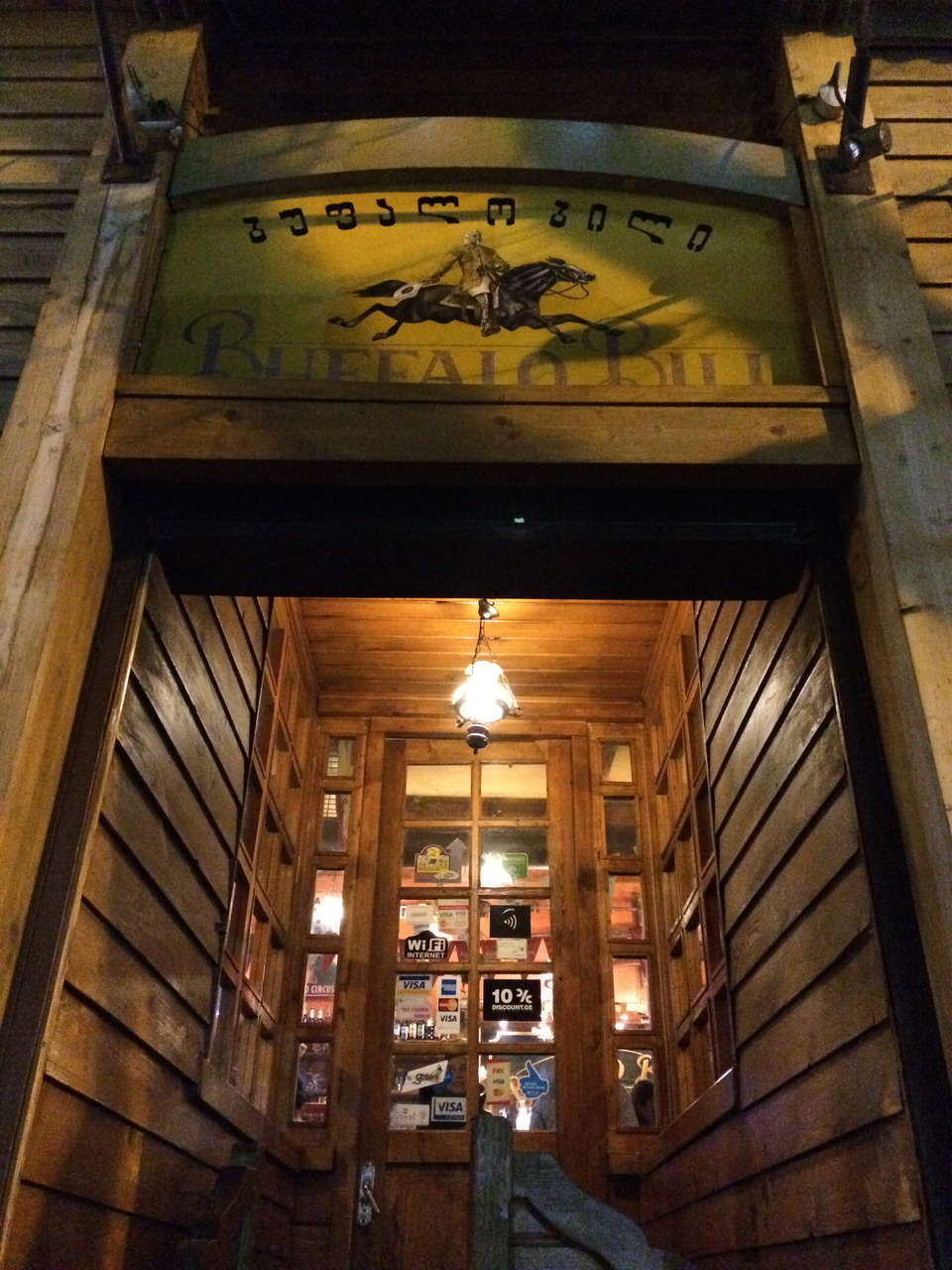
Also do not be surprised if local owners of restaurants and bars sit down with you at the same table, treat them with local drinks and even call you “Valiko” or “Sofiko” (men and women respectively). Hospitality is one of the most striking characteristics of the Georgian people, and here you will feel it.
So, the first evening in Georgia ended well after midnight, and the next day promised to be no less interesting.
TBILISSIAN METROPOLITAN
The metro system in Tbilisi was opened as far back as 1966. Then it was the first metro in the Caucasus and the fourth in the USSR (after Moscow, Leningrad and Kiev). H
To date, there are 23 stations operating on two lines — Ahmeteli-Varketilskaya and Saburtalinskaya. The first of these two lines was commissioned in 1966, and the second — in 1979.
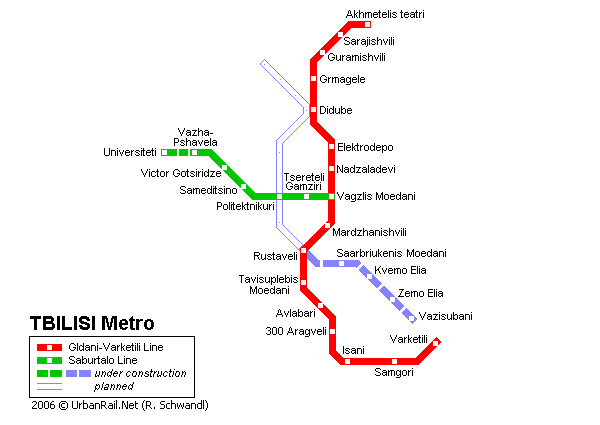
It is interesting that along the length of the operated lines the Tbilisi Metro takes 129th place in the world.
Since the metro in Tbilisi was designed and built since the 1960s, it was affected by the signs of time, and the stations were designed in an economical style typical for this period. Although they contain national elements.
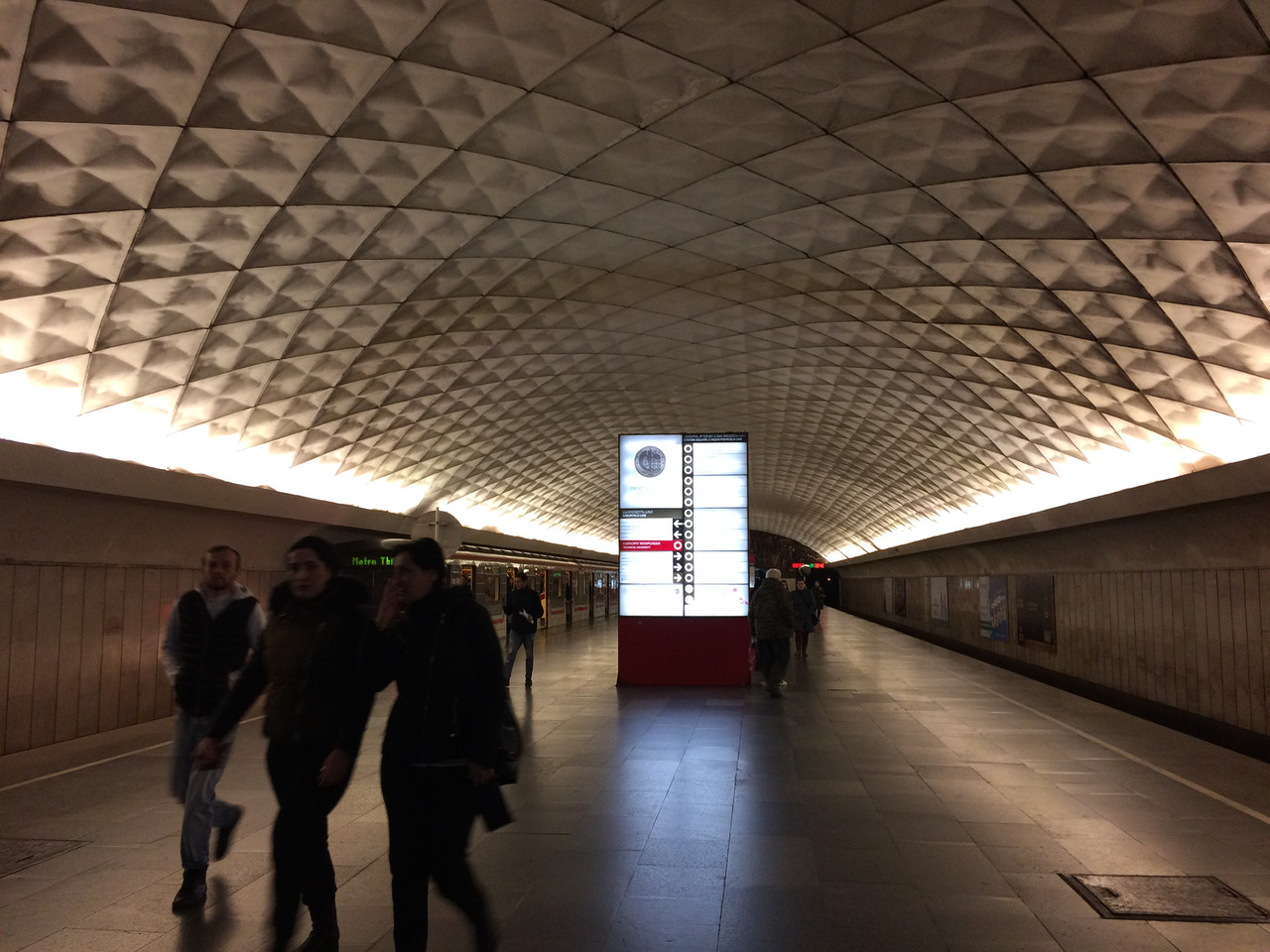
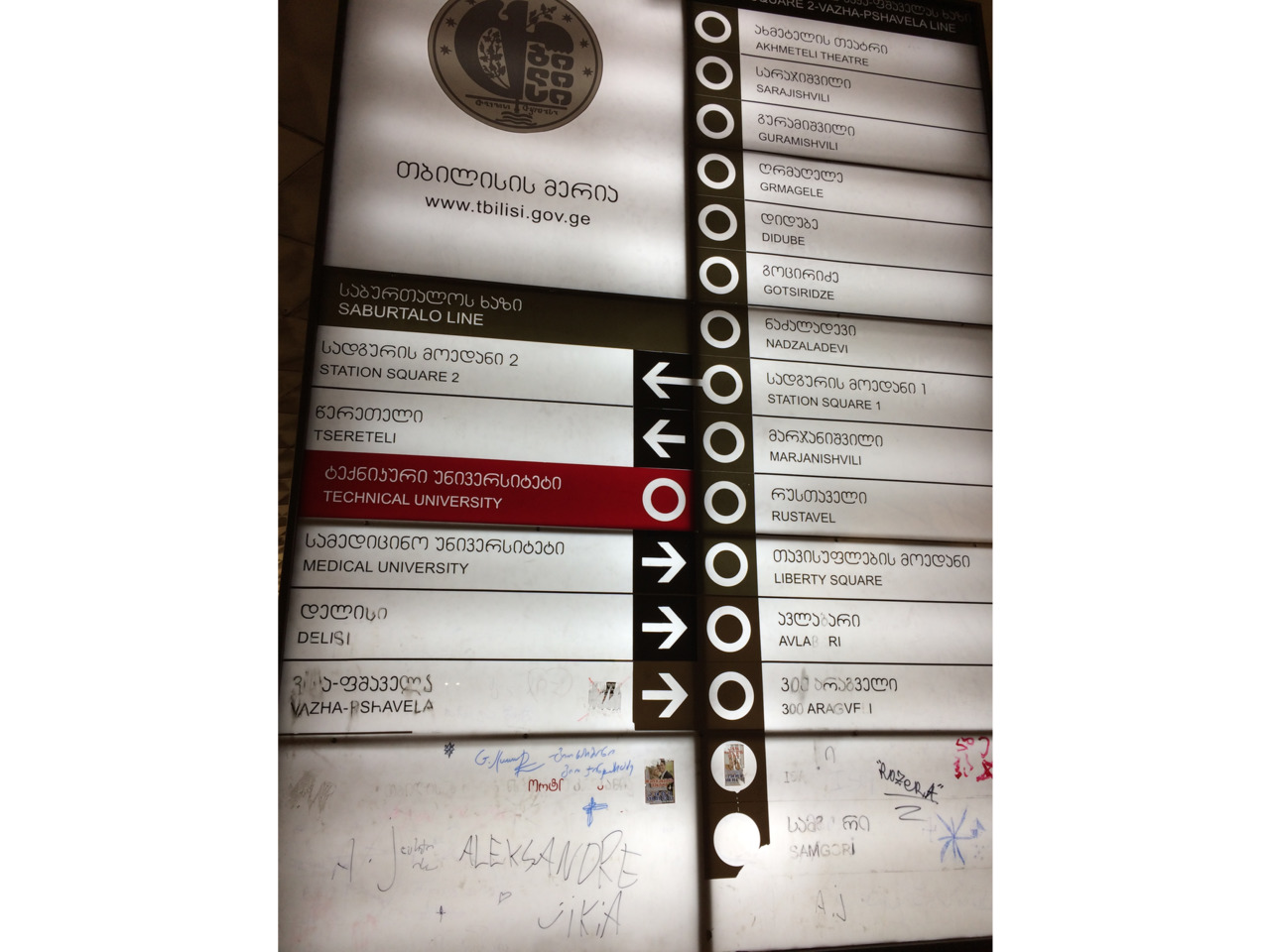
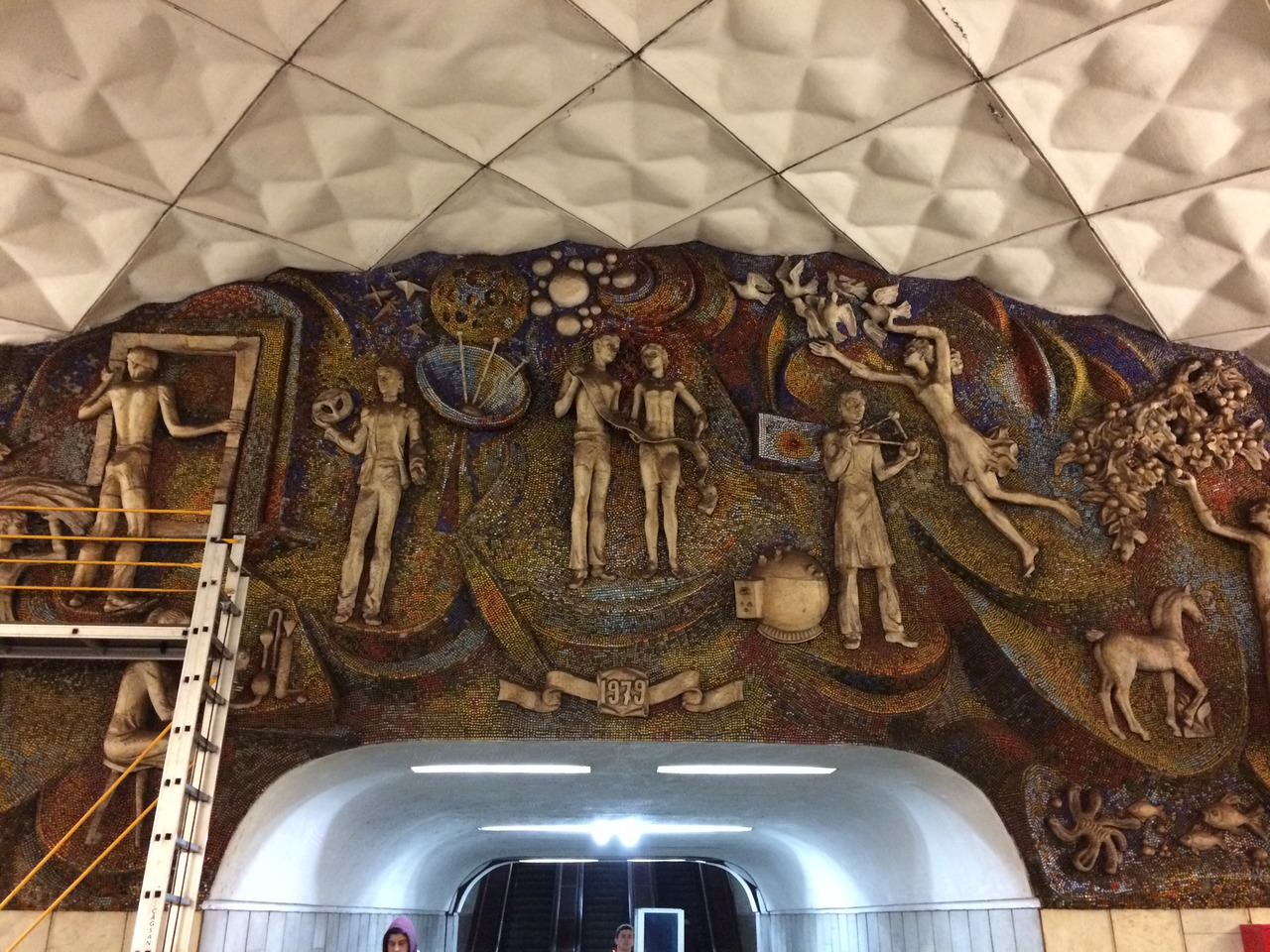
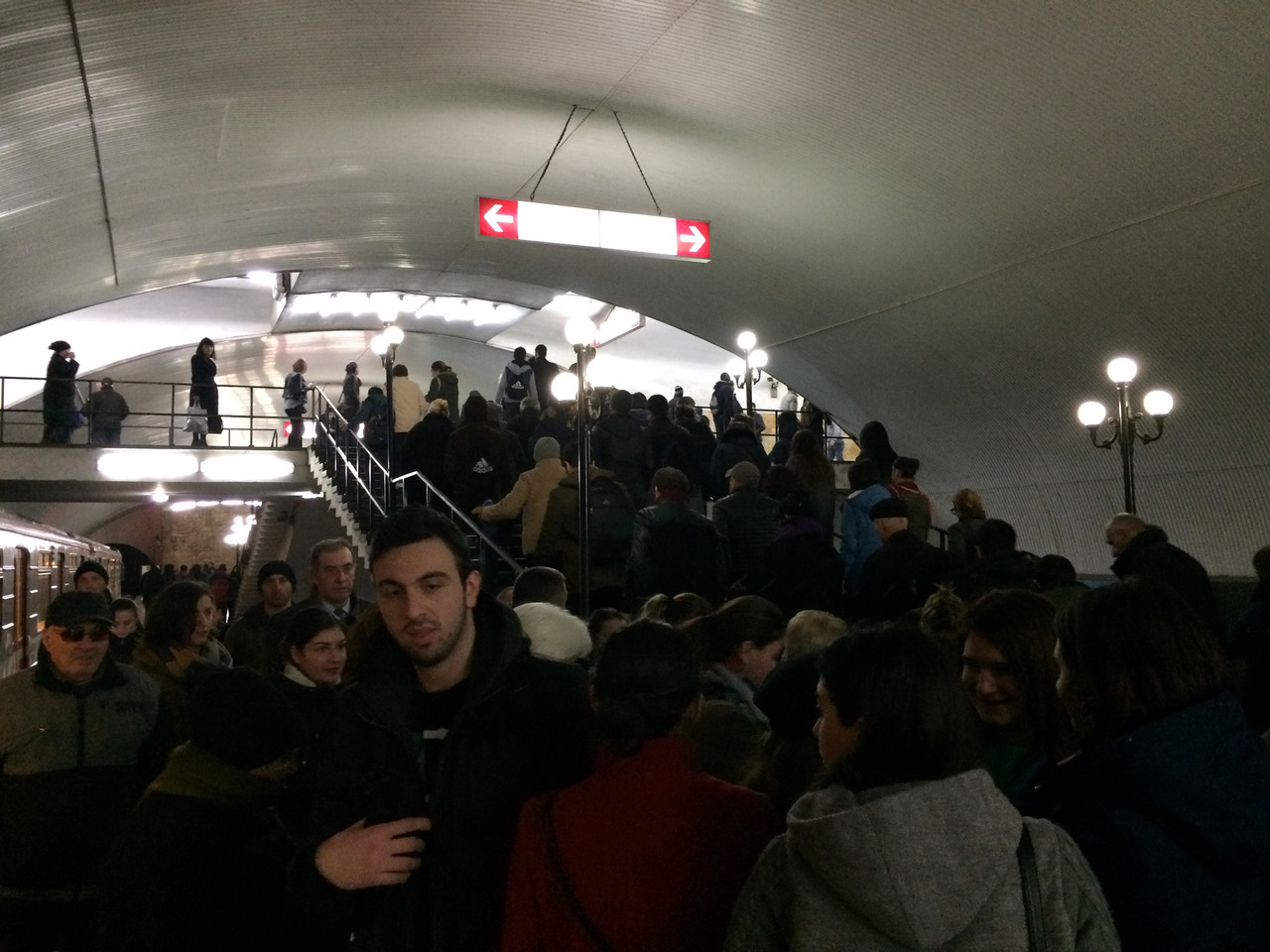
Understand this metro is very simple. At each station there are cash desks, where you can buy a travel card, the collateral value of which is 2 lari. In addition, you can put money on the card, depending on how many trips you have. One trip by metro costs only 50 tetri (for Russian money about 12 rubles). At the same time, within 1.5 hours from the time of payment for a trip to the metro on the same map, you can take a free ride around the city by bus.
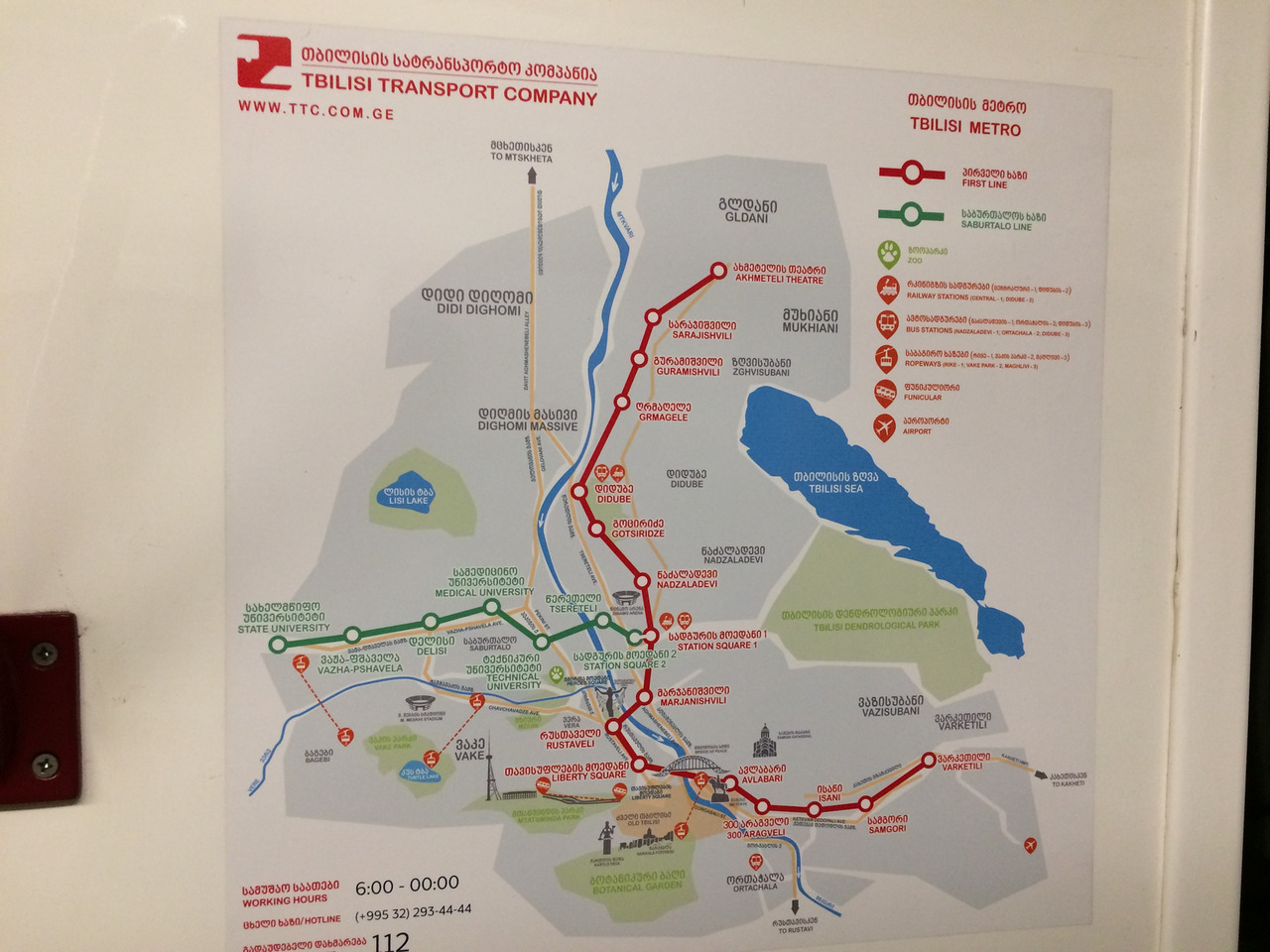
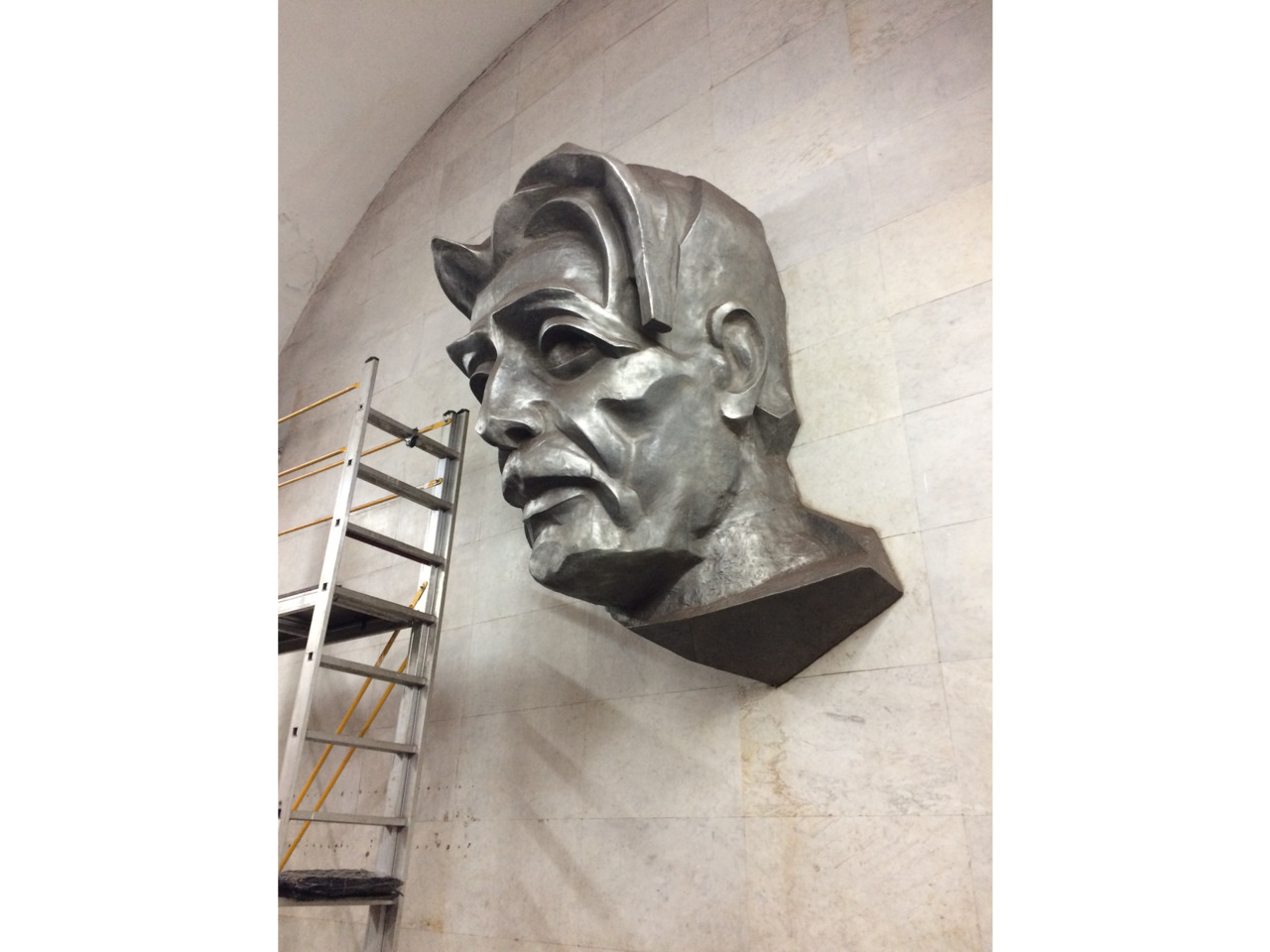
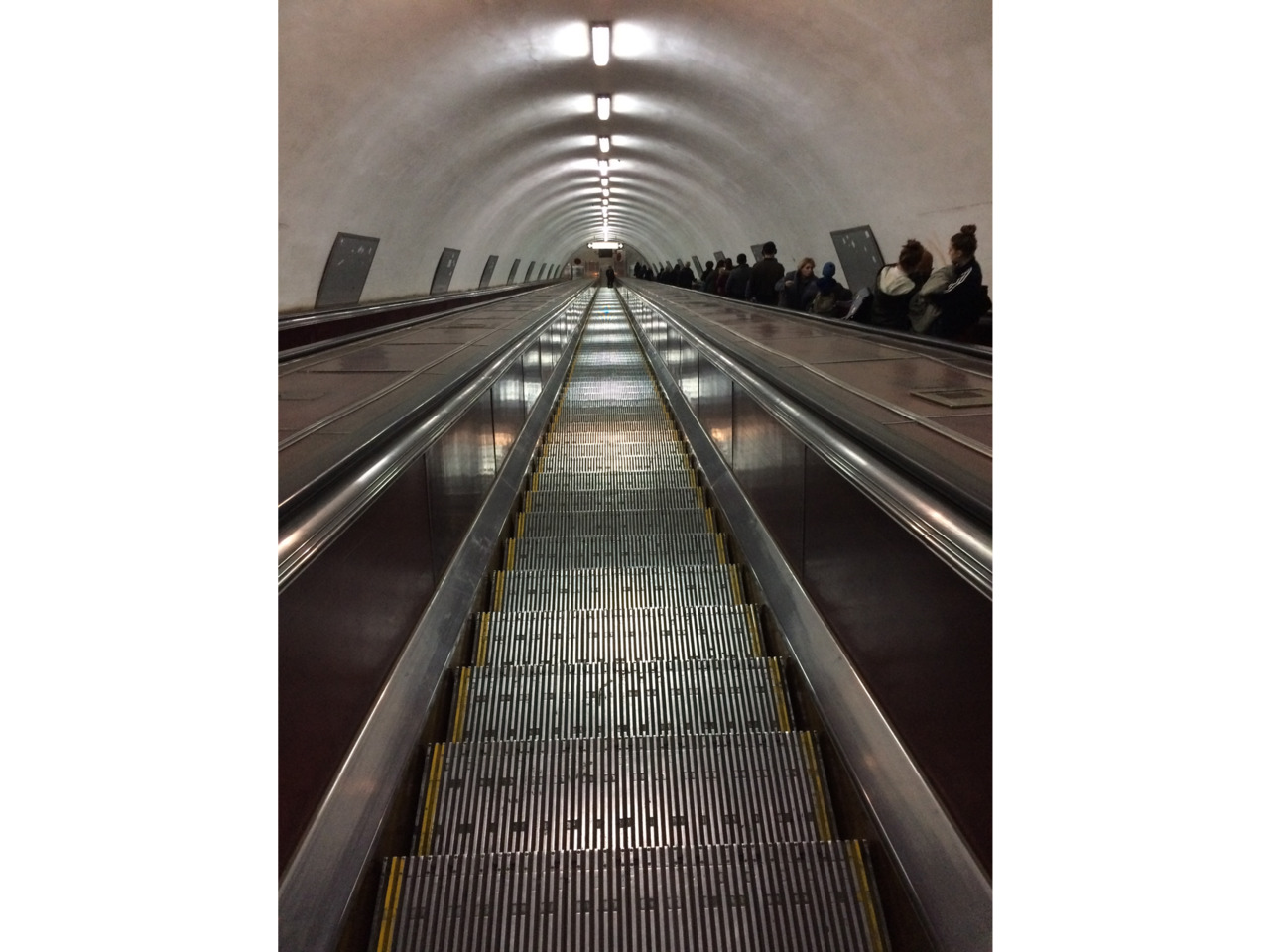
At the same time, if you are in Tbilisi for a short while, and you do not need a memory card, the metro employees will offer you to join one of the passengers who will guide you through their card for the same 50 tetri.
DAY 2. HOSTEL
In daylight, you can take a closer look at Squirrel Hostel Tbilisi. I will immediately explain that making terraces with solid glass and rectangular windows in wooden frames is a tradition that is very common in Georgia.
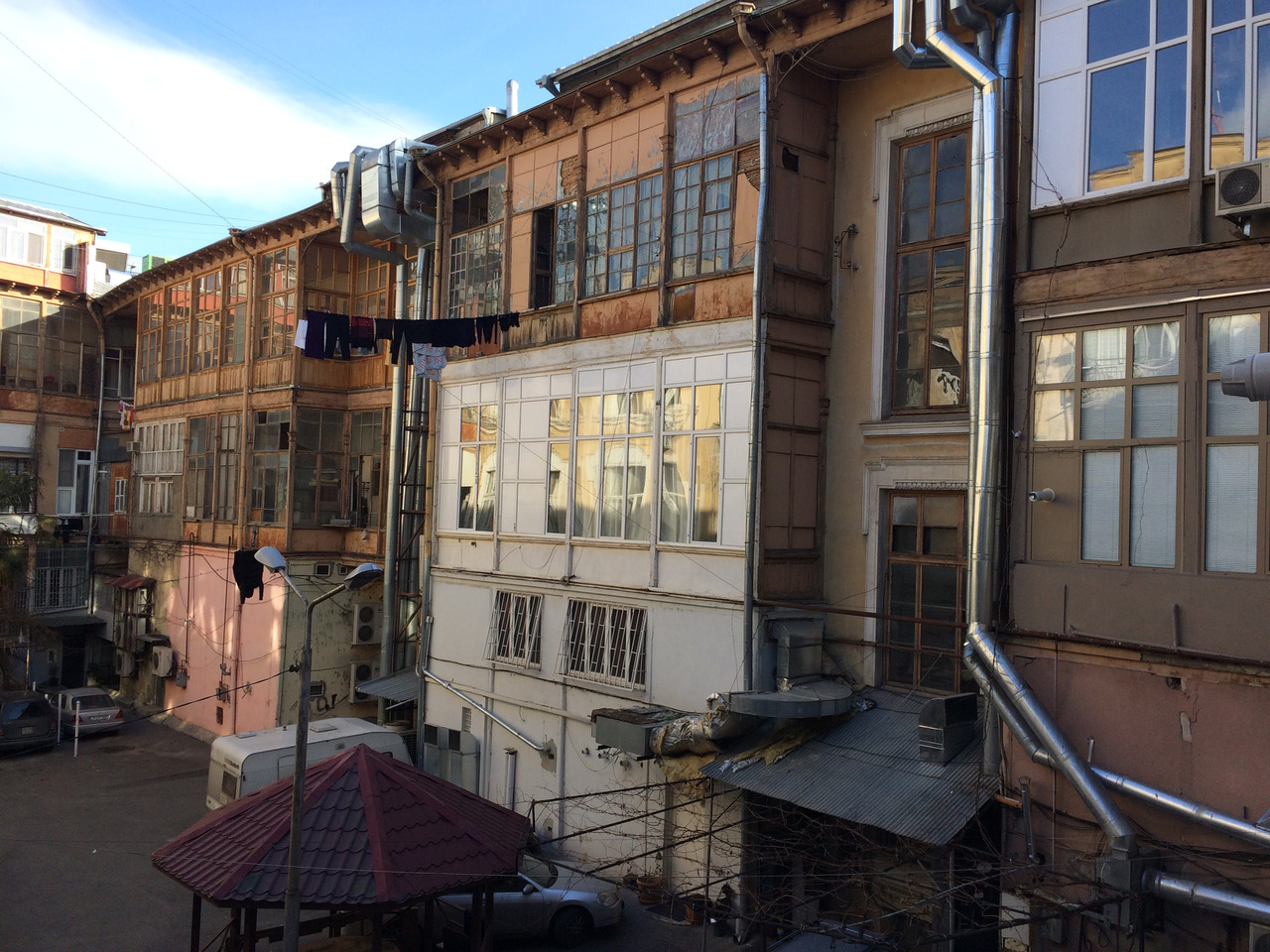
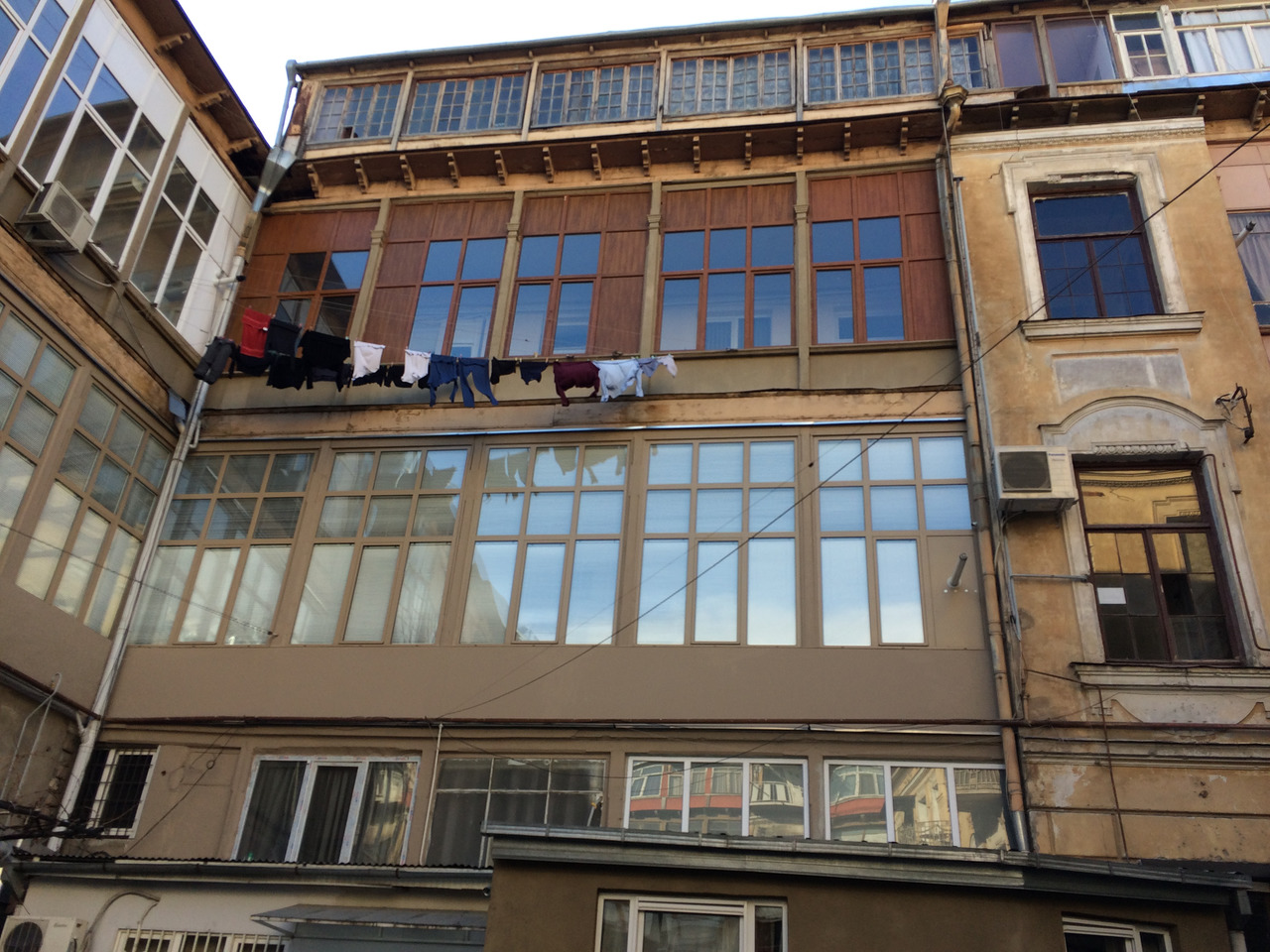
Most often, the first floor or first two floors are made of brick or stone, and the upper one is built in the form of just such a wooden terrace.
FREEDOM SQUARE
The new day provides an opportunity to learn more about the sights of the Georgian capital. Let’s start with its center, – Freedom Square.
In former times it was called the Caravanserai (Hotel Square). After 1827, the square was named after General Paskevich-Erivansky. Many called it simply Erivan Square. In 1847—1851 in the center of the square, according to the project of architect J. Scudieri, the theater and “caravan-saray” by Tamamshev were erected. It is interesting that in 1859 this theater was visited by Dumas-father himself during his trip across the Caucasus. But after 15 years the theater burned down, and more did not restore it.
After another 10 years, in 1884, the market was removed from the square, which is now located in another part of the city (on Javakhishvili Street).
In the Soviet period, the future Freedom Square was called the Square of Laurence Beria, a Russian revolutionary and once all-powerful People’s Commissar of Internal Affairs. It is known the fact that by nationality he was megrel, and was born in 1899 in the village Merheuli of the Sukhumi district of the Kutaisi province of the Russian Empire.
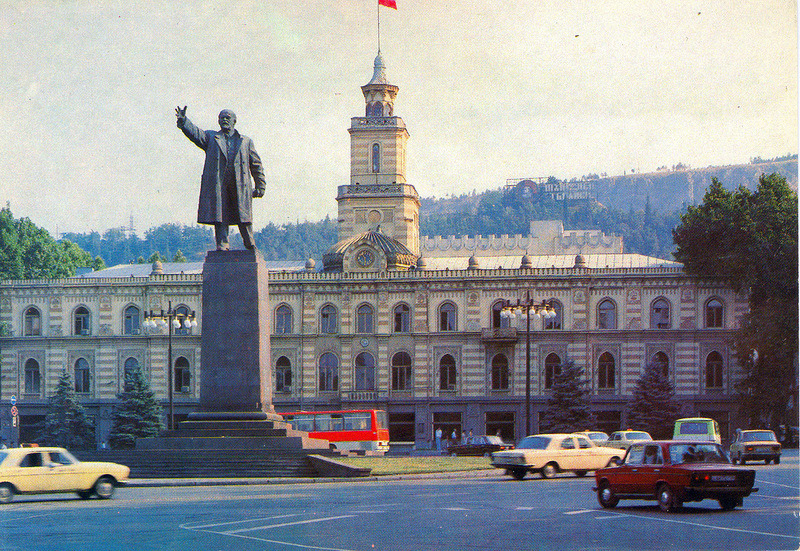
In the 1950s, after Beria was deprived of all ranks and shot, the main square of Tbilisi began to be called Lenin Square, and here a monument to the leader was erected.
In the 1950s, after Beria was deprived of all ranks and shot, the main square of Tbilisi began to be called Lenin Square, and here a monument to the leader was erected.
Back in the 1930s. The caravan-sarai from the square was finally cleaned, its territory expanded and partly rebuilt. The Pushkin Square also adjoins the square, and the stands built here for the party leadership in 1934 were demolished in the 1950s.
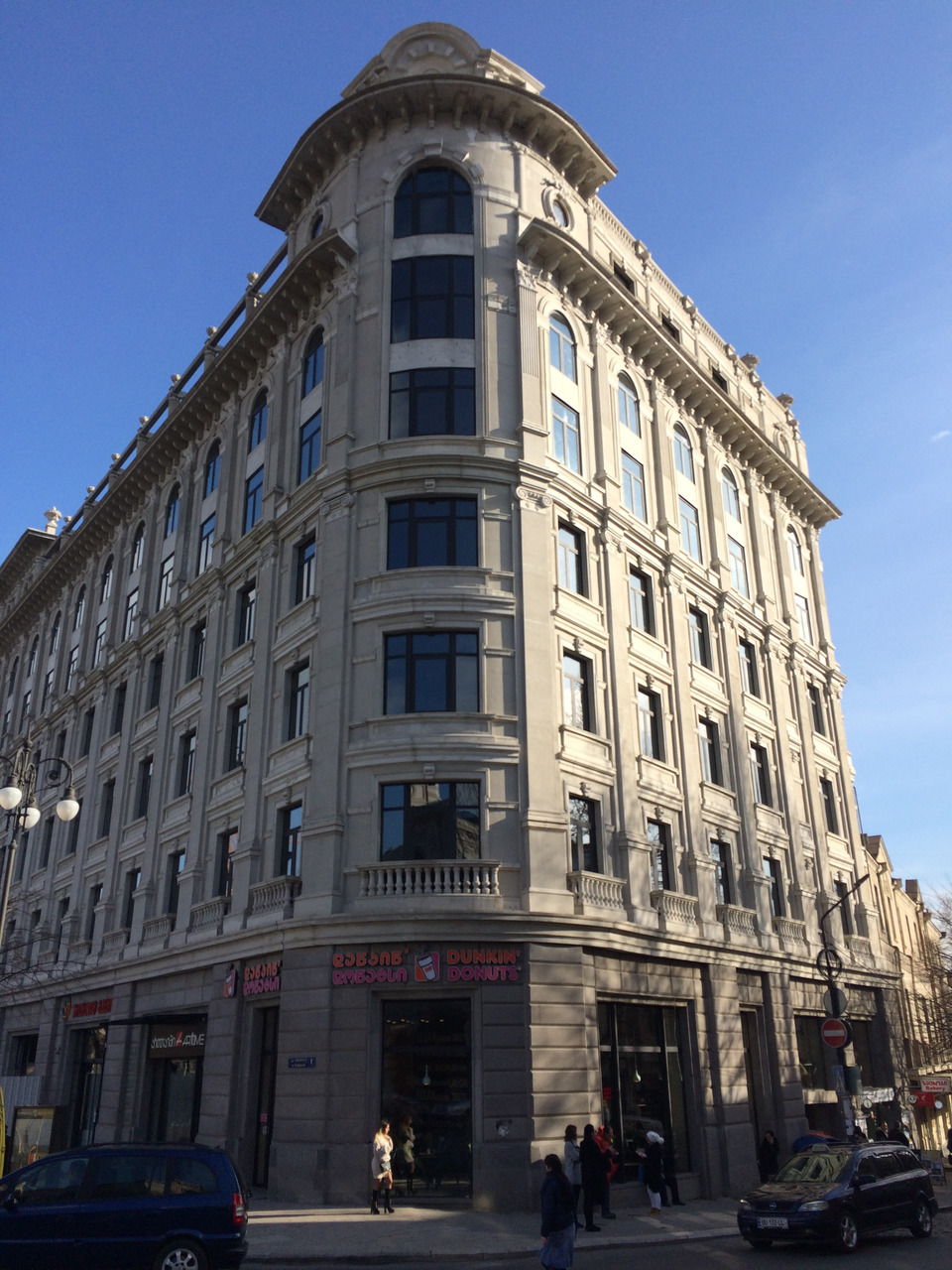
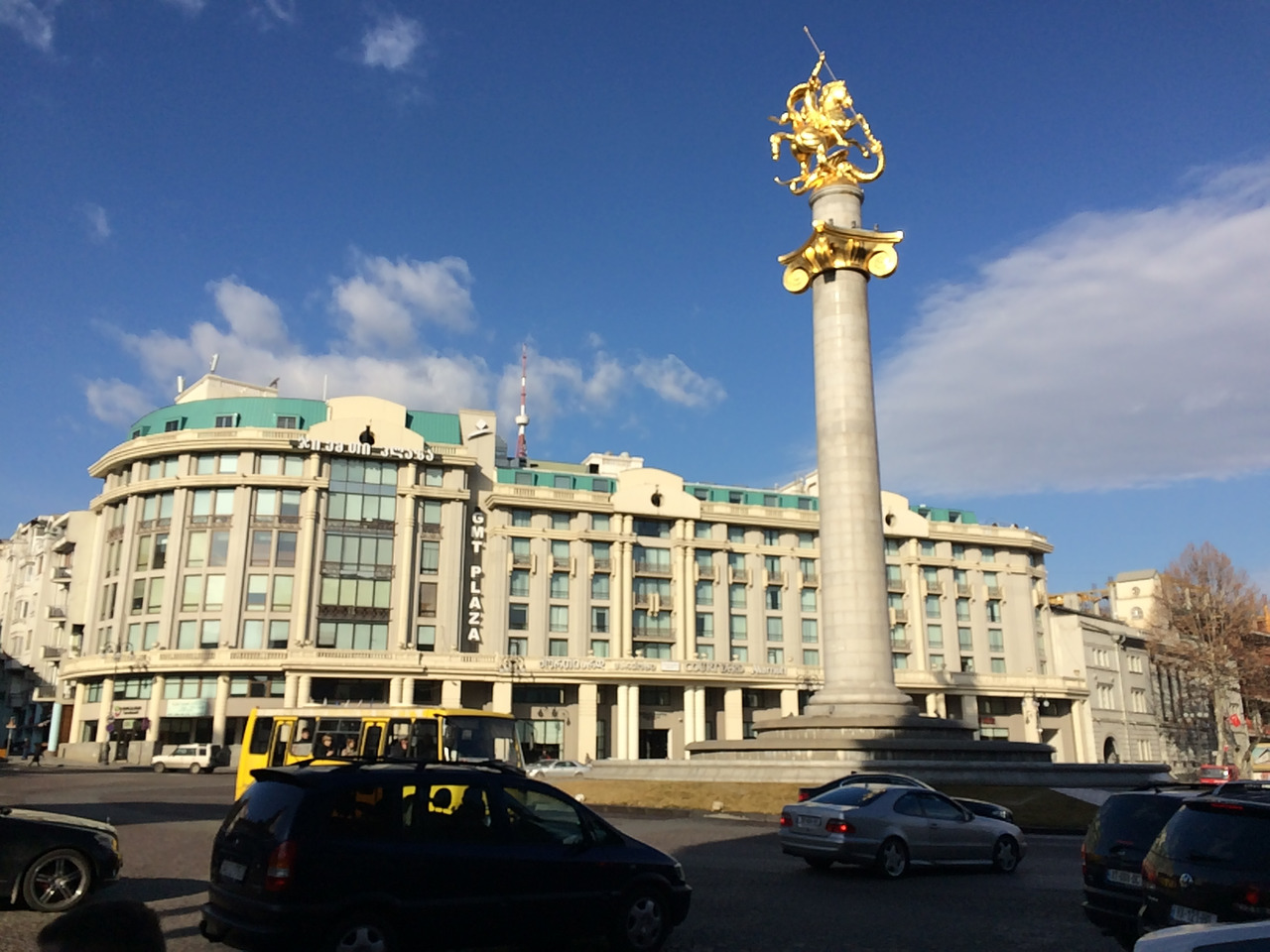
It was in this square that thousands of demonstrations of the Georgian people for independence took place. Perhaps this is what predetermined the future name and ideological content of this place in the space of the new Tbilisi.
In 2005, the square was a place to celebrate the 60th anniversary of the end of the Second World War. It’s hard to believe, but then about 100,000 people gathered in this square, in front of which were the US President George W. Bush and Georgian President Mikhail Saakashvili.
ST. GEORGE
In the center of Liberty Square is a monument created by Zurab Tsereteli dedicated to the independence of Georgia. The monument was opened on November 23, 2006.
The height of the monument is 33 meters, and the figures of the killing dragon George the Victorious are 5 meters.
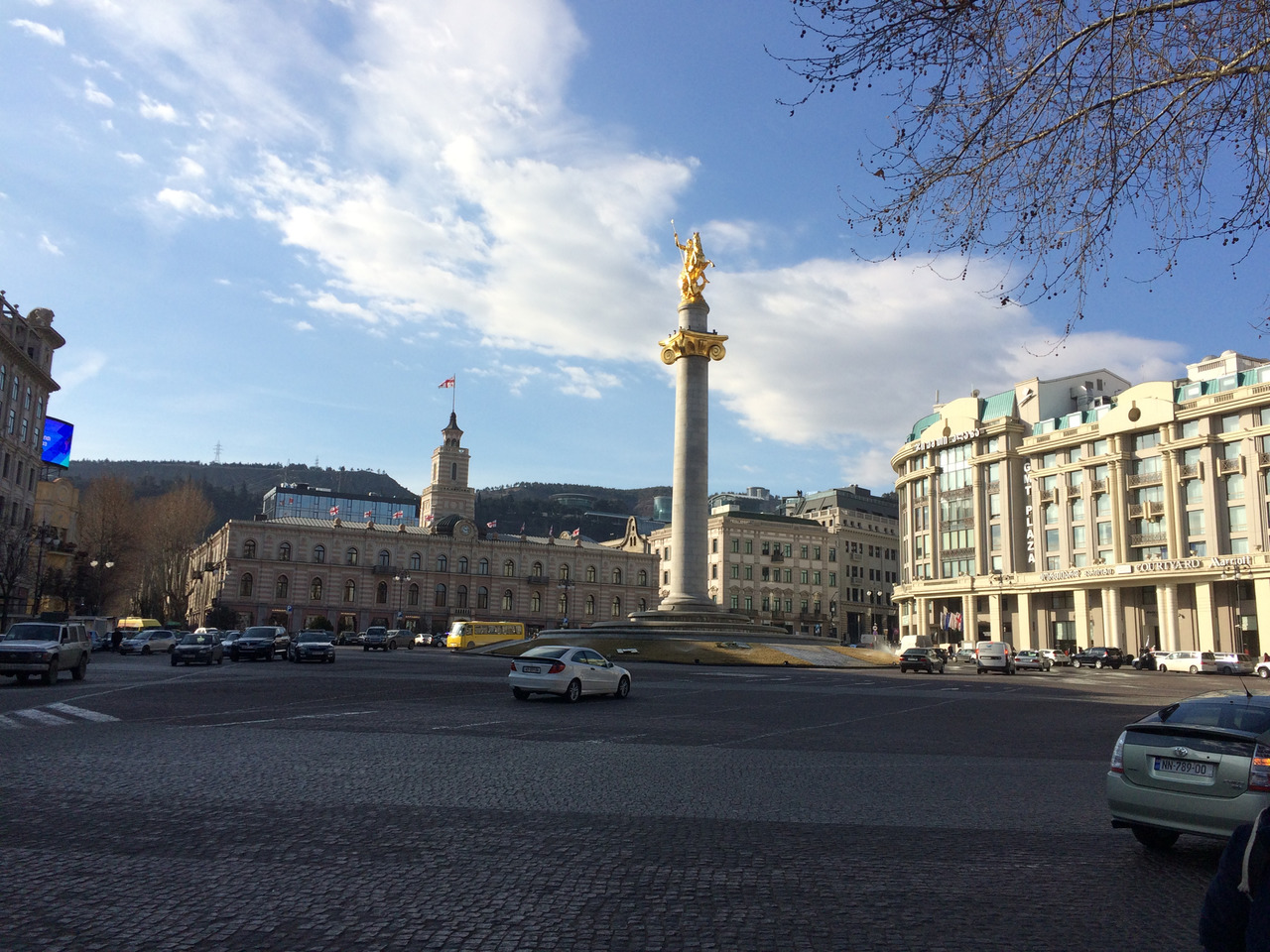
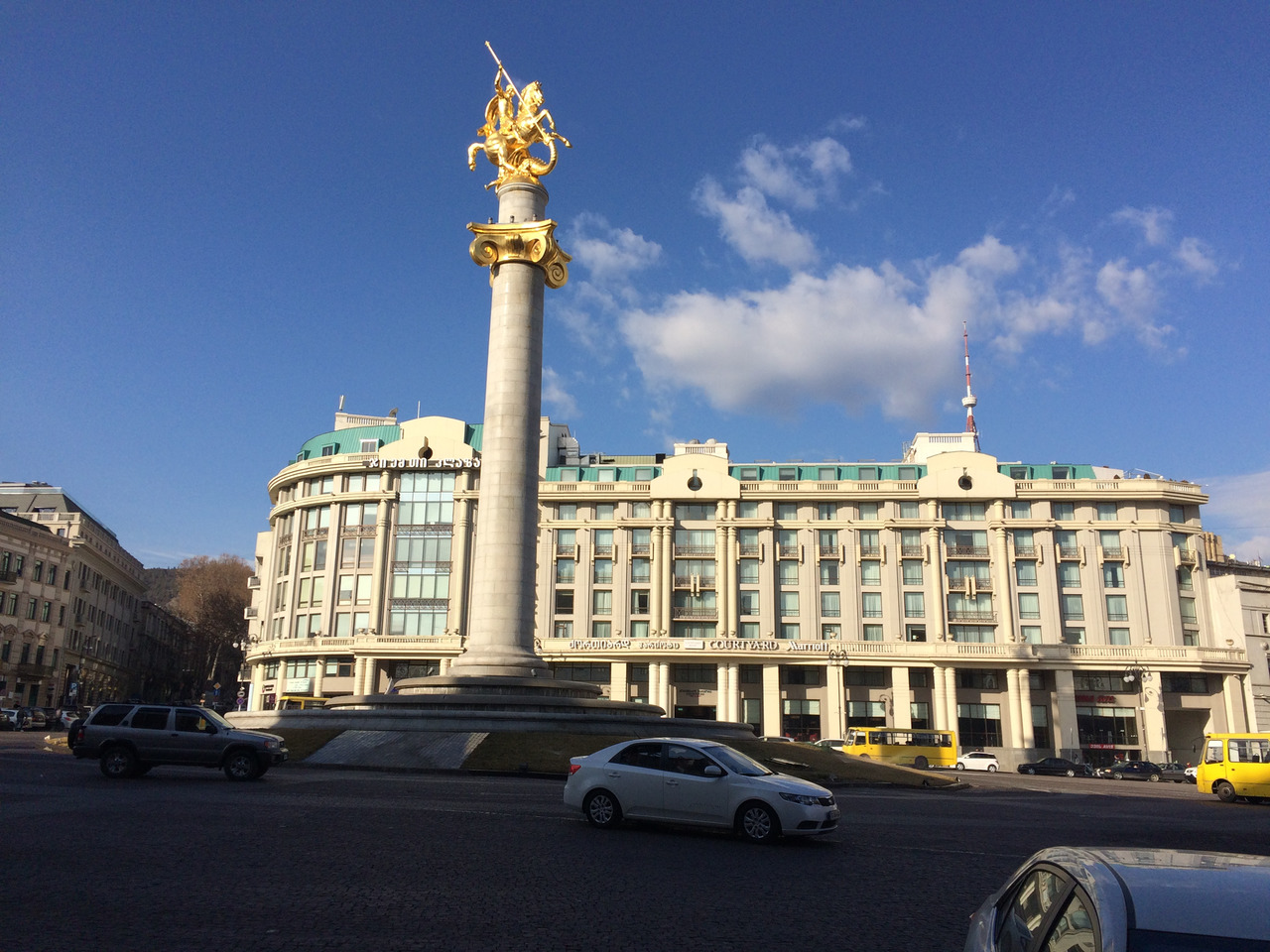
Recall, St. George — the heavenly patron of Georgia. St. George was born in Cappadocia, in a mountainous country, much like Georgia. Every year on November 10 (23) the Georgian Orthodox Church celebrates the sufferings of the Holy Great Martyr and Victorious George. On this day, the Holy Great Martyr was subjected to a wheel — torture, not inferior in cruelty crucifixion on the cross. The image of St. George, the killing dragon, is a symbol of the victory of the holy Christian Church over evil and sin.
Tbilisi City Hall
The oldest building of the Liberty Square is the city hall, built in the 1840s, and rebuilt in the 80s of the XIX century. This is the former city government and the City Duma.
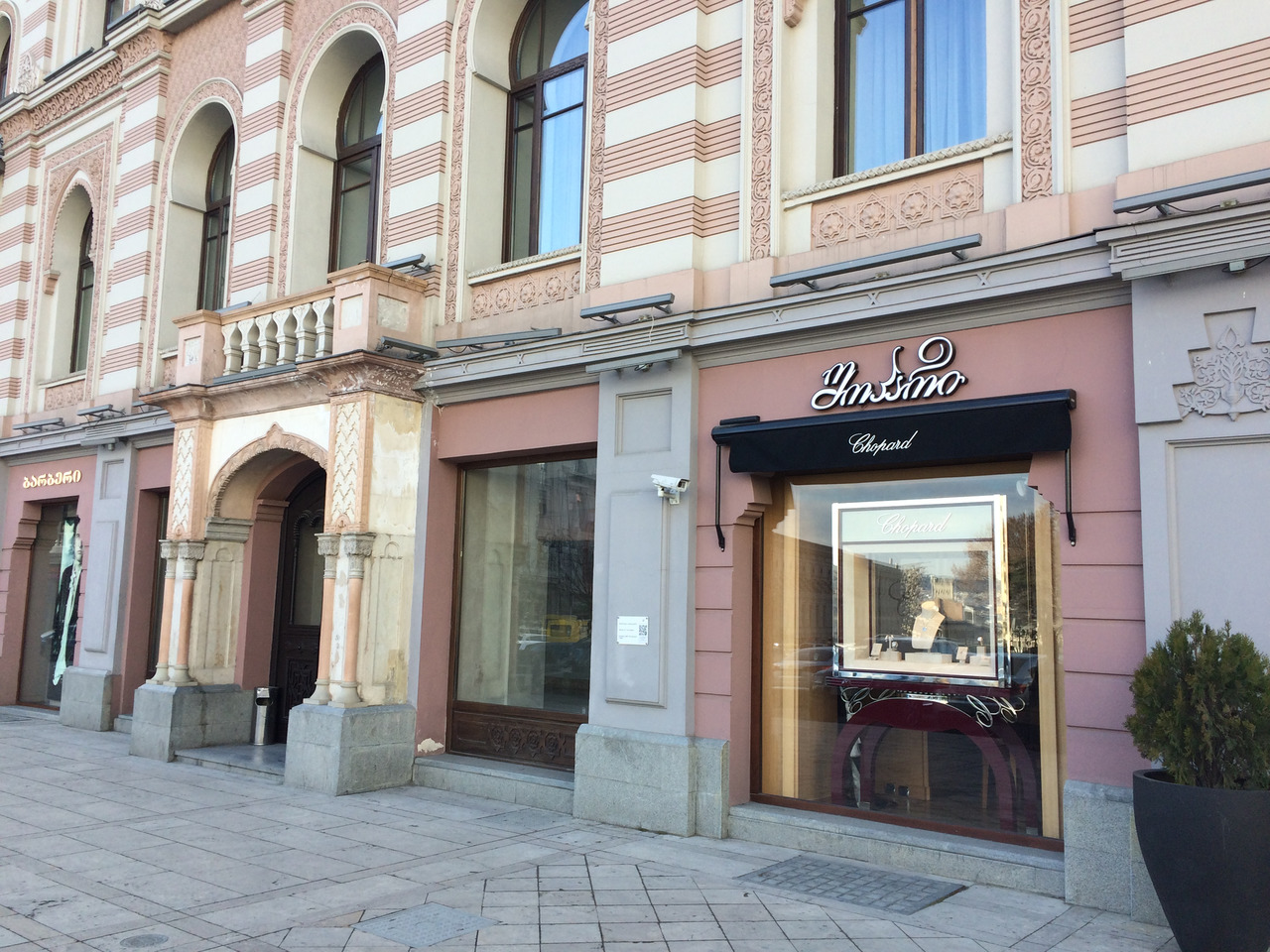
Бесплатный фрагмент закончился.
Купите книгу, чтобы продолжить чтение.